- Need Technical Assistance? ieaconference2023@getvfairs.io
The General Assembly of Affiliates and Chapters (GAAC) Meeting is the official forum for participation by the IEA’s worldwide Affiliates and U.S.-based Chapters. Two representatives from each Affiliate and Chapter are invited to gather during to share information about their operations and events and to learn from and engage with each other and representatives from the IEA Board concerning policies and activities of the IEA
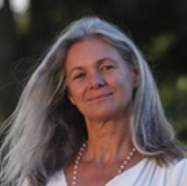
Marion Gilbert
When we become aware that all our experiences and impressions are produced in the body we begin to understand that the body as a place of observation and study is preeminent.
Without the body, we cannot have a conversation, a philosophy, a belief, an insight, an emotion, nor a sensation, or movement.
To believe that the body is without a higher state of intelligence is also something to contemplate on and observe the received states of consciousness as an arising of distinctly different experiences in the body from the more commonly experienced states.
Exploring the wisdom of the body, and what the obstacles are to receive knowing, feeling, and sensing from a somatic perspective is the invitation for this day.
We will highlight a Three Centered experience by igniting the somatic lens of perception consciously, informing the emotional and mental lens of perception.
We will practice turning our attention inward and play with inner and outer reality through:
Join us, in experiencing the way we bring something to the reality we create as we touch into our essence and our conditioned Enneagram Type expression. We will demonstrate how movement and stillness can relax our automatic defensive contractions and take the wind out of the sails of the reactivity of our types. We can then be free to open and choose a conscious response to the inner and outer world we live in. This will allow us to have the possibility to unite and ignite our lights, so we can light each other’s fires. In this divided world we are in deep need of reconciliation. Let’s practice together what that feels like inside of ourselves and share it with each other
Ben Campbell
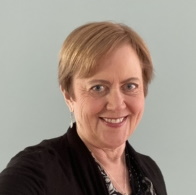
Lynda Roberts
This session will introduce the history of the Enneagram and the purpose of the Enneagram. Where did the teachings come from and how did they emerge or arrive in their present form? What does it mean to be a “three-centered being”? What are the functions of the Head, Heart, and Body/Gut? How do the 9 personality styles emerge from and relate to the Three Centers?
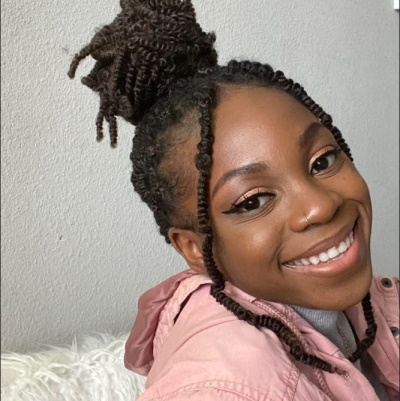
Dayo Ajanaku
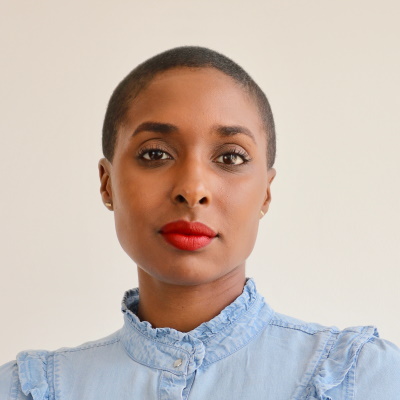
Danielle Fanfair
This session will go deeper into the Body Center and the three body-based personality styles at points 8, 9, 1. What are the characteristics and functions of our Moving Center? What are some of the distinguishing features of the 8, 9, 1 personality types
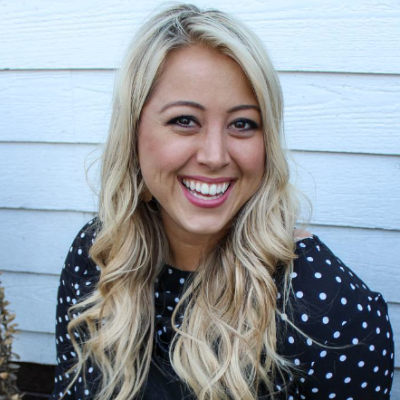
Caroline King
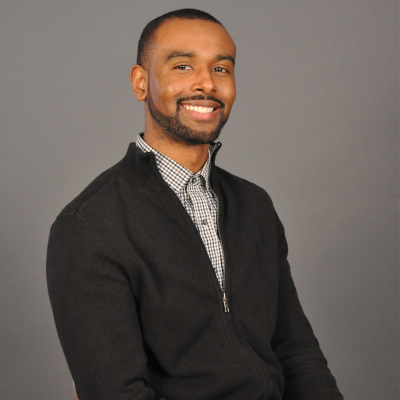
Milton Stewart
This session will go deeper into the Heart Center and the three heart-based personality styles at points 234. What are the characteristics and functions of our Feeling Center? What are some of the distinguishing features of the 2, 3, 4 personality types?
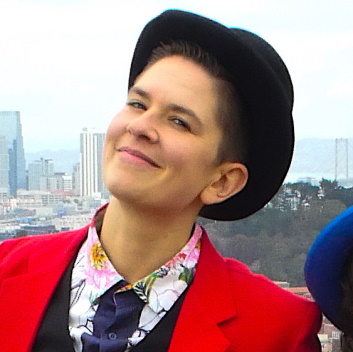
Sage Dames & Musicians
The Dances of Universal Peace are simple, meditative circle dances that weave sacred phrases from many spiritual traditions with movement in unison. These prayers for peace are done to unite our inner worlds and ignite transformation of the world that we share.
The Dances of Universal Peace circle leader Sage Dames (they/ them) was born in San Francisco, and lives here today as a parent, activist, artist, and musician. They have been leading the local Dances of Universal Peace circle for 8 years, with the guidance of Perry Wali Pike. Sage has been deeply inspired by Sufi teachers and community in South America, as well as earth-based pagan ritual here in the Bay Area. They enjoy the ‘cross pollination’ of spiritual practice, and seek to hold space that honors the lineage of each practice in its own right.
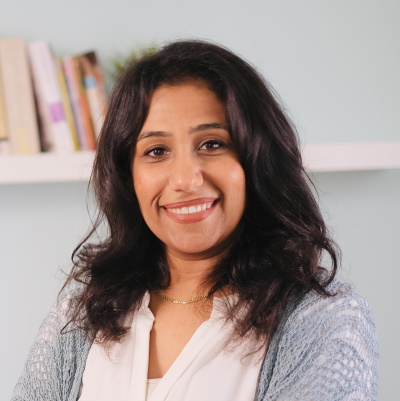
Dina ElBadry
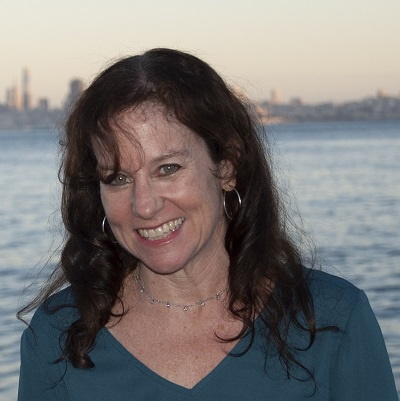
Beatrice Chestnut
This session will go deeper into the Head Center and the three head-based personality styles at points 5, 6, 7. What are the characteristics and functions of our Thinking Center? What are some of the distinguishing features of the 5, 6, 7 personality types?
Ben Campbell

Dayo Ajanaku

Caroline King

Dina ElBadry
In this panel the Discovery Track presenters will share their experience and advice on how the Enneagram can be more accessible to diverse audiences. How do we spread and reach communities that are commonly overlooked with the Enneagram?
Reception food & cash bar — This special event welcomes conference attendees from around the world. Join us for a social evening of reuniting with old friends and making new ones. Enjoy light fare and a cash bar. Keep an eye out for the Engagement Committee folks — they are eager to welcome you to the conference.
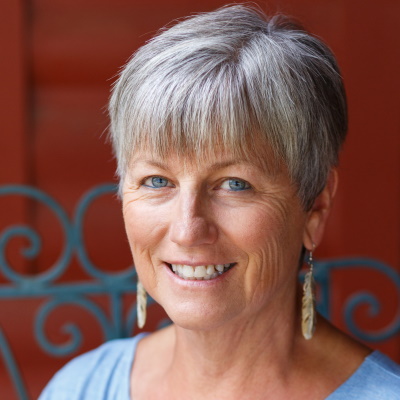
Nancy Markow
Being in our head and heart center can come naturally during the conference. Remembering to include our body center might require a conscious choice. You are invited to start your day with gentle stretching as part of a three-center centering practice.
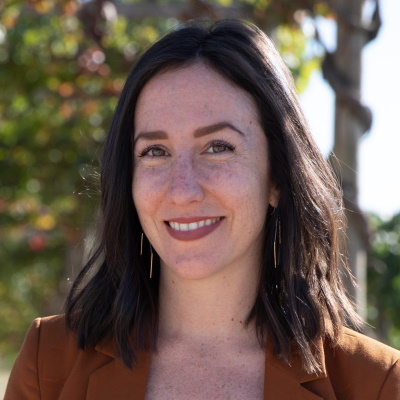
Valerie Wanamaker, M.A., LCSW
In three consecutive days, we will be focusing on the instincts. How do instincts show up and influence our being and the way we live our lives?
Different teachers call these three instincts differently, but they could agree that instincts could be understood as driving life forces. We will not be discussing what they are called, we call them Self-Preservation, Social and Sexual (One-to-One), but we will focus our attention on how they can influence us.
Each session will have a trained moderator talking to volunteers which lead their lives with their respective instinct. We will get to know what their initial thoughts, sensations and feelings could be in life situations. Why do they choose what they do to make them feel safe and content when listening to their lead instinct?
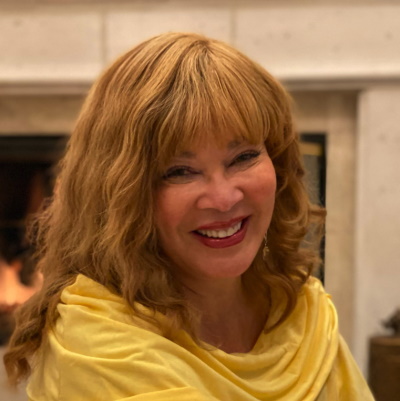
Deborah Threadgill Egerton, Ph.D.
In our opening Keynote, Deborah Egerton introduces the concept of employing the Enneagram as the ultimate map to guide and unite us in a world divided. We will look at the gifts of each of the 9 points of the Enneagram represented as defenders, healers and bridge builders, as we discover the unique unifier at each point. When discovered and embraced each gift unites us and enhances our capacity to love, support and move together toward higher ground, as intended, as one.
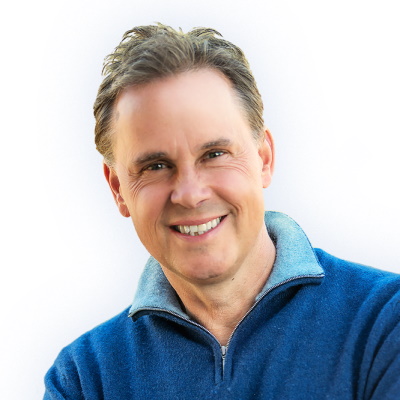
Robert Holden, Ph.D.

Deborah Threadgill Egerton, Ph.D
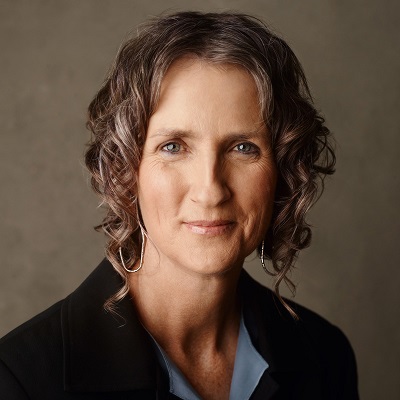
Susan Olesek
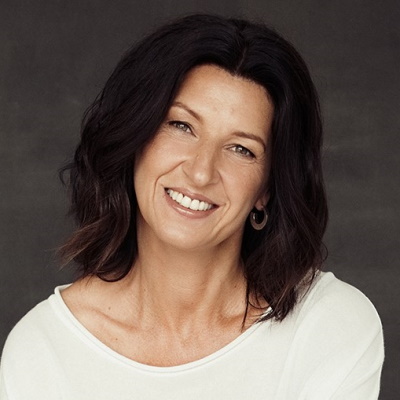
Elita Moiseja
“Activism is my rent for living on the planet,” said Alice Walker, novelist, poet, and social activist. What does activism mean to you? And how can the Enneagram help you to practice your activism in an engaged, mindful, and loving way in the world today? Join Robert Holden [host] and a panel of Ennea-activists that include Deborah Egerton, author of Know Justice, Know Peace and Susan Olesek, founder of the Enneagram Prison Project and Elita Moiseja.
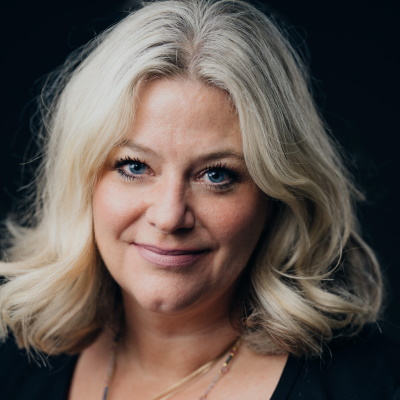
Catherine Bell, MBA
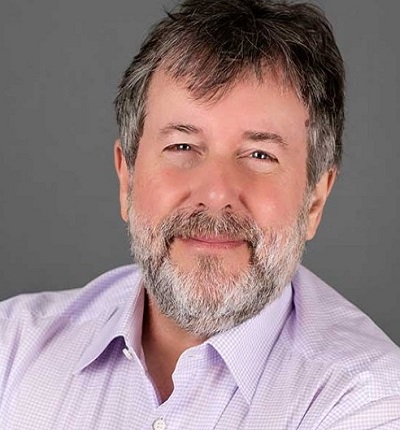
Russ Hudson
What is creativity? Creativity is something that keeps us united, and it influences everything from education and societal change. The actual process is mysterious but there are things we can say about the result. It is our ability to generate and recognize ideas, alternatives, and possibilities in solving problems, communicating our inner landscapes to others and entertaining ourselves and others. Innovation, the novelty in creativity, can be seen as an idea that has transformed into practical, tangible reality - something new and beyond cutting edge.
The Enneagram provides us a specific lens into creativity and how we can embody every point when we are in flow. While we may have our natural default patterns, creativity invites us into embodying all types.
In this session, Catherine Bell will ask Russ Hudson investigative questions to unearth
the elements of creativity and will review the different Enneagram points from a practice perspective.
Our Agenda:
A process to activate your creativity.
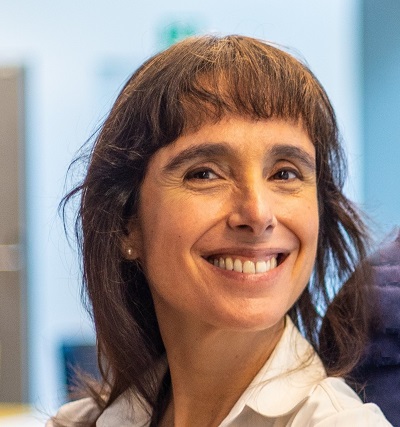
Claudia Nario, Ps, MSc, PhD©
A JOURNEY TO THE SEED, or how the Enneagram types came to be 30,000 years ago. Nine human beings sitting, united, around the same fire. Each one carrying a mutation that was key in the development of Homo sapiens as a species.
Nine possible responses to the challenges we face. Nine distinctive patterns of processing at the brain level. Nine behavioral trends that were key to our survival and that have been perpetuated for millennia.
Nine talents contributing to our adaptation and evolution as a species, each of them holding the potential to project us into a better future.
A plausible, scientifically based explanation of the origin of the nine personality types: WHY they are the way they are, how they came to be, and why they were preserved.
A fresh look at the Enneagram, based on recent findings in the fields of behavioral biology, genetics, and evolutionary psychology, and a hypothesis about the origin of Enneagram types at the dawn of our species.
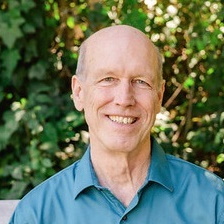
Peter O'Hanrahan
The Enneagram is a holistic system: each type structure is based in three centers of intelligence: body, heart, and mind. We usually start with the head center, learning about the nine types and how to develop mindfulness. But the heart and body centers are just as important for our growth and development. Much of life is lived through our instincts and emotions.
Working for many years as a body therapist using the enneagram, I have learned a lot about the neurobiology that forms the basis for each personality type. These patterns are not rigid categories, but just as there are habits of mind and emotion for each enneagram type, there are familiar somatic qualities here as well.
In this workshop I will talk briefly about subtypes and somatics and pose some questions: How can we sense our instincts and subtype? What about underdoing or overdoing? How does survival anxiety affect our instinctual activity? What are the signals from our body?
I'll also lead an inner practice, have people get in type groups to discuss their experience of their subtype and how this is influenced by their neurobiology. And we'll get back together briefly to hear what people have to say.
Sam E. Greenberg, PhD
The intersection of sexuality and the Enneagram is an emerging topic in the Enneagram world. As interest in this “sexy” topic increases, resources are needed to guide teachers and practitioners to understand how type and subtype impact the sexual sphere. It is in this context that a research informed framework on sex and the Enneagram offers a unique contribution.
In this session, we will talk about the ways type and dominant instinct impact our sexual desires, thoughts, and proclivities. Who likes what and why? We’ll find out. The presenter will share the results of a large study on the Enneagram and sexual desire, and we will discuss how patterns observed in the research are at play in our own lives.
Specific topics covered in this session will include partnered sexual desire, solo sexual desire, sexual desire cues, frequency of sexual thoughts, sexual assertiveness, and sexually explicit materials use; and how these differ across type and subtype. How might understanding the Enneagram and sexuality support us to transcend type and create experiences of ecstatic union? How might we use this knowledge for personal and clinical transformation?
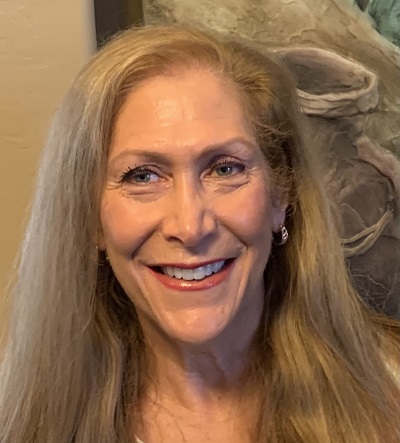
Renée Siegel, MA, LISAC, MAC, PCC
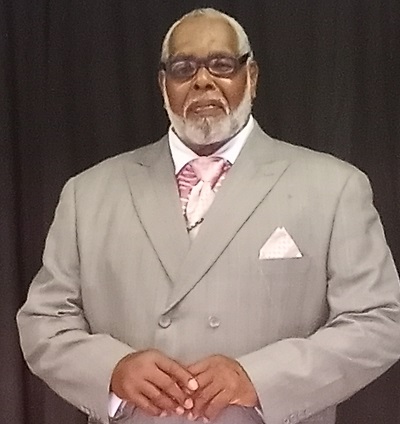
Alex Senegal, EPP Ambassador
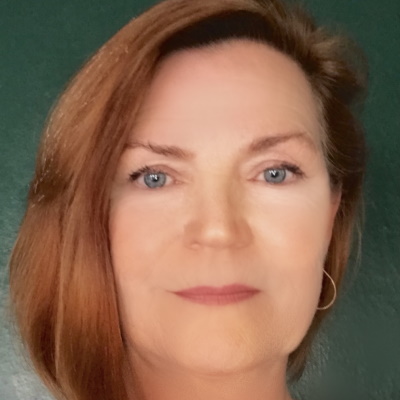
Jenner Kay
Both the Enneagram and 12-Step community acknowledge how vital both psychological and spiritual work are.
Each Enneagram type resorts to an unconscious pattern of responses. We tend to live out the saying, "Insanity is doing the same thing over and over and expecting different results."Freedom is available by uniting the 12-Step principles with our Enneagram work. While being receptive to our Higher Power, we observe our mental, emotional and behavioral patterns, and find an alchemical transformation. Together they offer us the opportunity to relax the Ego and return to Essence.
Come and profit from the synergy possible coming from these two strong psycho-spiritual systems!

Beatrice Chestnut, PhD
This presentation will trace key aspects of a specific body of ancient wisdom teachings—or " Perennial Philosophy" as it has evolved over time. This " wisdom tradition" also defines the core principles at the heart of many of the world's religions. We will explore the hypothesis that the Enneagram functions as a symbol of this age-old tradition in a way that can clarify the meaning of the Enneagram as a map of transformation—and show us how we can use this powerful map as it was meant to be used—as a means of igniting truly transformative psycho-spiritual inner work.
This presentation will investigate the possibility that the Enneagram was connected to—and representative of—this ancient teaching. By tracing evidence of certain commonalities that define this " wisdom tradition" in key texts related to Christian Hermeticism, Jewish Mysticism, Sufism, and the works of some of the key historical figures it influenced over time, I will highlight the main holistic teachings that the Enneagram can be seen to symbolize. Clarifying the key defining tenets of this ancient tradition allows us to see how these ideas encoded in the Enneagram symbol allow us to access important teachings that can guide our Enneagram studies.

Susan Olesek
With a clear vision for how the Enneagram could be taught in every jail and prison in the United States and in the world, Susan Olesek founded Enneagram Prison Project (EPP) in California in 2012. Since then, EPP has established programming in correctional facilities around the world, including California, Colorado, Illinois, Minnesota, Belgium, France, the United Kingdom, Canada, and soon to be Australia.
In this presentation, IEA attendees will engage with and learn from members of the EPP community, including EPP's Founder, as well as some of our newest EPP Ambassadors who learned the Enneagram while incarcerated and are now EPP Board Members, Faculty, staff, and guides. You will hear about what EPP is doing to impact our in-custody student's ability to live into and practice greater self-awareness, self-regulation, and self-compassion.
We will explore how EPP is changing the way people are doing their time on the inside, and affecting change on the outside. Attendees will be invited to connect with the heart of EPP through a raw conversation with EPP Ambassadors about their personal experience finding inner freedom, their journey to successfully demonstrating "suitability"to the parole board, and integrating their inner work in real life as returning citizens.
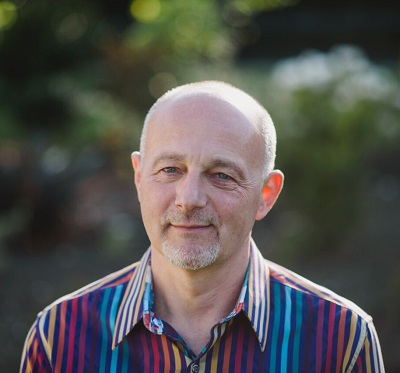
Simon Goland, Ph.D., PCC
Why are you here? What has your life been preparing you for? Within each Enneagram type, there are higher qualities of the soul and the direction of integration/presence, which are going to be used as the foundation in this inquiry and exploration. This workshop uses the combination of the Enneagram and a proprietary Why Me?© Framework as a roadmap to help you uncover your individual and unique life purpose and calling.
We will embark on a journey that blends theory, outline of the Why Me?© Framework and how it operates, stories, and experiential exercises and inquiry to help connect the dots among several threads of your life, guiding you to answer these two timeless questions. Using the Enneagram as a backdrop, you will engage in a series of individual and small group activities which will provide you with insights and clarity as you inquire into the trajectory of your life, your calling, and your life purpose.
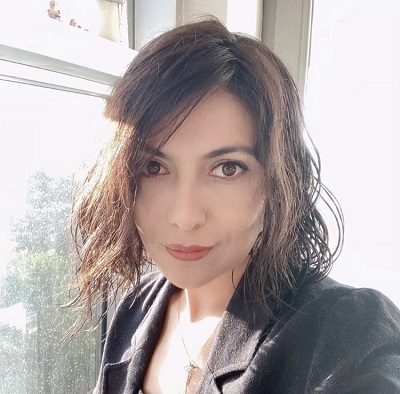
Ozgu Hafizoglu, PhD
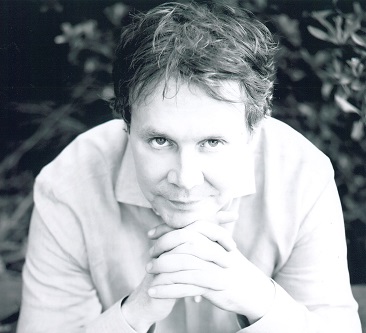
Don Hudson
This science-based hypothesis on the cognitive science, neuroscience of the enneagram is based on Dr. Ozgu Hafizoglu's doctoral and post-doc studies of 500 artists, architects and designers and Don's 27 years as a scientist and journalist studying the enneagram in his subjects of politics, science and sports. This presentation will explain the basics of how each type processes information from the body, heart and head centers.
Their graphics, slide show and whiteboard presentation will show how each type typically thinks through established neural pathways, and how understanding this information will help each of the nine types move from fixation to freedom. This presentation will show the rigorous scientific method behind this research, how the centers operate in relationship to each other in the human brain, and the important next steps to move enneagram from hypothesis to proven scientific model.
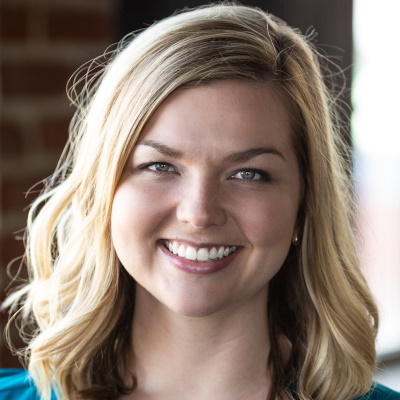
Elisabeth Wurm, MA
Improvisation is ego work. So is the Enneagram. How do the two intersect? Learn about how Ego shows up for the Nine Types while doing improv in this interactive session. First, we will explore the basics of improv: the theories of "yes, and€¦"and group mind. Then, we will discuss hypotheses on how Ego will try to get in the way for each Enneagram type.
We will practice some beginner improv exercises, and we will use non-judgmental self-observation to notice our impulses, fears, desires, and actions. We will explore how the use of emotion (mad, sad, glad, afraid) enhances improv scenes, and how each Type interacts with those emotions in the moment.
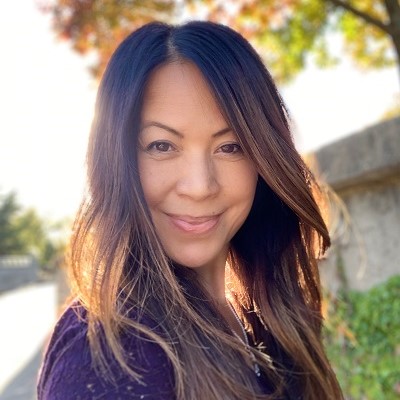
Rev. Nhien Vuong, J.D., M.Div.
Sam E. Greenberg, PhD
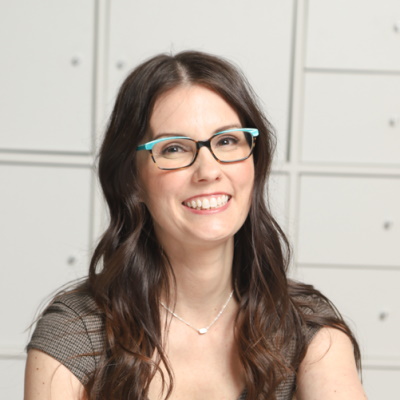
Lyndsey Fraser, M.A., LMFT, CST

Valerie Wanamaker, M.A., LCSW
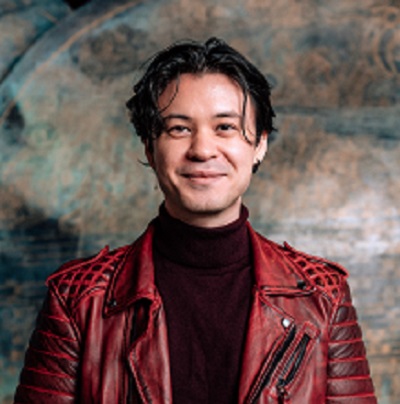
Dace Mars, M.Ed.
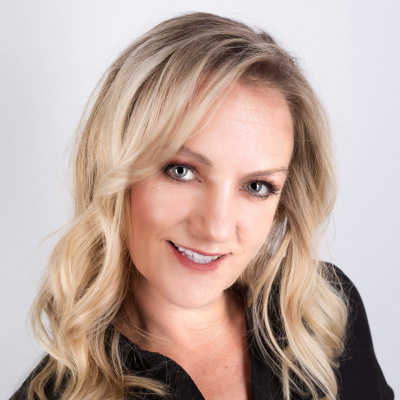
Mysti Rainmaker, M.A., LPC
Dr. Frederik Coene, Ph.D
"Enneagram After Dark"is a two night after-program series exploring the intersections of the enneagram & sexuality. Hosted by the Enneagram & Sexuality Enneagroup, night one will feature a dynamic panel discussion among the interdisciplinary group of enneagram professionals and 'sexperts', with an emphasis on how the enneagram lens on sexuality has transformed their lives and how the nine ego-distortions create both opportunities and challenges in one's sexual experience.
This session will also provide an opportunity for participants to raise any questions on the topic and to encourage a candid and lively dialogue among panel members. Night two will feature an interactive session with embodied activities that provide a taste of the various ways we can healthfully incorporate sexual energy & sexuality into our personal development work to promote psycho-spiritual growth, with a focus on the three instincts. After each session, we hope that participants will feel inspired, opened, and invited to carry their gained insights and energy through the rest of the conference and then beyond into their personal, professional, and greater community work.

Nancy Markow
Being in our head and heart center can come naturally during the conference. Remembering to include our body center might require a conscious choice. You are invited to start your day with gentle stretching as part of a three-center centering practice.

Dace Mars, M.Ed.
In three consecutive days, we will be focusing on the instincts. How do instincts show up and influence our being and the way we live our lives?
Different teachers call these three instincts differently, but they could agree that instincts could be understood as driving life forces. We will not be discussing what they are called, we call them Self-Preservation, Social and Sexual (One-to-One), but we will focus our attention on how they can influence us.
Each session will have a trained moderator talking to volunteers which lead their lives with their respective instinct. We will get to know what their initial thoughts, sensations and feelings could be in life situations. Why do they choose what they do to make them feel safe and content when listening to their lead instinct?
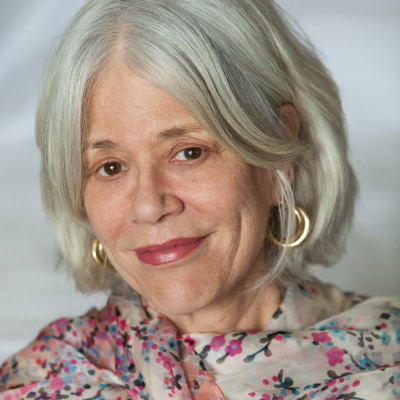
Ginger Lapid-Bogda, PhD
Today, teams are everywhere. There is almost nothing as stressful as working on a dysfunctional team, nor as exhilarating as being part of a high-performing one. But do great teams just happen magically? We can actually create great teams using the Enneagram integrated with principles and practices from team dynamics. The core principle is that all teams need to go through four predictable and sequential stages of team development, addressing the issues that present themselves at each stage. When we combine the wisdom from team dynamics with the powerful insights from the Enneagram, almost any team can transform into high-performing one.
In this session, participants learn the difference between a group and a team. And if the group has the potential to become a team, this experiential session illuminates exactly what to do and how to do this. In addition, what is the optimal role of a team leader in creating high-performing teams? What are the gifts and developmental areas of leaders of each Enneagram type at each team stage? How can leaders develop the flexibility to adjust their styles to the needs of their team? Through team-based simulation and an engaging "game", both with prizes, this session will be fun, energetic and full of learning.
Carl Marsak, M.A.
In this presentation we look at what Tibetan Buddhism has to contribute to current Enneagram theories, methods and practices. The past two generations have seen the Enneagram brought alongside and integrated with several religious traditions and spiritual paths, most noticeably Christianity, and to some extent Sufism, Judaism, Theravada Buddhism and New Age spirituality. But until Susan Piver recently published The Buddhist Enneagram, few Enneagram students have examined how Tibetan Buddhism can combine with Enneagram work to foster and accelerate our spiritual development. Usually, the transmissions flow the other way. Christians, for example, encounter and apply the Enneagram to augment and strengthen their preexisting beliefs, values and practices. Jews have done the same thing, as have the Sufis.
This certainly makes sense--we want to avoid proselytizing, and foisting personal dogma and doctrine on to others. But there are Buddhist understandings and practices that could be highly effective for our Enneagram journey. For example: aspiration and dedication prayers, bodhisattva vows, expanding our loving-kindness and compassion, contemplating the truths of impermanence, emptiness and the dying process, and understanding Tibetan methods of transformation. Format: teaching pieces, two meditations, group discussion and Q & A. Breakout triads. Handouts. Susan's book is recommended!
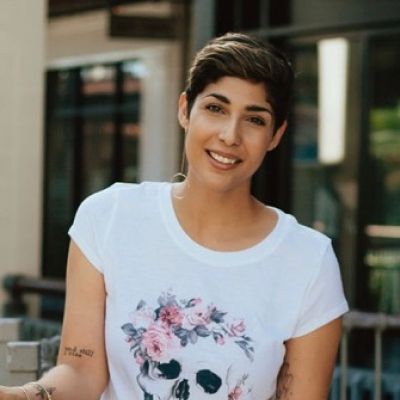
Vanessa Fernandez

Jessica Denise Dickson
In this session we will explore the landscape and cultural context of the modern Enneagram of personality, what perspectives might be missing and how this impacts our teaching and application. We will especially consider the ways whiteness as dominant culture has shaped how the Enneagram is taught, and the ways excluding marginalized voices and perspectives have limited our understanding of the system. You will leave with an invitation to reimagine how to integrate inclusion into your Enneagram work for deeper transformation and healing.
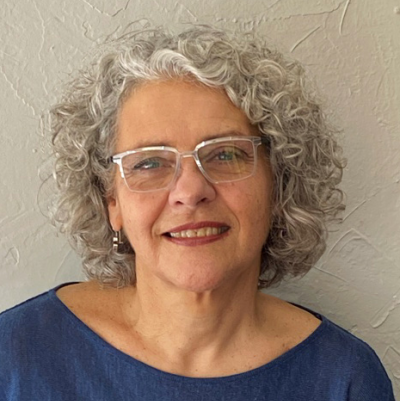
Belinda Gore, PhD
If we are to be united - intimately or globally - we are challenged to do more than understand our Enneagram type tendencies. Relating to other people in a healthy, authentic way requires us to recognize deeply engrained behaviors as they occur and to shift our behavior from habitual reactions to mindful responses.
Tools for making this significant and soul-enriching shift toward authentic, deeply contactful interactions with others are based in wisdom revealed through understanding and recognizing the object relations structures underpinning all nine Enneagram patterns.
In this workshop you will learn the object relations matrix that defines the underlying structure for each of the nine Enneagram types. Since we each have all nine patterns within us, it is valuable to understand the entire matrix. Using a few experiential exercises we will explore ways your patterns show up for you and how to recognize when they are activated. Then we will challenge the self image we have built to protect the patterns. We will practice one way to soften the self image so True Nature can radiate from us as we engage with other people as the precious beings they are
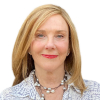
Anne Geary
How to get along with the people we love is a universal human dilemma. Relationships don’t come with operating instructions, yet as human beings we share the desire to love and be loved.
Bring your biggest relationship conflict to this dynamic and interactive session. Together, we will engage The Enneagram Approach: a powerful system integrating the wisdom of the Enneagram with the pragmatic process of the 12-Steps of Recovery.
In this workshop you will be guided to take the 4th Step of Recovery (an inventory) of one key relationship to reveal the underlying sources of your reoccurring conflicts. Through the lens of your instinctual drives: Self-Preservation, Sexual Attraction, and Social Adaptation, you will gain insight into the ways you spend and misspend your time and energy.
This process aims to transform your egoic patterns into a sacred pathway through self-awareness and empathy for others. These insights will enable you to make small behavior changes to resolve the recurring conflicts in your key relationship and through the ripple effect, enrich every relationship in your life. More simply put – Ignite Your Enlightenment Drive. Join me in this dynamic and interactive session
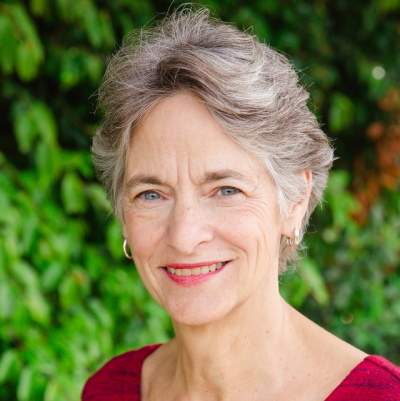
Terry Saracino
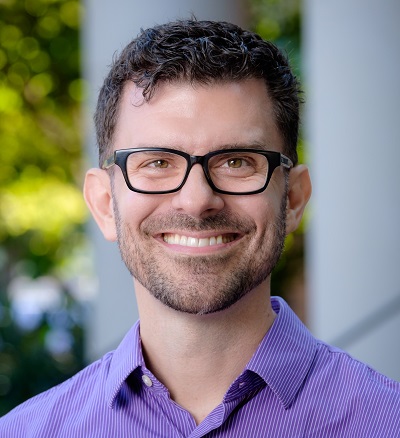
Christopher Copeland
Is a transformative experience with the Enneagram accessible for people with marginalized identities? As much as we'd like to say a resounding "Yes!”...We know this is not the case. Not yet.
The Enneagram movement has largely centered a limited demographic — white, middle to upper class, cisgender, heterosexual, able-bodied, and neurotypical people — which results in a limited knowledge of type. This is not only a justice issue for people who hold marginalized identities, but also a hindrance to fully understanding and accurately teaching the nine types.
Real transformation necessitates that we see our personality as part of our holistic human experience in relation to the systems within which we exist. You’ll hear from a panel of diverse individuals sharing their lived experience of embodying identities that are not often centered in Enneagram writing and teaching. Join us as we explore ways to integrate our intersecting identities (such as race, gender and ability) with the Enneagram.
The Narrative Enneagram, the first and only IEA Accredited Enneagram School with Distinction, is building on its long-standing commitment to transforming lives and creating a more compassionate world by intentionally centering diversity, equity, inclusion, and belonging.
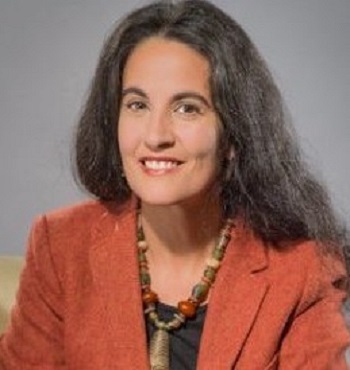
Murielle Gardret
When we share the power of coaching with our world, we have the power to ignite a lot of people, communities and make a global positive impact. Creating awareness about biases is hence important. Our personality impacts the way we work. Our preferred Enneatype and sub-type influence coaching, from the coach and client perspectives.
This interactive presentation will focus specifically about coach & client's bias in coaching. Some comments will also cover the impact of client's bias in their organizational environment.
Bias is sometimes an asset, sometimes a barrier in the coaching process, and thus in growth.
Being aware of this bias hence enables the coach and the client to grow and then to contribute to building a better world.
In this interactive presentation, we'll cover:
What are the impacts of those Enneatype biases in coaching?
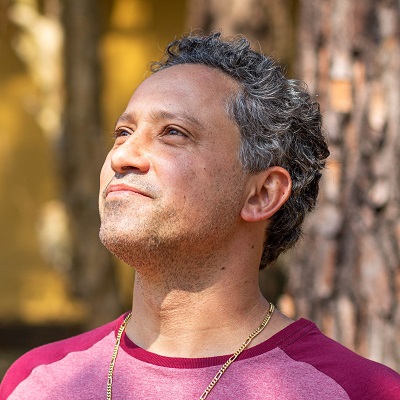
Nicolai Cursino
The Enneagram is a mandala of organization, access and alchemy of mental, emotional and physical energies.
Understanding the energetic and somatic qualities of each of the 9 points, as well as the transformation that takes place in each movement of the arrows, is fundamental so that the Enneagram can be used in a practical and operative way in the work of human transformation and healing.
Knowledge and intuition are required in order to carry out conduction work on the Enneagram mat, as well as the use of the 3 intelligence centers with somatic and energetic skills.
This workshop will take place entirely on the enneagram carpet, where participants will be led to experience the energies of the different points of the Mandala, as well as the transitions that take place in the arrows, in the vertices and in the different vertical levels of development.
We will also learn about the basic principles that each one must develop in order to carry out practical work on the Enneagram Mandala.
Nicolai Cursino has been doing energy and body work on the Enneagram mat for over a decade, in addition to teaching Enneagram healers and teachers how to do the same work.
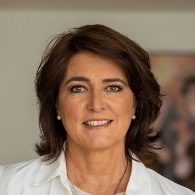
Adelaida Harrison
Beliefs generate a mindset, from which we perceive reality. I will explain how the mental fixation of each type is a belief that generates a specific mindset and how our conscious attention is directed to focus on satisfying this fixation.
By introducing the sacred idea of each enneatype, a new mindset can be generated so that instead of focusing on dangers, it will focus on possibilities of solution.
We will explain how the comfort zone is sustained and its survival goal. You will understand that there are two forces that operate to keep us within the comfort zone: motivation vs resistance to change, and what can we do to expand it.
I will share the importance of measuring processes, as well as the results obtained in a case study of 40 women with whom I have worked for 3 years. I will present conclusions about the impact of changing perceptions in people's lives.
We will talk about measurement methods that anyone can apply to get statistics that can support the resutls observed of the impact of the Enneagram in each processes carried out.
Sandra Smith
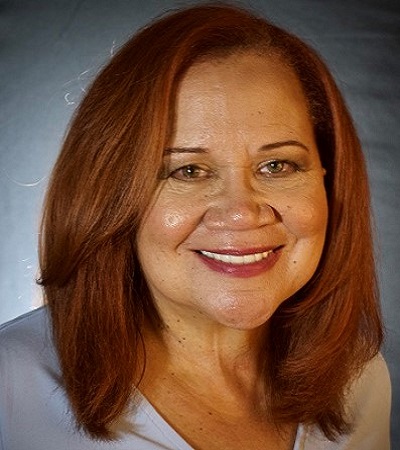
Erlina Edwards
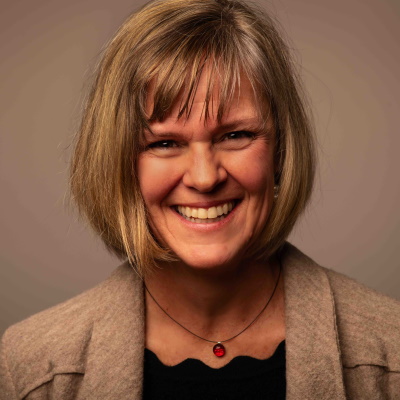
Cyndi Gueswel
This innovative hybrid workshop, facilitated by three Narrative Tradition teachers, will explore the role of our Enneagram type in how we other.
Othering is an act of exclusion. When we other, we reject part of ourselves or certain people. Othering is a turning away from or a denying that diminishes our lives, relationships, and our culture. During our time together we'll explore how our type's "sub-vice,"the vice of our security point, dances with our vice to create dualistic narratives and drive behaviors that move us into realms of othering. The role of the sub-vice isn't well known. When revealed, the insights we glean open a path to soften our engagement in othering. Our type's ego ideal and defense mechanism play a key role in maintaining patterns of dualistic thinking that engenders othering. Understanding how and when this dynamic is operating can lead us on the path toward acceptance of our rejected parts and to see the beauty of diversity. Additionally, we'll consider how our inner resources support us in dissolving othering and move us toward individual and collective wholeness.
Our time together will include dyad and triad inquiry, type group discussion, teachings, and self-reflection.
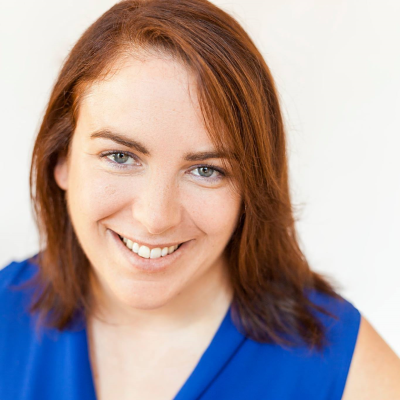
Chloé Keric-Eli
Based on the results of a master's thesis research, this presentation explores communicative practices involved in exchange of authority and power in the personal development industry. Relationships of authority and power become problematic when professionals and clients are not aware enough of the dynamics at play. Although most practitioners don't intentionally want to become a guru or gain power and authority over their clients, some ethical questions remain.
How does my own ego structure can create blind spots towards one's own 'authoritative talents'? How can I foster safe and ethical spaces? As a client, how does my own ego structure make me at risk of surrendering my personal power to the supposed 'wise guide' or 'expert' and how do I become more aware so I can maintain my own authority? Tools and best practices will be shared for personal development professionals and for clients. Acts of violence and abuse are everywhere: from micro-aggressions in the street to global wars, passing by power abuses from personal development professionals or leaders in organizations. They all participate in maintaining inequality and power dynamics through communication and in relationships. Gaining awareness supports societal systemic change.
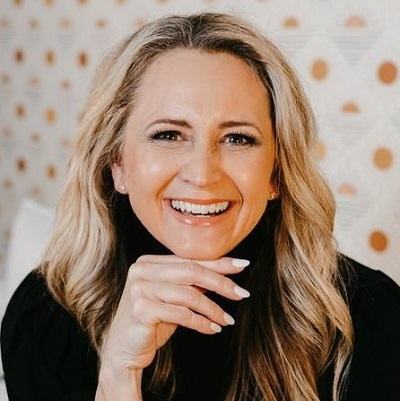
Sharon K. Ball, LPC-MHSP
Trauma: The power to unite and connect us. What do the Ukraine war, the Harvest Festival shooting, the pandemic, and the South Korean Halloween tragedy have in common?
Trauma and people are the common variables in the Ukraine war, the pandemic, and the South Korean Halloween tragedy. Where there are people, there will be trauma. Whether we like it or not, we are all connected vicariously through trauma.
This introductory workshop is for global Enneagram Mental Health Advocates, the "gatekeepers" of mental well-being. These "gatekeepers" are the people on the frontline of trauma–the people victims often find comfort in sharing their feelings with before they receive professional intervention; a parent, teacher, grandparent, coach, friend OR Enneagram coach, healer, trainer, or spiritual guide. Essentially, all of us around the world are gatekeepers to trauma, and sadly this means ALL of us have or will encounter someone trying to recover from trauma.
Trauma resolution for individuals is complex and impacted by many variables; the individual's body, heart, mind, Enneagram type, history, culture, race, gender, location, and language. Being trauma-informed also acknowledges the many inequitable systems and is responsive to the unique needs of diverse communities.
Trauma will never go away. War, shootings, abuse, disease, natural disasters, and other traumatic events will continue. As the Enneagram community, we must unite to advocate for better-informed trauma care globally.
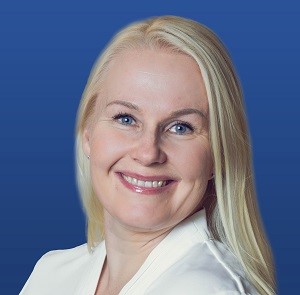
Sari Vuohtoniemi
The objective of the workshop is to discuss how the enneagram can be used in helping people grow, unite people, and unlock more of the potential of in organizations, that are strengthening self-management. More and more organizations are decreasing hierarchies and decentralizing authority to people and teams thus strengthening self-management and shared leadership, which at best ignites the intrinsic motivation of people and allows the organization to function in a more agile manner in the volatile, uncertain, complex and ambiguous world. This transition requires a lot of work in developing organizational structures and processes but most importantly it requires vertical development from everyone working in the organizations, and especially from leaders.
The enneagram offers a valuable map for understanding how different enneagram styles experience this transition into self-management especially in leadership positions, what comes easy and what might be challenging, and how each style needs different path for development. In this workshop, this is explored together with the audience to build more common understanding on the phenomena. Sari will also share her own research findings and practical experiences of leadership, executive and personnel development and coaching processes using the enneagram to strengthen self-management.

Russ Hudson
In June of 1999, after over 7 years of work, Don Richard Riso and I released The Wisdom of the Enneagram. We sincerely hoped that it would have a positive impact on the field and help to deepen the conversation of what the Enneagram was really about as well as how it could most help people. We wanted to bring more awareness to the ways in which the system was really more for development than for merely categorizing people, and we wanted to reconnect the typology with its original sensibility as a tool for awakening and presence. We were delighted at the response to this book, and to its enduring influence within the Enneagram world. We are now some 24 years out from that time, and the field has continued to expand and grow in ways few of us could have predicted back in the “early days.” In this talk, I will explore what we have learned since the Wisdom of the Enneagram was published—both across the width and breadth of the Enneagram Community, but also within my personal experience as a teacher and practitioner. Looking at this freshly, we may also gain insight into where this work may be going next, and what are the challenges and opportunities before us.
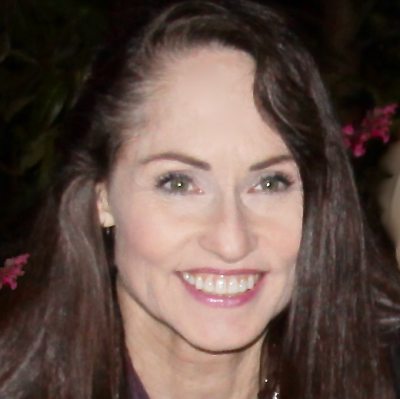
Katherine Chernick Fauvre
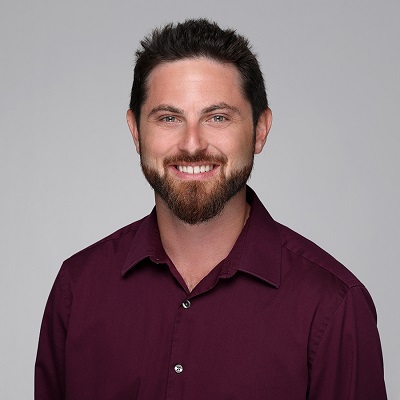
Spencer Chernick, LMFT
Using the 27 Tritype® Archetypes in relationships can guide you to a greater level of self-awareness; unite different perspectives and ignite sympathetic resonance.
Tritype® theory suggests you use three types; one from each center: head (5,6,7), heart (2,3,4), and gut (8,9,1) in a stacking order.
Join Katherine and Spencer as they share simple ways to explain Tritype® and the influence of your idealized images, core fears and defense strategies. Learn how the blend of your types influences your relationships, and identifies the source of your superpowers, struggles, and sorrows.
For example, the 846 is the expressive 8. They are protective, outspoken, sensitive, self-reflective, emotional, questioning, and supportive. Their superpower is taking immediate action to alert others when situations are deceptive and not what they appear to be. They struggle with timing; what to say, when.
Gut: Anger; what action to take or not take to be safe.
Type 8: Focuses on overcoming; speaking out, protectiveness; avoids being powerless.
Heart: Shame; what image to portray to be safe.
Type 4: Focuses on self-reflection, aesthetics, sensitivity; avoids being common.
Head: Fear of not knowing; what to know or learn to be safe.
Type 6: Focuses on reliability, questioning, preparation; avoids being helpless.
Frederik Coene, PhD
Meditation, spiritual retreats, self-development workshops, deep self-reflection and processing trauma may all play an extremely useful and important role but none is a guarantee for personal growth. Our capacity for compassion and acceptance is not cultivated in a vacuum, but always in relationship with other people. So, love is the vector for personal growth, but what is love? Sanskrit, Latin, Greek and so many other languages of ancient civilisations distinguished between many types of love, but most contemporary languages is far less sophisticated in the nuances of love. In this presentation,
Dr. Coene will explain how different ego-states (or levels of development) correspond to six different types of love towards a partner or spouse: eros, mania, ludus, pragma, storge and agape. Of course, type and instinct will give a specific nuance to these love styles, so understanding these dynamics helps us to understand how we sabotage our relationships. It also teaches us how many people may marry for the wrong reasons, or even worse, divorce for the wrong reasons. On the other hand, it also explains us why we may get stuck on our self-development path, and more importantly how to grow by changing the way we love and foster our relationships
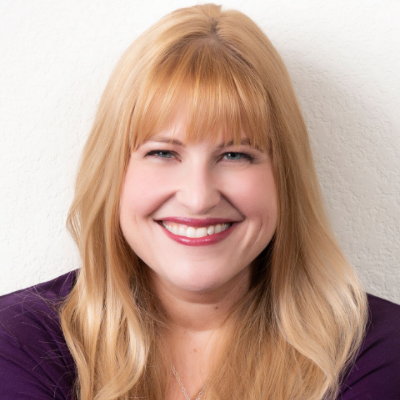
Candice Thomas, Dipl.Ac., AP
Your Personality Type is more than just an entertaining curiosity – it is the fundamental encoding of your unconscious. It can serve as the vehicle towards your highest potential€¦ but, unfortunately, is far more likely to drive you to self-sabotage.
Each Personality Type contains an "inner saboteur."This vitality-crushing force is actually driven by your Survival Programming - hardwired beliefs and actions unique to each Type's ego. This code is automating your responses to life whenever you're not paying attention. And it prevents you from living your highest potential, causing you pain and poor health.
In this compelling class, identify the specific control-mechanisms of your Inner Saboteur - your Type's Survival Programming that keeps you stuck in scarcity and survival. These are the sabotage dynamics built-in to your Personality Type.
But fear not, Your Vitality Personality system illuminates the secret paradigm to forever freeing yourself, so that you can hack your happiness code! This intentional shift towards elevated beliefs and actions move you into the Flow, where all of life thrives.
Crack the code of how your Personality Type thwarts you from health and happiness, and activate your inherent self-mastery so that you may live a life you love!
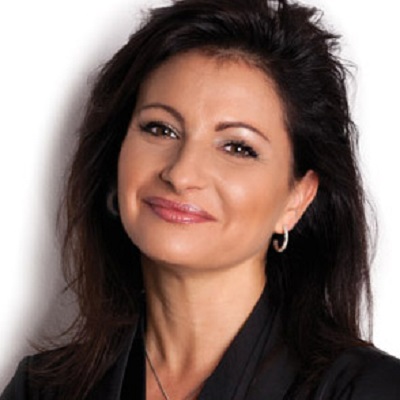
Renate Landman
Introducing practical tools, techniques and processes to use the Enneagram in supporting teams in their journey towards awakening awareness, improving team dynamics and enhancing effectiveness.
You will be shown processes that are useful in coaching with the Enneagram to support teams in revealing their team system to itself in a very safe, constructive and interactive way. The team has its own Enneagram style. When we know the team's Enneagram style, we can start to understand the dynamics that are present in the team, as well as each individual team member's relationship to the team system.
You'll gain insight into how to work with various aspects of the Enneagram, e.g. individual type and subtype, tri-fix (center-specific style), centers of intelligence, core team style, leader-team style dynamic and more. The context and purpose of each process will be outlined, as well as instructions on how to facilitate them. Case studies will be introduced to illustrate as well as live demonstrations of constellations and processes on the Enneagram carpet. You'll also get tips on how to facilitate the processes online with virtual teams.
The Enneagram provides data, which provides new vantage points, which serve as entry points for new, liberating truths to emerge.
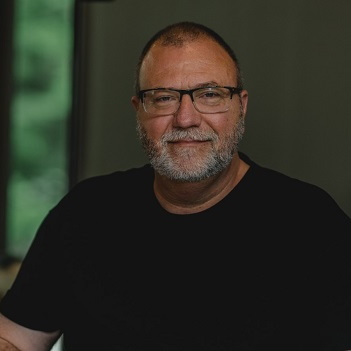
Mario Sikora
In this session, we will engage our Enneagram professionals in discussion and sharing. The “roundtable setting” invites us to discuss and learn from each other about the challenges we face in performing our work ethically, rigorously, and for the best of our clients.
The facilitator, Mario Sikora, will share relevant questions and dilemmas identified through the shared experience of the IEA professional community to be discussed in small groups amongst the participants in this workshop. Different groups will discuss various sides of being a professional using the Enneagram in their work. After a time of discussion in small groups, there will be a sharing in the plenum of the agreed-upon advice or solution, or the opposing views to the challenge discussed.
The goal of this session is to have professionals meet colleagues, learn from the shared wisdom of the community, and enhance the ethical standard and best practices of our professional performance.
You do not need to be an active professional to attend, but having experience in delivering Enneagram-related services will be helpful to be able to engage in the sharing and discussion.
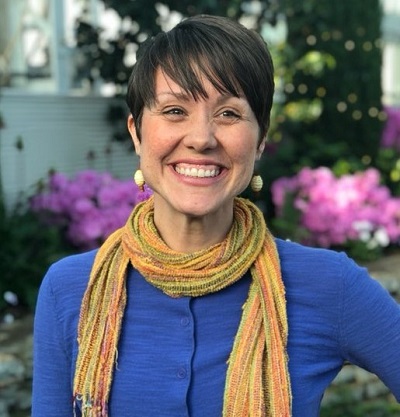
Chelsea Forbrook

Milton Stewart, MBA
You are being invited into Beloved Community. This workshop is for everyone, whether you're brand new to conversations on race, or you've been at it for decades. This will be a shame-free space, fueled by curiosity, compassion and Presence; gifts we've received from the Enneagram.
To understand the deep, systemic issues of racism within our global contexts, we must first understand "Whiteness."What is white culture? How and when did whiteness emerge as a construct? What are the underlying values, beliefs and assumptions within white businesses, governments and communities? What about Whiteness is unintentionally harmful?
Just like working with our Enneagram type, once we see Whiteness clearly and understand it within a larger framework, we suddenly wake up to our patterns and have the freedom to choose more skillful ways of living. The individual work we've already done with our Enneagram type will be used and useful in this exploration. The Enneagram offers a powerful orientation and framework that will be applied to our learning and un-learning around white culture. This framework sets us up to move into skillful action around undoing patterns and systems of oppression, no matter our Enneagram type and no matter our cultural context.
Theme: Timeless
San Francisco is a city with a rich history of racial, gender and sexual diversity; it is a community with a vibrant artistic and cutting-edge technological present; and it boasts a promising future of possibility.
The Enneagram has an ancient and somewhat mysterious past; it has become one of the most powerful personality and personal development tools of the present and it has unknown potential for effectively molding the future.
We hope you will join us for a Timeless party, as the Enneagram takes on San Francisco!
Party Attire: As diverse as the Enneagram types or as timeless as fashion itself. Express yourself!
MC: Angela Eby
Guest DJ – Russ Hudson!
Reception Food and Cash Bar (Ticketed Event $50) Celebrate the conference! Come enjoy some food and beverage, then get your dance on with special guest DJ, Russ Hudson!

Nancy Markow
Being in our head and heart center can come naturally during the conference. Remembering to include our body center might require a conscious choice. You are invited to start your day with gentle stretching as part of a three-center centering practice.
Frederik Coene, PhD
In three consecutive days, we will be focusing on the instincts. How do instincts show up and influence our being and the way we live our lives?
Different teachers call these three instincts differently, but they could agree that instincts could be understood as driving life forces. We will not be discussing what they are called, we call them Self-Preservation, Social and Sexual (One-to-One), but we will focus our attention on how they can influence us.
Each session will have a trained moderator talking to volunteers which lead their lives with their respective instinct. We will get to know what their initial thoughts, sensations and feelings could be in life situations. Why do they choose what they do to make them feel safe and content when listening to their lead instinct?

Mario Sikora
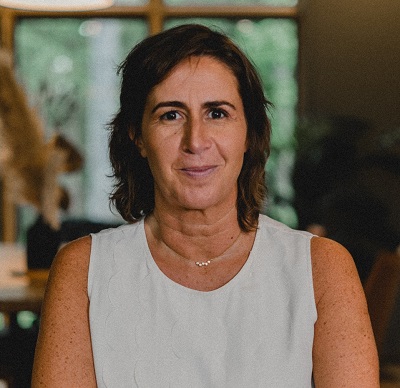
María José Munita
Every wisdom tradition tells us we don't see the world clearly and that our own minds can fool us. Seekers after truth need every tool they can get in their pursuit; teachers of the Enneagram have a responsibility to their students to be rigorous thinkers. Much of the teaching related to the Enneagram focuses on the heart and body centers, this session will focus on developing greater discernment related to the head center. This session will focus on lessons from cognitive psychology and philosophy that help us understand the nature of the mind and obstacles to clear thinking and discernment. Participants will learn practical clear-thinking principles and tools for overcoming these obstacles, with a focus on how to apply them to their work with the Enneagram.
These tools will allow users of the Enneagram to see themselves more clearly and they will learn to use them in their work with others. These applications can be applied to assessment of type, analyzing and adapting theory, and evaluating the many claims made about the Enneagram. This session will help participants be better equipped to seek the truth and share it with others.
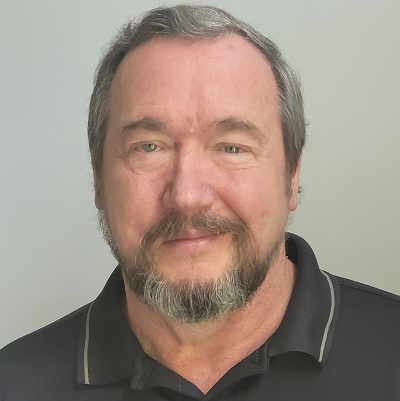
Dr. Robert Driver-Bishop
Olga Ivanovna studied with George Gurdjieff for seven years where upon he instructed her to come to America to start a school for Enneagram. Subsequently she came and did open a school based upon Enneagram principals that helped to transform her new husband; Frank Llyod Wright and together they improved working and living conditions for many around the world. We will examine ways that Enneagram principles can empower groups to "innovation incubators" for creative and practical ways of living and working. This is a celebration of the way Enneagram principles can change lives and even society for the good.

Chloé Keric-Eli
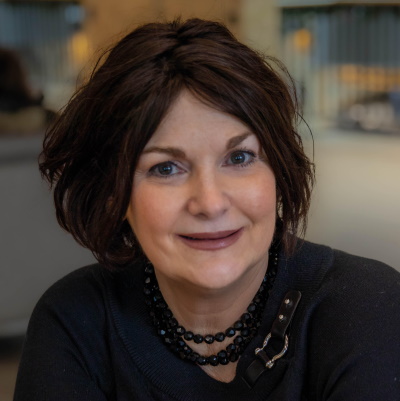
Annie Girard, MBA
Research is lacking about the Enneagram in organizations. In 2022, a team of The Enneagram In Business Network's senior members led a global survey in 23 languages on the Enneagram in Organizations. 796 people from 49 countries took the survey. After methodical data analysis, results are available to download for free in the survey report: www.enneagramsurvey.net, in 5 different languages.
The survey purpose was to find out answers to the following questions: (1) What are the organizational and personal key benefits of using the Enneagram in organizations; (2) What are the most common applications of the Enneagram in organizations; and (3) How do people want to learn more about the Enneagram in the future? More than 70% of respondents reported self-knowledge, relationships, empathy, communication, well-being, respect and trust on teams, and empowerment as top key benefits. Beyond those established areas, we believe benefits and applications with lower percentages invite us to develop innovative niche areas for all Enneagram professionals working in organizational settings.
This workshop aims at building on collective intelligence to deepen and strengthen together those potentialities. Our goal: to continue spreading the Enneagram in organizations with professionalism, ethics (blue ocean) and sustainable impact both for individuals and collectives.

Dina ElBadry
When I first learned the Enneagram I was disappointed by my type, and even more disappointed to know that it doesn't change. But when I started studying Gurdjieff, I became fascinated by the concept of Essence. I found a lot of inspiration through realizing that the personality isn't the only option for us humans, and that the human can be much more.
My interest in Sufi teachings led me to see that that both Gurdjieff and the Sufis were talking about the same thing. In this presentation I aim to correlate the Gurdjieffian & Sufi teachings about the The full potential of the human being which was referred to in Gurdjieff as "Man Becoming Immortal"and by Sufis as "Al-Insan Al-Kamil".
I also aim to present their perspectives about the human developmental process for spiritual growth and provide the attendees with information about some practical steps of this path inspired by both Gurdjieff's fourth way & Sufi Schools.
This presentation is a call for the attendees to Unite within themselves all their potential capacities to Ignite the wholeness of this miraculous being called man.
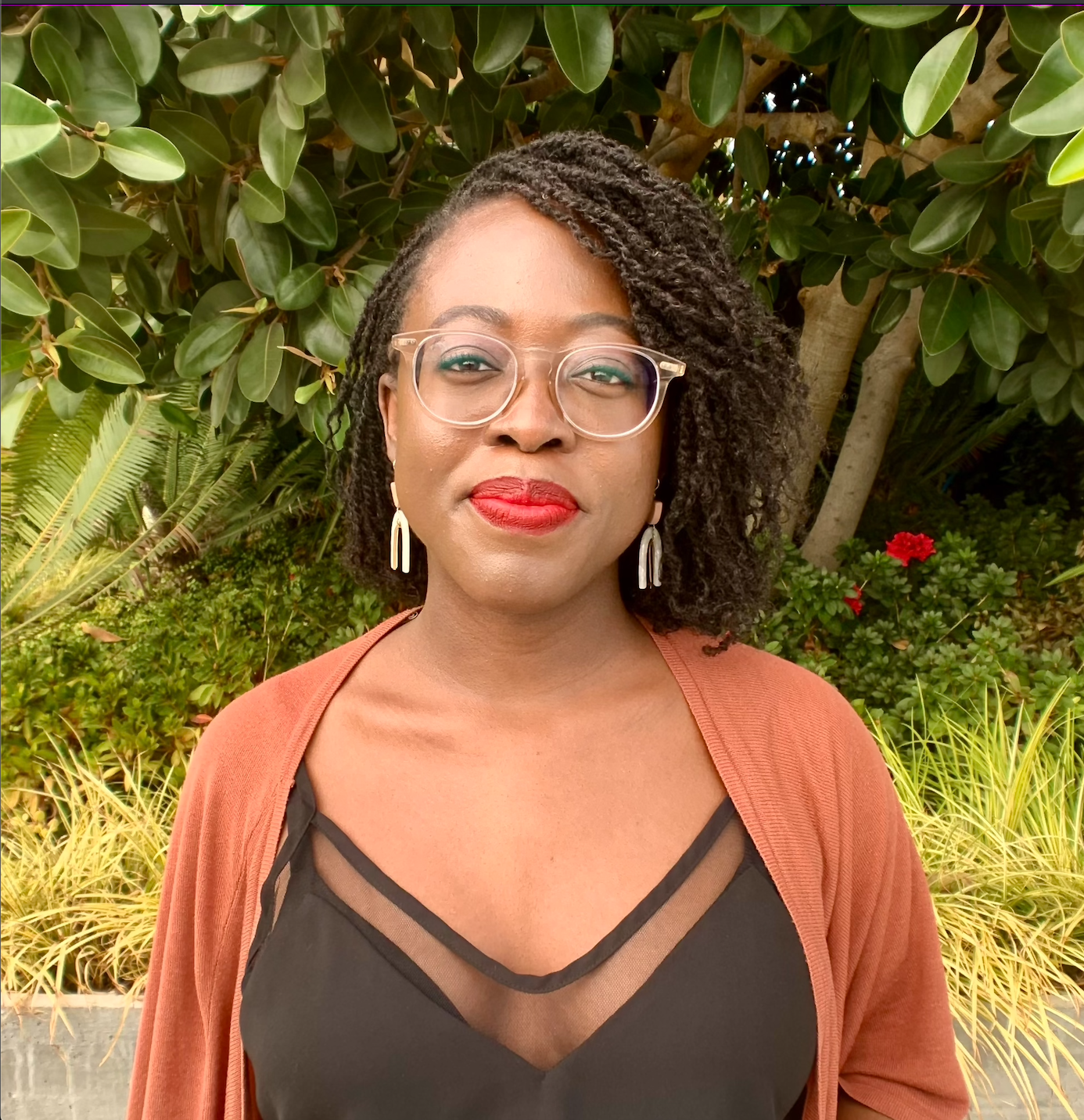
Chichi Agorom
Chichi Agorom invites us to compassionately investigate how we hold the Enneagram as a tool for liberation, what our collective responsibility is to each other, and what a vision of a world united in liberation will require of us. Traveling the circle of the Enneagram, we will explore what it looks like to get intentional about building together a future that is free for all of us.
Ben Campbell

Lynda Roberts
This session will introduce the history of the Enneagram and the purpose of the Enneagram. Where did the teachings come from and how did they emerge or arrive in their present form? What does it mean to be a “three-centered being”? What are the functions of the Head, Heart, and Body/Gut? How do the 9 personality styles emerge from and relate to the Three Centers?

Dayo Ajanaku

Danielle Fanfair
This session will go deeper into the Body Center and the three body-based personality styles at points 8, 9, 1. What are the characteristics and functions of our Moving Center? What are some of the distinguishing features of the 8, 9, 1 personality types

Caroline King

Milton Stewart
This session will go deeper into the Heart Center and the three heart-based personality styles at points 234. What are the characteristics and functions of our Feeling Center? What are some of the distinguishing features of the 2, 3, 4 personality types?

Dina ElBadry

Beatrice Chestnut
This session will go deeper into the Head Center and the three head-based personality styles at points 5, 6, 7. What are the characteristics and functions of our Thinking Center? What are some of the distinguishing features of the 5, 6, 7 personality types?
Ben Campbell

Dayo Ajanaku

Caroline King

Dina ElBadry
In this panel the Discovery Track presenters will share their experience and advice on how the Enneagram can be more accessible to diverse audiences. How do we spread and reach communities that are commonly overlooked with the Enneagram?

Deborah Threadgill Egerton, Ph.D.
In our opening Keynote, Deborah Egerton introduces the concept of employing the Enneagram as the ultimate map to guide and unite us in a world divided. We will look at the gifts of each of the 9 points of the Enneagram represented as defenders, healers and bridge builders, as we discover the unique unifier at each point. When discovered and embraced each gift unites us and enhances our capacity to love, support and move together toward higher ground, as intended, as one.

Robert Holden, Ph.D.

Deborah Threadgill Egerton, Ph.D

Susan Olesek

Elita Moiseja
“Activism is my rent for living on the planet,” said Alice Walker, novelist, poet, and social activist. What does activism mean to you? And how can the Enneagram help you to practice your activism in an engaged, mindful, and loving way in the world today? Join Robert Holden [host] and a panel of Ennea-activists that include Deborah Egerton, author of Know Justice, Know Peace and Susan Olesek, founder of the Enneagram Prison Project and Elita Moiseja.

Susan Olesek
With a clear vision for how the Enneagram could be taught in every jail and prison in the United States and in the world, Susan Olesek founded Enneagram Prison Project (EPP) in California in 2012. Since then, EPP has established programming in correctional facilities around the world, including California, Colorado, Illinois, Minnesota, Belgium, France, the United Kingdom, Canada, and soon to be Australia.
In this presentation, IEA attendees will engage with and learn from members of the EPP community, including EPP's Founder, as well as some of our newest EPP Ambassadors who learned the Enneagram while incarcerated and are now EPP Board Members, Faculty, staff, and guides. You will hear about what EPP is doing to impact our in-custody student's ability to live into and practice greater self-awareness, self-regulation, and self-compassion.
We will explore how EPP is changing the way people are doing their time on the inside, and affecting change on the outside. Attendees will be invited to connect with the heart of EPP through a raw conversation with EPP Ambassadors about their personal experience finding inner freedom, their journey to successfully demonstrating "suitability"to the parole board, and integrating their inner work in real life as returning citizens.
Sandra Smith

Erlina Edwards

Cyndi Gueswel
This innovative hybrid workshop, facilitated by three Narrative Tradition teachers, will explore the role of our Enneagram type in how we other.
Othering is an act of exclusion. When we other, we reject part of ourselves or certain people. Othering is a turning away from or a denying that diminishes our lives, relationships, and our culture. During our time together we'll explore how our type's "sub-vice,"the vice of our security point, dances with our vice to create dualistic narratives and drive behaviors that move us into realms of othering. The role of the sub-vice isn't well known. When revealed, the insights we glean open a path to soften our engagement in othering. Our type's ego ideal and defense mechanism play a key role in maintaining patterns of dualistic thinking that engenders othering. Understanding how and when this dynamic is operating can lead us on the path toward acceptance of our rejected parts and to see the beauty of diversity. Additionally, we'll consider how our inner resources support us in dissolving othering and move us toward individual and collective wholeness.
Our time together will include dyad and triad inquiry, type group discussion, teachings, and self-reflection.

Chloé Keric-Eli
Based on the results of a master's thesis research, this presentation explores communicative practices involved in exchange of authority and power in the personal development industry. Relationships of authority and power become problematic when professionals and clients are not aware enough of the dynamics at play. Although most practitioners don't intentionally want to become a guru or gain power and authority over their clients, some ethical questions remain.
How does my own ego structure can create blind spots towards one's own 'authoritative talents'? How can I foster safe and ethical spaces? As a client, how does my own ego structure make me at risk of surrendering my personal power to the supposed 'wise guide' or 'expert' and how do I become more aware so I can maintain my own authority? Tools and best practices will be shared for personal development professionals and for clients. Acts of violence and abuse are everywhere: from micro-aggressions in the street to global wars, passing by power abuses from personal development professionals or leaders in organizations. They all participate in maintaining inequality and power dynamics through communication and in relationships. Gaining awareness supports societal systemic change.

Russ Hudson
In June of 1999, after over 7 years of work, Don Richard Riso and I released The Wisdom of the Enneagram. We sincerely hoped that it would have a positive impact on the field and help to deepen the conversation of what the Enneagram was really about as well as how it could most help people. We wanted to bring more awareness to the ways in which the system was really more for development than for merely categorizing people, and we wanted to reconnect the typology with its original sensibility as a tool for awakening and presence. We were delighted at the response to this book, and to its enduring influence within the Enneagram world. We are now some 24 years out from that time, and the field has continued to expand and grow in ways few of us could have predicted back in the “early days.” In this talk, I will explore what we have learned since the Wisdom of the Enneagram was published—both across the width and breadth of the Enneagram Community, but also within my personal experience as a teacher and practitioner. Looking at this freshly, we may also gain insight into where this work may be going next, and what are the challenges and opportunities before us.

Sharon K. Ball, LPC-MHSP
Trauma: The power to unite and connect us. What do the Ukraine war, the Harvest Festival shooting, the pandemic, and the South Korean Halloween tragedy have in common?
Trauma and people are the common variables in the Ukraine war, the pandemic, and the South Korean Halloween tragedy. Where there are people, there will be trauma. Whether we like it or not, we are all connected vicariously through trauma.
This introductory workshop is for global Enneagram Mental Health Advocates, the "gatekeepers" of mental well-being. These "gatekeepers" are the people on the frontline of trauma–the people victims often find comfort in sharing their feelings with before they receive professional intervention; a parent, teacher, grandparent, coach, friend OR Enneagram coach, healer, trainer, or spiritual guide. Essentially, all of us around the world are gatekeepers to trauma, and sadly this means ALL of us have or will encounter someone trying to recover from trauma.
Trauma resolution for individuals is complex and impacted by many variables; the individual's body, heart, mind, Enneagram type, history, culture, race, gender, location, and language. Being trauma-informed also acknowledges the many inequitable systems and is responsive to the unique needs of diverse communities.
Trauma will never go away. War, shootings, abuse, disease, natural disasters, and other traumatic events will continue. As the Enneagram community, we must unite to advocate for better-informed trauma care globally.

Sari Vuohtoniemi
The objective of the workshop is to discuss how the enneagram can be used in helping people grow, unite people, and unlock more of the potential of in organizations, that are strengthening self-management. More and more organizations are decreasing hierarchies and decentralizing authority to people and teams thus strengthening self-management and shared leadership, which at best ignites the intrinsic motivation of people and allows the organization to function in a more agile manner in the volatile, uncertain, complex and ambiguous world. This transition requires a lot of work in developing organizational structures and processes but most importantly it requires vertical development from everyone working in the organizations, and especially from leaders.
The enneagram offers a valuable map for understanding how different enneagram styles experience this transition into self-management especially in leadership positions, what comes easy and what might be challenging, and how each style needs different path for development. In this workshop, this is explored together with the audience to build more common understanding on the phenomena. Sari will also share her own research findings and practical experiences of leadership, executive and personnel development and coaching processes using the enneagram to strengthen self-management.

Chelsea Forbrook

Milton Stewart, MBA
You are being invited into Beloved Community. This workshop is for everyone, whether you're brand new to conversations on race, or you've been at it for decades. This will be a shame-free space, fueled by curiosity, compassion and Presence; gifts we've received from the Enneagram.
To understand the deep, systemic issues of racism within our global contexts, we must first understand "Whiteness."What is white culture? How and when did whiteness emerge as a construct? What are the underlying values, beliefs and assumptions within white businesses, governments and communities? What about Whiteness is unintentionally harmful?
Just like working with our Enneagram type, once we see Whiteness clearly and understand it within a larger framework, we suddenly wake up to our patterns and have the freedom to choose more skillful ways of living. The individual work we've already done with our Enneagram type will be used and useful in this exploration. The Enneagram offers a powerful orientation and framework that will be applied to our learning and un-learning around white culture. This framework sets us up to move into skillful action around undoing patterns and systems of oppression, no matter our Enneagram type and no matter our cultural context.

Dr. Robert Driver-Bishop
Olga Ivanovna studied with George Gurdjieff for seven years where upon he instructed her to come to America to start a school for Enneagram. Subsequently she came and did open a school based upon Enneagram principals that helped to transform her new husband; Frank Llyod Wright and together they improved working and living conditions for many around the world. We will examine ways that Enneagram principles can empower groups to "innovation incubators" for creative and practical ways of living and working. This is a celebration of the way Enneagram principles can change lives and even society for the good.

Chichi Agorom
Chichi Agorom invites us to compassionately investigate how we hold the Enneagram as a tool for liberation, what our collective responsibility is to each other, and what a vision of a world united in liberation will require of us. Traveling the circle of the Enneagram, we will explore what it looks like to get intentional about building together a future that is free for all of us.
Ben Campbell

Lynda Roberts
This session will introduce the history of the Enneagram and the purpose of the Enneagram. Where did the teachings come from and how did they emerge or arrive in their present form? What does it mean to be a “three-centered being”? What are the functions of the Head, Heart, and Body/Gut? How do the 9 personality styles emerge from and relate to the Three Centers?

Dayo Ajanaku

Danielle Fanfair
This session will go deeper into the Body Center and the three body-based personality styles at points 8, 9, 1. What are the characteristics and functions of our Moving Center? What are some of the distinguishing features of the 8, 9, 1 personality types

Caroline King

Milton Stewart
This session will go deeper into the Heart Center and the three heart-based personality styles at points 234. What are the characteristics and functions of our Feeling Center? What are some of the distinguishing features of the 2, 3, 4 personality types?

Dina ElBadry

Beatrice Chestnut
This session will go deeper into the Head Center and the three head-based personality styles at points 5, 6, 7. What are the characteristics and functions of our Thinking Center? What are some of the distinguishing features of the 5, 6, 7 personality types?
Ben Campbell

Dayo Ajanaku

Caroline King

Dina ElBadry
In this panel the Discovery Track presenters will share their experience and advice on how the Enneagram can be more accessible to diverse audiences. How do we spread and reach communities that are commonly overlooked with the Enneagram?

Valerie Wanamaker, M.A., LCSW
In three consecutive days, we will be focusing on the instincts. How do instincts show up and influence our being and the way we live our lives?
Different teachers call these three instincts differently, but they could agree that instincts could be understood as driving life forces. We will not be discussing what they are called, we call them Self-Preservation, Social and Sexual (One-to-One), but we will focus our attention on how they can influence us.
Each session will have a trained moderator talking to volunteers which lead their lives with their respective instinct. We will get to know what their initial thoughts, sensations and feelings could be in life situations. Why do they choose what they do to make them feel safe and content when listening to their lead instinct?

Deborah Threadgill Egerton, Ph.D.
In our opening Keynote, Deborah Egerton introduces the concept of employing the Enneagram as the ultimate map to guide and unite us in a world divided. We will look at the gifts of each of the 9 points of the Enneagram represented as defenders, healers and bridge builders, as we discover the unique unifier at each point. When discovered and embraced each gift unites us and enhances our capacity to love, support and move together toward higher ground, as intended, as one.

Robert Holden, Ph.D.

Deborah Threadgill Egerton, Ph.D

Susan Olesek

Elita Moiseja
“Activism is my rent for living on the planet,” said Alice Walker, novelist, poet, and social activist. What does activism mean to you? And how can the Enneagram help you to practice your activism in an engaged, mindful, and loving way in the world today? Join Robert Holden [host] and a panel of Ennea-activists that include Deborah Egerton, author of Know Justice, Know Peace and Susan Olesek, founder of the Enneagram Prison Project and Elita Moiseja.

Catherine Bell, MBA

Russ Hudson
What is creativity? Creativity is something that keeps us united, and it influences everything from education and societal change. The actual process is mysterious but there are things we can say about the result. It is our ability to generate and recognize ideas, alternatives, and possibilities in solving problems, communicating our inner landscapes to others and entertaining ourselves and others. Innovation, the novelty in creativity, can be seen as an idea that has transformed into practical, tangible reality - something new and beyond cutting edge.
The Enneagram provides us a specific lens into creativity and how we can embody every point when we are in flow. While we may have our natural default patterns, creativity invites us into embodying all types.
In this session, Catherine Bell will ask Russ Hudson investigative questions to unearth
the elements of creativity and will review the different Enneagram points from a practice perspective.
Our Agenda:
A process to activate your creativity.

Peter O'Hanrahan
The Enneagram is a holistic system: each type structure is based in three centers of intelligence: body, heart, and mind. We usually start with the head center, learning about the nine types and how to develop mindfulness. But the heart and body centers are just as important for our growth and development. Much of life is lived through our instincts and emotions.
Working for many years as a body therapist using the enneagram, I have learned a lot about the neurobiology that forms the basis for each personality type. These patterns are not rigid categories, but just as there are habits of mind and emotion for each enneagram type, there are familiar somatic qualities here as well.
In this workshop I will talk briefly about subtypes and somatics and pose some questions: How can we sense our instincts and subtype? What about underdoing or overdoing? How does survival anxiety affect our instinctual activity? What are the signals from our body?
I'll also lead an inner practice, have people get in type groups to discuss their experience of their subtype and how this is influenced by their neurobiology. And we'll get back together briefly to hear what people have to say.

Beatrice Chestnut, PhD
This presentation will trace key aspects of a specific body of ancient wisdom teachings—or " Perennial Philosophy" as it has evolved over time. This " wisdom tradition" also defines the core principles at the heart of many of the world's religions. We will explore the hypothesis that the Enneagram functions as a symbol of this age-old tradition in a way that can clarify the meaning of the Enneagram as a map of transformation—and show us how we can use this powerful map as it was meant to be used—as a means of igniting truly transformative psycho-spiritual inner work.
This presentation will investigate the possibility that the Enneagram was connected to—and representative of—this ancient teaching. By tracing evidence of certain commonalities that define this " wisdom tradition" in key texts related to Christian Hermeticism, Jewish Mysticism, Sufism, and the works of some of the key historical figures it influenced over time, I will highlight the main holistic teachings that the Enneagram can be seen to symbolize. Clarifying the key defining tenets of this ancient tradition allows us to see how these ideas encoded in the Enneagram symbol allow us to access important teachings that can guide our Enneagram studies.

Susan Olesek
With a clear vision for how the Enneagram could be taught in every jail and prison in the United States and in the world, Susan Olesek founded Enneagram Prison Project (EPP) in California in 2012. Since then, EPP has established programming in correctional facilities around the world, including California, Colorado, Illinois, Minnesota, Belgium, France, the United Kingdom, Canada, and soon to be Australia.
In this presentation, IEA attendees will engage with and learn from members of the EPP community, including EPP's Founder, as well as some of our newest EPP Ambassadors who learned the Enneagram while incarcerated and are now EPP Board Members, Faculty, staff, and guides. You will hear about what EPP is doing to impact our in-custody student's ability to live into and practice greater self-awareness, self-regulation, and self-compassion.
We will explore how EPP is changing the way people are doing their time on the inside, and affecting change on the outside. Attendees will be invited to connect with the heart of EPP through a raw conversation with EPP Ambassadors about their personal experience finding inner freedom, their journey to successfully demonstrating "suitability"to the parole board, and integrating their inner work in real life as returning citizens.

Simon Goland, Ph.D., PCC
Why are you here? What has your life been preparing you for? Within each Enneagram type, there are higher qualities of the soul and the direction of integration/presence, which are going to be used as the foundation in this inquiry and exploration. This workshop uses the combination of the Enneagram and a proprietary Why Me?© Framework as a roadmap to help you uncover your individual and unique life purpose and calling.
We will embark on a journey that blends theory, outline of the Why Me?© Framework and how it operates, stories, and experiential exercises and inquiry to help connect the dots among several threads of your life, guiding you to answer these two timeless questions. Using the Enneagram as a backdrop, you will engage in a series of individual and small group activities which will provide you with insights and clarity as you inquire into the trajectory of your life, your calling, and your life purpose.

Ozgu Hafizoglu, PhD

Don Hudson
This science-based hypothesis on the cognitive science, neuroscience of the enneagram is based on Dr. Ozgu Hafizoglu's doctoral and post-doc studies of 500 artists, architects and designers and Don's 27 years as a scientist and journalist studying the enneagram in his subjects of politics, science and sports. This presentation will explain the basics of how each type processes information from the body, heart and head centers.
Their graphics, slide show and whiteboard presentation will show how each type typically thinks through established neural pathways, and how understanding this information will help each of the nine types move from fixation to freedom. This presentation will show the rigorous scientific method behind this research, how the centers operate in relationship to each other in the human brain, and the important next steps to move enneagram from hypothesis to proven scientific model.

Rev. Nhien Vuong, J.D., M.Div.
Sam E. Greenberg, PhD

Lyndsey Fraser, M.A., LMFT, CST

Valerie Wanamaker, M.A., LCSW

Dace Mars, M.Ed.

Mysti Rainmaker, M.A., LPC
Dr. Frederik Coene, Ph.D
"Enneagram After Dark"is a two night after-program series exploring the intersections of the enneagram & sexuality. Hosted by the Enneagram & Sexuality Enneagroup, night one will feature a dynamic panel discussion among the interdisciplinary group of enneagram professionals and 'sexperts', with an emphasis on how the enneagram lens on sexuality has transformed their lives and how the nine ego-distortions create both opportunities and challenges in one's sexual experience.
This session will also provide an opportunity for participants to raise any questions on the topic and to encourage a candid and lively dialogue among panel members. Night two will feature an interactive session with embodied activities that provide a taste of the various ways we can healthfully incorporate sexual energy & sexuality into our personal development work to promote psycho-spiritual growth, with a focus on the three instincts. After each session, we hope that participants will feel inspired, opened, and invited to carry their gained insights and energy through the rest of the conference and then beyond into their personal, professional, and greater community work.

Dace Mars, M.Ed.
In three consecutive days, we will be focusing on the instincts. How do instincts show up and influence our being and the way we live our lives?
Different teachers call these three instincts differently, but they could agree that instincts could be understood as driving life forces. We will not be discussing what they are called, we call them Self-Preservation, Social and Sexual (One-to-One), but we will focus our attention on how they can influence us.
Each session will have a trained moderator talking to volunteers which lead their lives with their respective instinct. We will get to know what their initial thoughts, sensations and feelings could be in life situations. Why do they choose what they do to make them feel safe and content when listening to their lead instinct?
Carl Marsak, M.A.
In this presentation we look at what Tibetan Buddhism has to contribute to current Enneagram theories, methods and practices. The past two generations have seen the Enneagram brought alongside and integrated with several religious traditions and spiritual paths, most noticeably Christianity, and to some extent Sufism, Judaism, Theravada Buddhism and New Age spirituality. But until Susan Piver recently published The Buddhist Enneagram, few Enneagram students have examined how Tibetan Buddhism can combine with Enneagram work to foster and accelerate our spiritual development. Usually, the transmissions flow the other way. Christians, for example, encounter and apply the Enneagram to augment and strengthen their preexisting beliefs, values and practices. Jews have done the same thing, as have the Sufis.
This certainly makes sense--we want to avoid proselytizing, and foisting personal dogma and doctrine on to others. But there are Buddhist understandings and practices that could be highly effective for our Enneagram journey. For example: aspiration and dedication prayers, bodhisattva vows, expanding our loving-kindness and compassion, contemplating the truths of impermanence, emptiness and the dying process, and understanding Tibetan methods of transformation. Format: teaching pieces, two meditations, group discussion and Q & A. Breakout triads. Handouts. Susan's book is recommended!

Belinda Gore, PhD
If we are to be united - intimately or globally - we are challenged to do more than understand our Enneagram type tendencies. Relating to other people in a healthy, authentic way requires us to recognize deeply engrained behaviors as they occur and to shift our behavior from habitual reactions to mindful responses.
Tools for making this significant and soul-enriching shift toward authentic, deeply contactful interactions with others are based in wisdom revealed through understanding and recognizing the object relations structures underpinning all nine Enneagram patterns.
In this workshop you will learn the object relations matrix that defines the underlying structure for each of the nine Enneagram types. Since we each have all nine patterns within us, it is valuable to understand the entire matrix. Using a few experiential exercises we will explore ways your patterns show up for you and how to recognize when they are activated. Then we will challenge the self image we have built to protect the patterns. We will practice one way to soften the self image so True Nature can radiate from us as we engage with other people as the precious beings they are

Anne Geary
How to get along with the people we love is a universal human dilemma. Relationships don’t come with operating instructions, yet as human beings we share the desire to love and be loved.
Bring your biggest relationship conflict to this dynamic and interactive session. Together, we will engage The Enneagram Approach: a powerful system integrating the wisdom of the Enneagram with the pragmatic process of the 12-Steps of Recovery.
In this workshop you will be guided to take the 4th Step of Recovery (an inventory) of one key relationship to reveal the underlying sources of your reoccurring conflicts. Through the lens of your instinctual drives: Self-Preservation, Sexual Attraction, and Social Adaptation, you will gain insight into the ways you spend and misspend your time and energy.
This process aims to transform your egoic patterns into a sacred pathway through self-awareness and empathy for others. These insights will enable you to make small behavior changes to resolve the recurring conflicts in your key relationship and through the ripple effect, enrich every relationship in your life. More simply put – Ignite Your Enlightenment Drive. Join me in this dynamic and interactive session

Terry Saracino

Christopher Copeland
Is a transformative experience with the Enneagram accessible for people with marginalized identities? As much as we'd like to say a resounding "Yes!”...We know this is not the case. Not yet.
The Enneagram movement has largely centered a limited demographic — white, middle to upper class, cisgender, heterosexual, able-bodied, and neurotypical people — which results in a limited knowledge of type. This is not only a justice issue for people who hold marginalized identities, but also a hindrance to fully understanding and accurately teaching the nine types.
Real transformation necessitates that we see our personality as part of our holistic human experience in relation to the systems within which we exist. You’ll hear from a panel of diverse individuals sharing their lived experience of embodying identities that are not often centered in Enneagram writing and teaching. Join us as we explore ways to integrate our intersecting identities (such as race, gender and ability) with the Enneagram.
The Narrative Enneagram, the first and only IEA Accredited Enneagram School with Distinction, is building on its long-standing commitment to transforming lives and creating a more compassionate world by intentionally centering diversity, equity, inclusion, and belonging.

Murielle Gardret
When we share the power of coaching with our world, we have the power to ignite a lot of people, communities and make a global positive impact. Creating awareness about biases is hence important. Our personality impacts the way we work. Our preferred Enneatype and sub-type influence coaching, from the coach and client perspectives.
This interactive presentation will focus specifically about coach & client's bias in coaching. Some comments will also cover the impact of client's bias in their organizational environment.
Bias is sometimes an asset, sometimes a barrier in the coaching process, and thus in growth.
Being aware of this bias hence enables the coach and the client to grow and then to contribute to building a better world.
In this interactive presentation, we'll cover:
What are the impacts of those Enneatype biases in coaching?

Nicolai Cursino
The Enneagram is a mandala of organization, access and alchemy of mental, emotional and physical energies.
Understanding the energetic and somatic qualities of each of the 9 points, as well as the transformation that takes place in each movement of the arrows, is fundamental so that the Enneagram can be used in a practical and operative way in the work of human transformation and healing.
Knowledge and intuition are required in order to carry out conduction work on the Enneagram mat, as well as the use of the 3 intelligence centers with somatic and energetic skills.
This workshop will take place entirely on the enneagram carpet, where participants will be led to experience the energies of the different points of the Mandala, as well as the transitions that take place in the arrows, in the vertices and in the different vertical levels of development.
We will also learn about the basic principles that each one must develop in order to carry out practical work on the Enneagram Mandala.
Nicolai Cursino has been doing energy and body work on the Enneagram mat for over a decade, in addition to teaching Enneagram healers and teachers how to do the same work.
Sandra Smith

Erlina Edwards

Cyndi Gueswel
This innovative hybrid workshop, facilitated by three Narrative Tradition teachers, will explore the role of our Enneagram type in how we other.
Othering is an act of exclusion. When we other, we reject part of ourselves or certain people. Othering is a turning away from or a denying that diminishes our lives, relationships, and our culture. During our time together we'll explore how our type's "sub-vice,"the vice of our security point, dances with our vice to create dualistic narratives and drive behaviors that move us into realms of othering. The role of the sub-vice isn't well known. When revealed, the insights we glean open a path to soften our engagement in othering. Our type's ego ideal and defense mechanism play a key role in maintaining patterns of dualistic thinking that engenders othering. Understanding how and when this dynamic is operating can lead us on the path toward acceptance of our rejected parts and to see the beauty of diversity. Additionally, we'll consider how our inner resources support us in dissolving othering and move us toward individual and collective wholeness.
Our time together will include dyad and triad inquiry, type group discussion, teachings, and self-reflection.

Chloé Keric-Eli
Based on the results of a master's thesis research, this presentation explores communicative practices involved in exchange of authority and power in the personal development industry. Relationships of authority and power become problematic when professionals and clients are not aware enough of the dynamics at play. Although most practitioners don't intentionally want to become a guru or gain power and authority over their clients, some ethical questions remain.
How does my own ego structure can create blind spots towards one's own 'authoritative talents'? How can I foster safe and ethical spaces? As a client, how does my own ego structure make me at risk of surrendering my personal power to the supposed 'wise guide' or 'expert' and how do I become more aware so I can maintain my own authority? Tools and best practices will be shared for personal development professionals and for clients. Acts of violence and abuse are everywhere: from micro-aggressions in the street to global wars, passing by power abuses from personal development professionals or leaders in organizations. They all participate in maintaining inequality and power dynamics through communication and in relationships. Gaining awareness supports societal systemic change.

Russ Hudson
In June of 1999, after over 7 years of work, Don Richard Riso and I released The Wisdom of the Enneagram. We sincerely hoped that it would have a positive impact on the field and help to deepen the conversation of what the Enneagram was really about as well as how it could most help people. We wanted to bring more awareness to the ways in which the system was really more for development than for merely categorizing people, and we wanted to reconnect the typology with its original sensibility as a tool for awakening and presence. We were delighted at the response to this book, and to its enduring influence within the Enneagram world. We are now some 24 years out from that time, and the field has continued to expand and grow in ways few of us could have predicted back in the “early days.” In this talk, I will explore what we have learned since the Wisdom of the Enneagram was published—both across the width and breadth of the Enneagram Community, but also within my personal experience as a teacher and practitioner. Looking at this freshly, we may also gain insight into where this work may be going next, and what are the challenges and opportunities before us.

Sari Vuohtoniemi
The objective of the workshop is to discuss how the enneagram can be used in helping people grow, unite people, and unlock more of the potential of in organizations, that are strengthening self-management. More and more organizations are decreasing hierarchies and decentralizing authority to people and teams thus strengthening self-management and shared leadership, which at best ignites the intrinsic motivation of people and allows the organization to function in a more agile manner in the volatile, uncertain, complex and ambiguous world. This transition requires a lot of work in developing organizational structures and processes but most importantly it requires vertical development from everyone working in the organizations, and especially from leaders.
The enneagram offers a valuable map for understanding how different enneagram styles experience this transition into self-management especially in leadership positions, what comes easy and what might be challenging, and how each style needs different path for development. In this workshop, this is explored together with the audience to build more common understanding on the phenomena. Sari will also share her own research findings and practical experiences of leadership, executive and personnel development and coaching processes using the enneagram to strengthen self-management.

Katherine Chernick Fauvre

Spencer Chernick, LMFT
Using the 27 Tritype® Archetypes in relationships can guide you to a greater level of self-awareness; unite different perspectives and ignite sympathetic resonance.
Tritype® theory suggests you use three types; one from each center: head (5,6,7), heart (2,3,4), and gut (8,9,1) in a stacking order.
Join Katherine and Spencer as they share simple ways to explain Tritype® and the influence of your idealized images, core fears and defense strategies. Learn how the blend of your types influences your relationships, and identifies the source of your superpowers, struggles, and sorrows.
For example, the 846 is the expressive 8. They are protective, outspoken, sensitive, self-reflective, emotional, questioning, and supportive. Their superpower is taking immediate action to alert others when situations are deceptive and not what they appear to be. They struggle with timing; what to say, when.
Gut: Anger; what action to take or not take to be safe.
Type 8: Focuses on overcoming; speaking out, protectiveness; avoids being powerless.
Heart: Shame; what image to portray to be safe.
Type 4: Focuses on self-reflection, aesthetics, sensitivity; avoids being common.
Head: Fear of not knowing; what to know or learn to be safe.
Type 6: Focuses on reliability, questioning, preparation; avoids being helpless.
Frederik Coene, PhD
Meditation, spiritual retreats, self-development workshops, deep self-reflection and processing trauma may all play an extremely useful and important role but none is a guarantee for personal growth. Our capacity for compassion and acceptance is not cultivated in a vacuum, but always in relationship with other people. So, love is the vector for personal growth, but what is love? Sanskrit, Latin, Greek and so many other languages of ancient civilisations distinguished between many types of love, but most contemporary languages is far less sophisticated in the nuances of love. In this presentation,
Dr. Coene will explain how different ego-states (or levels of development) correspond to six different types of love towards a partner or spouse: eros, mania, ludus, pragma, storge and agape. Of course, type and instinct will give a specific nuance to these love styles, so understanding these dynamics helps us to understand how we sabotage our relationships. It also teaches us how many people may marry for the wrong reasons, or even worse, divorce for the wrong reasons. On the other hand, it also explains us why we may get stuck on our self-development path, and more importantly how to grow by changing the way we love and foster our relationships

Candice Thomas, Dipl.Ac., AP
Your Personality Type is more than just an entertaining curiosity – it is the fundamental encoding of your unconscious. It can serve as the vehicle towards your highest potential€¦ but, unfortunately, is far more likely to drive you to self-sabotage.
Each Personality Type contains an "inner saboteur."This vitality-crushing force is actually driven by your Survival Programming - hardwired beliefs and actions unique to each Type's ego. This code is automating your responses to life whenever you're not paying attention. And it prevents you from living your highest potential, causing you pain and poor health.
In this compelling class, identify the specific control-mechanisms of your Inner Saboteur - your Type's Survival Programming that keeps you stuck in scarcity and survival. These are the sabotage dynamics built-in to your Personality Type.
But fear not, Your Vitality Personality system illuminates the secret paradigm to forever freeing yourself, so that you can hack your happiness code! This intentional shift towards elevated beliefs and actions move you into the Flow, where all of life thrives.
Crack the code of how your Personality Type thwarts you from health and happiness, and activate your inherent self-mastery so that you may live a life you love!
Frederik Coene, PhD
In three consecutive days, we will be focusing on the instincts. How do instincts show up and influence our being and the way we live our lives?
Different teachers call these three instincts differently, but they could agree that instincts could be understood as driving life forces. We will not be discussing what they are called, we call them Self-Preservation, Social and Sexual (One-to-One), but we will focus our attention on how they can influence us.
Each session will have a trained moderator talking to volunteers which lead their lives with their respective instinct. We will get to know what their initial thoughts, sensations and feelings could be in life situations. Why do they choose what they do to make them feel safe and content when listening to their lead instinct?

Dina ElBadry
When I first learned the Enneagram I was disappointed by my type, and even more disappointed to know that it doesn't change. But when I started studying Gurdjieff, I became fascinated by the concept of Essence. I found a lot of inspiration through realizing that the personality isn't the only option for us humans, and that the human can be much more.
My interest in Sufi teachings led me to see that that both Gurdjieff and the Sufis were talking about the same thing. In this presentation I aim to correlate the Gurdjieffian & Sufi teachings about the The full potential of the human being which was referred to in Gurdjieff as "Man Becoming Immortal"and by Sufis as "Al-Insan Al-Kamil".
I also aim to present their perspectives about the human developmental process for spiritual growth and provide the attendees with information about some practical steps of this path inspired by both Gurdjieff's fourth way & Sufi Schools.
This presentation is a call for the attendees to Unite within themselves all their potential capacities to Ignite the wholeness of this miraculous being called man.

Chichi Agorom
Chichi Agorom invites us to compassionately investigate how we hold the Enneagram as a tool for liberation, what our collective responsibility is to each other, and what a vision of a world united in liberation will require of us. Traveling the circle of the Enneagram, we will explore what it looks like to get intentional about building together a future that is free for all of us.

Marion Gilbert
When we become aware that all our experiences and impressions are produced in the body we begin to understand that the body as a place of observation and study is preeminent.
Without the body, we cannot have a conversation, a philosophy, a belief, an insight, an emotion, nor a sensation, or movement.
To believe that the body is without a higher state of intelligence is also something to contemplate on and observe the received states of consciousness as an arising of distinctly different experiences in the body from the more commonly experienced states.
Exploring the wisdom of the body, and what the obstacles are to receive knowing, feeling, and sensing from a somatic perspective is the invitation for this day.
We will highlight a Three Centered experience by igniting the somatic lens of perception consciously, informing the emotional and mental lens of perception.
We will practice turning our attention inward and play with inner and outer reality through:
Join us, in experiencing the way we bring something to the reality we create as we touch into our essence and our conditioned Enneagram Type expression. We will demonstrate how movement and stillness can relax our automatic defensive contractions and take the wind out of the sails of the reactivity of our types. We can then be free to open and choose a conscious response to the inner and outer world we live in. This will allow us to have the possibility to unite and ignite our lights, so we can light each other’s fires. In this divided world we are in deep need of reconciliation. Let’s practice together what that feels like inside of ourselves and share it with each other

Sage Dames & Musicians
The Dances of Universal Peace are simple, meditative circle dances that weave sacred phrases from many spiritual traditions with movement in unison. These prayers for peace are done to unite our inner worlds and ignite transformation of the world that we share.
The Dances of Universal Peace circle leader Sage Dames (they/ them) was born in San Francisco, and lives here today as a parent, activist, artist, and musician. They have been leading the local Dances of Universal Peace circle for 8 years, with the guidance of Perry Wali Pike. Sage has been deeply inspired by Sufi teachers and community in South America, as well as earth-based pagan ritual here in the Bay Area. They enjoy the ‘cross pollination’ of spiritual practice, and seek to hold space that honors the lineage of each practice in its own right.

Nancy Markow
Being in our head and heart center can come naturally during the conference. Remembering to include our body center might require a conscious choice. You are invited to start your day with gentle stretching as part of a three-center centering practice.

Catherine Bell, MBA

Russ Hudson
What is creativity? Creativity is something that keeps us united, and it influences everything from education and societal change. The actual process is mysterious but there are things we can say about the result. It is our ability to generate and recognize ideas, alternatives, and possibilities in solving problems, communicating our inner landscapes to others and entertaining ourselves and others. Innovation, the novelty in creativity, can be seen as an idea that has transformed into practical, tangible reality - something new and beyond cutting edge.
The Enneagram provides us a specific lens into creativity and how we can embody every point when we are in flow. While we may have our natural default patterns, creativity invites us into embodying all types.
In this session, Catherine Bell will ask Russ Hudson investigative questions to unearth
the elements of creativity and will review the different Enneagram points from a practice perspective.
Our Agenda:
A process to activate your creativity.

Renée Siegel, MA, LISAC, MAC, PCC

Alex Senegal, EPP Ambassador

Jenner Kay
Both the Enneagram and 12-Step community acknowledge how vital both psychological and spiritual work are.
Each Enneagram type resorts to an unconscious pattern of responses. We tend to live out the saying, "Insanity is doing the same thing over and over and expecting different results."Freedom is available by uniting the 12-Step principles with our Enneagram work. While being receptive to our Higher Power, we observe our mental, emotional and behavioral patterns, and find an alchemical transformation. Together they offer us the opportunity to relax the Ego and return to Essence.
Come and profit from the synergy possible coming from these two strong psycho-spiritual systems!

Beatrice Chestnut, PhD
This presentation will trace key aspects of a specific body of ancient wisdom teachings—or " Perennial Philosophy" as it has evolved over time. This " wisdom tradition" also defines the core principles at the heart of many of the world's religions. We will explore the hypothesis that the Enneagram functions as a symbol of this age-old tradition in a way that can clarify the meaning of the Enneagram as a map of transformation—and show us how we can use this powerful map as it was meant to be used—as a means of igniting truly transformative psycho-spiritual inner work.
This presentation will investigate the possibility that the Enneagram was connected to—and representative of—this ancient teaching. By tracing evidence of certain commonalities that define this " wisdom tradition" in key texts related to Christian Hermeticism, Jewish Mysticism, Sufism, and the works of some of the key historical figures it influenced over time, I will highlight the main holistic teachings that the Enneagram can be seen to symbolize. Clarifying the key defining tenets of this ancient tradition allows us to see how these ideas encoded in the Enneagram symbol allow us to access important teachings that can guide our Enneagram studies.

Simon Goland, Ph.D., PCC
Why are you here? What has your life been preparing you for? Within each Enneagram type, there are higher qualities of the soul and the direction of integration/presence, which are going to be used as the foundation in this inquiry and exploration. This workshop uses the combination of the Enneagram and a proprietary Why Me?© Framework as a roadmap to help you uncover your individual and unique life purpose and calling.
We will embark on a journey that blends theory, outline of the Why Me?© Framework and how it operates, stories, and experiential exercises and inquiry to help connect the dots among several threads of your life, guiding you to answer these two timeless questions. Using the Enneagram as a backdrop, you will engage in a series of individual and small group activities which will provide you with insights and clarity as you inquire into the trajectory of your life, your calling, and your life purpose.

Rev. Nhien Vuong, J.D., M.Div.
Sam E. Greenberg, PhD

Lyndsey Fraser, M.A., LMFT, CST

Valerie Wanamaker, M.A., LCSW

Dace Mars, M.Ed.

Mysti Rainmaker, M.A., LPC
Dr. Frederik Coene, Ph.D
"Enneagram After Dark"is a two night after-program series exploring the intersections of the enneagram & sexuality. Hosted by the Enneagram & Sexuality Enneagroup, night one will feature a dynamic panel discussion among the interdisciplinary group of enneagram professionals and 'sexperts', with an emphasis on how the enneagram lens on sexuality has transformed their lives and how the nine ego-distortions create both opportunities and challenges in one's sexual experience.
This session will also provide an opportunity for participants to raise any questions on the topic and to encourage a candid and lively dialogue among panel members. Night two will feature an interactive session with embodied activities that provide a taste of the various ways we can healthfully incorporate sexual energy & sexuality into our personal development work to promote psycho-spiritual growth, with a focus on the three instincts. After each session, we hope that participants will feel inspired, opened, and invited to carry their gained insights and energy through the rest of the conference and then beyond into their personal, professional, and greater community work.

Nancy Markow
Being in our head and heart center can come naturally during the conference. Remembering to include our body center might require a conscious choice. You are invited to start your day with gentle stretching as part of a three-center centering practice.
Carl Marsak, M.A.
In this presentation we look at what Tibetan Buddhism has to contribute to current Enneagram theories, methods and practices. The past two generations have seen the Enneagram brought alongside and integrated with several religious traditions and spiritual paths, most noticeably Christianity, and to some extent Sufism, Judaism, Theravada Buddhism and New Age spirituality. But until Susan Piver recently published The Buddhist Enneagram, few Enneagram students have examined how Tibetan Buddhism can combine with Enneagram work to foster and accelerate our spiritual development. Usually, the transmissions flow the other way. Christians, for example, encounter and apply the Enneagram to augment and strengthen their preexisting beliefs, values and practices. Jews have done the same thing, as have the Sufis.
This certainly makes sense--we want to avoid proselytizing, and foisting personal dogma and doctrine on to others. But there are Buddhist understandings and practices that could be highly effective for our Enneagram journey. For example: aspiration and dedication prayers, bodhisattva vows, expanding our loving-kindness and compassion, contemplating the truths of impermanence, emptiness and the dying process, and understanding Tibetan methods of transformation. Format: teaching pieces, two meditations, group discussion and Q & A. Breakout triads. Handouts. Susan's book is recommended!

Terry Saracino

Christopher Copeland
Is a transformative experience with the Enneagram accessible for people with marginalized identities? As much as we'd like to say a resounding "Yes!”...We know this is not the case. Not yet.
The Enneagram movement has largely centered a limited demographic — white, middle to upper class, cisgender, heterosexual, able-bodied, and neurotypical people — which results in a limited knowledge of type. This is not only a justice issue for people who hold marginalized identities, but also a hindrance to fully understanding and accurately teaching the nine types.
Real transformation necessitates that we see our personality as part of our holistic human experience in relation to the systems within which we exist. You’ll hear from a panel of diverse individuals sharing their lived experience of embodying identities that are not often centered in Enneagram writing and teaching. Join us as we explore ways to integrate our intersecting identities (such as race, gender and ability) with the Enneagram.
The Narrative Enneagram, the first and only IEA Accredited Enneagram School with Distinction, is building on its long-standing commitment to transforming lives and creating a more compassionate world by intentionally centering diversity, equity, inclusion, and belonging.

Nicolai Cursino
The Enneagram is a mandala of organization, access and alchemy of mental, emotional and physical energies.
Understanding the energetic and somatic qualities of each of the 9 points, as well as the transformation that takes place in each movement of the arrows, is fundamental so that the Enneagram can be used in a practical and operative way in the work of human transformation and healing.
Knowledge and intuition are required in order to carry out conduction work on the Enneagram mat, as well as the use of the 3 intelligence centers with somatic and energetic skills.
This workshop will take place entirely on the enneagram carpet, where participants will be led to experience the energies of the different points of the Mandala, as well as the transitions that take place in the arrows, in the vertices and in the different vertical levels of development.
We will also learn about the basic principles that each one must develop in order to carry out practical work on the Enneagram Mandala.
Nicolai Cursino has been doing energy and body work on the Enneagram mat for over a decade, in addition to teaching Enneagram healers and teachers how to do the same work.

Russ Hudson
In June of 1999, after over 7 years of work, Don Richard Riso and I released The Wisdom of the Enneagram. We sincerely hoped that it would have a positive impact on the field and help to deepen the conversation of what the Enneagram was really about as well as how it could most help people. We wanted to bring more awareness to the ways in which the system was really more for development than for merely categorizing people, and we wanted to reconnect the typology with its original sensibility as a tool for awakening and presence. We were delighted at the response to this book, and to its enduring influence within the Enneagram world. We are now some 24 years out from that time, and the field has continued to expand and grow in ways few of us could have predicted back in the “early days.” In this talk, I will explore what we have learned since the Wisdom of the Enneagram was published—both across the width and breadth of the Enneagram Community, but also within my personal experience as a teacher and practitioner. Looking at this freshly, we may also gain insight into where this work may be going next, and what are the challenges and opportunities before us.
Frederik Coene, PhD
Meditation, spiritual retreats, self-development workshops, deep self-reflection and processing trauma may all play an extremely useful and important role but none is a guarantee for personal growth. Our capacity for compassion and acceptance is not cultivated in a vacuum, but always in relationship with other people. So, love is the vector for personal growth, but what is love? Sanskrit, Latin, Greek and so many other languages of ancient civilisations distinguished between many types of love, but most contemporary languages is far less sophisticated in the nuances of love. In this presentation,
Dr. Coene will explain how different ego-states (or levels of development) correspond to six different types of love towards a partner or spouse: eros, mania, ludus, pragma, storge and agape. Of course, type and instinct will give a specific nuance to these love styles, so understanding these dynamics helps us to understand how we sabotage our relationships. It also teaches us how many people may marry for the wrong reasons, or even worse, divorce for the wrong reasons. On the other hand, it also explains us why we may get stuck on our self-development path, and more importantly how to grow by changing the way we love and foster our relationships

Candice Thomas, Dipl.Ac., AP
Your Personality Type is more than just an entertaining curiosity – it is the fundamental encoding of your unconscious. It can serve as the vehicle towards your highest potential€¦ but, unfortunately, is far more likely to drive you to self-sabotage.
Each Personality Type contains an "inner saboteur."This vitality-crushing force is actually driven by your Survival Programming - hardwired beliefs and actions unique to each Type's ego. This code is automating your responses to life whenever you're not paying attention. And it prevents you from living your highest potential, causing you pain and poor health.
In this compelling class, identify the specific control-mechanisms of your Inner Saboteur - your Type's Survival Programming that keeps you stuck in scarcity and survival. These are the sabotage dynamics built-in to your Personality Type.
But fear not, Your Vitality Personality system illuminates the secret paradigm to forever freeing yourself, so that you can hack your happiness code! This intentional shift towards elevated beliefs and actions move you into the Flow, where all of life thrives.
Crack the code of how your Personality Type thwarts you from health and happiness, and activate your inherent self-mastery so that you may live a life you love!

Nancy Markow
Being in our head and heart center can come naturally during the conference. Remembering to include our body center might require a conscious choice. You are invited to start your day with gentle stretching as part of a three-center centering practice.

Dina ElBadry
When I first learned the Enneagram I was disappointed by my type, and even more disappointed to know that it doesn't change. But when I started studying Gurdjieff, I became fascinated by the concept of Essence. I found a lot of inspiration through realizing that the personality isn't the only option for us humans, and that the human can be much more.
My interest in Sufi teachings led me to see that that both Gurdjieff and the Sufis were talking about the same thing. In this presentation I aim to correlate the Gurdjieffian & Sufi teachings about the The full potential of the human being which was referred to in Gurdjieff as "Man Becoming Immortal"and by Sufis as "Al-Insan Al-Kamil".
I also aim to present their perspectives about the human developmental process for spiritual growth and provide the attendees with information about some practical steps of this path inspired by both Gurdjieff's fourth way & Sufi Schools.
This presentation is a call for the attendees to Unite within themselves all their potential capacities to Ignite the wholeness of this miraculous being called man.

Marion Gilbert
When we become aware that all our experiences and impressions are produced in the body we begin to understand that the body as a place of observation and study is preeminent.
Without the body, we cannot have a conversation, a philosophy, a belief, an insight, an emotion, nor a sensation, or movement.
To believe that the body is without a higher state of intelligence is also something to contemplate on and observe the received states of consciousness as an arising of distinctly different experiences in the body from the more commonly experienced states.
Exploring the wisdom of the body, and what the obstacles are to receive knowing, feeling, and sensing from a somatic perspective is the invitation for this day.
We will highlight a Three Centered experience by igniting the somatic lens of perception consciously, informing the emotional and mental lens of perception.
We will practice turning our attention inward and play with inner and outer reality through:
Join us, in experiencing the way we bring something to the reality we create as we touch into our essence and our conditioned Enneagram Type expression. We will demonstrate how movement and stillness can relax our automatic defensive contractions and take the wind out of the sails of the reactivity of our types. We can then be free to open and choose a conscious response to the inner and outer world we live in. This will allow us to have the possibility to unite and ignite our lights, so we can light each other’s fires. In this divided world we are in deep need of reconciliation. Let’s practice together what that feels like inside of ourselves and share it with each other

Sage Dames & Musicians
The Dances of Universal Peace are simple, meditative circle dances that weave sacred phrases from many spiritual traditions with movement in unison. These prayers for peace are done to unite our inner worlds and ignite transformation of the world that we share.
The Dances of Universal Peace circle leader Sage Dames (they/ them) was born in San Francisco, and lives here today as a parent, activist, artist, and musician. They have been leading the local Dances of Universal Peace circle for 8 years, with the guidance of Perry Wali Pike. Sage has been deeply inspired by Sufi teachers and community in South America, as well as earth-based pagan ritual here in the Bay Area. They enjoy the ‘cross pollination’ of spiritual practice, and seek to hold space that honors the lineage of each practice in its own right.

Nancy Markow
Being in our head and heart center can come naturally during the conference. Remembering to include our body center might require a conscious choice. You are invited to start your day with gentle stretching as part of a three-center centering practice.

Elisabeth Wurm, MA
Improvisation is ego work. So is the Enneagram. How do the two intersect? Learn about how Ego shows up for the Nine Types while doing improv in this interactive session. First, we will explore the basics of improv: the theories of "yes, and€¦"and group mind. Then, we will discuss hypotheses on how Ego will try to get in the way for each Enneagram type.
We will practice some beginner improv exercises, and we will use non-judgmental self-observation to notice our impulses, fears, desires, and actions. We will explore how the use of emotion (mad, sad, glad, afraid) enhances improv scenes, and how each Type interacts with those emotions in the moment.

Nancy Markow
Being in our head and heart center can come naturally during the conference. Remembering to include our body center might require a conscious choice. You are invited to start your day with gentle stretching as part of a three-center centering practice.

Nancy Markow
Being in our head and heart center can come naturally during the conference. Remembering to include our body center might require a conscious choice. You are invited to start your day with gentle stretching as part of a three-center centering practice.

Marion Gilbert
When we become aware that all our experiences and impressions are produced in the body we begin to understand that the body as a place of observation and study is preeminent.
Without the body, we cannot have a conversation, a philosophy, a belief, an insight, an emotion, nor a sensation, or movement.
To believe that the body is without a higher state of intelligence is also something to contemplate on and observe the received states of consciousness as an arising of distinctly different experiences in the body from the more commonly experienced states.
Exploring the wisdom of the body, and what the obstacles are to receive knowing, feeling, and sensing from a somatic perspective is the invitation for this day.
We will highlight a Three Centered experience by igniting the somatic lens of perception consciously, informing the emotional and mental lens of perception.
We will practice turning our attention inward and play with inner and outer reality through:
Join us, in experiencing the way we bring something to the reality we create as we touch into our essence and our conditioned Enneagram Type expression. We will demonstrate how movement and stillness can relax our automatic defensive contractions and take the wind out of the sails of the reactivity of our types. We can then be free to open and choose a conscious response to the inner and outer world we live in. This will allow us to have the possibility to unite and ignite our lights, so we can light each other’s fires. In this divided world we are in deep need of reconciliation. Let’s practice together what that feels like inside of ourselves and share it with each other

Sage Dames & Musicians
The Dances of Universal Peace are simple, meditative circle dances that weave sacred phrases from many spiritual traditions with movement in unison. These prayers for peace are done to unite our inner worlds and ignite transformation of the world that we share.
The Dances of Universal Peace circle leader Sage Dames (they/ them) was born in San Francisco, and lives here today as a parent, activist, artist, and musician. They have been leading the local Dances of Universal Peace circle for 8 years, with the guidance of Perry Wali Pike. Sage has been deeply inspired by Sufi teachers and community in South America, as well as earth-based pagan ritual here in the Bay Area. They enjoy the ‘cross pollination’ of spiritual practice, and seek to hold space that honors the lineage of each practice in its own right.

Nancy Markow
Being in our head and heart center can come naturally during the conference. Remembering to include our body center might require a conscious choice. You are invited to start your day with gentle stretching as part of a three-center centering practice.

Catherine Bell, MBA

Russ Hudson
What is creativity? Creativity is something that keeps us united, and it influences everything from education and societal change. The actual process is mysterious but there are things we can say about the result. It is our ability to generate and recognize ideas, alternatives, and possibilities in solving problems, communicating our inner landscapes to others and entertaining ourselves and others. Innovation, the novelty in creativity, can be seen as an idea that has transformed into practical, tangible reality - something new and beyond cutting edge.
The Enneagram provides us a specific lens into creativity and how we can embody every point when we are in flow. While we may have our natural default patterns, creativity invites us into embodying all types.
In this session, Catherine Bell will ask Russ Hudson investigative questions to unearth
the elements of creativity and will review the different Enneagram points from a practice perspective.
Our Agenda:
A process to activate your creativity.

Claudia Nario, Ps, MSc, PhD©
A JOURNEY TO THE SEED, or how the Enneagram types came to be 30,000 years ago. Nine human beings sitting, united, around the same fire. Each one carrying a mutation that was key in the development of Homo sapiens as a species.
Nine possible responses to the challenges we face. Nine distinctive patterns of processing at the brain level. Nine behavioral trends that were key to our survival and that have been perpetuated for millennia.
Nine talents contributing to our adaptation and evolution as a species, each of them holding the potential to project us into a better future.
A plausible, scientifically based explanation of the origin of the nine personality types: WHY they are the way they are, how they came to be, and why they were preserved.
A fresh look at the Enneagram, based on recent findings in the fields of behavioral biology, genetics, and evolutionary psychology, and a hypothesis about the origin of Enneagram types at the dawn of our species.

Simon Goland, Ph.D., PCC
Why are you here? What has your life been preparing you for? Within each Enneagram type, there are higher qualities of the soul and the direction of integration/presence, which are going to be used as the foundation in this inquiry and exploration. This workshop uses the combination of the Enneagram and a proprietary Why Me?© Framework as a roadmap to help you uncover your individual and unique life purpose and calling.
We will embark on a journey that blends theory, outline of the Why Me?© Framework and how it operates, stories, and experiential exercises and inquiry to help connect the dots among several threads of your life, guiding you to answer these two timeless questions. Using the Enneagram as a backdrop, you will engage in a series of individual and small group activities which will provide you with insights and clarity as you inquire into the trajectory of your life, your calling, and your life purpose.

Rev. Nhien Vuong, J.D., M.Div.
Sam E. Greenberg, PhD

Lyndsey Fraser, M.A., LMFT, CST

Valerie Wanamaker, M.A., LCSW

Dace Mars, M.Ed.

Mysti Rainmaker, M.A., LPC
Dr. Frederik Coene, Ph.D
"Enneagram After Dark"is a two night after-program series exploring the intersections of the enneagram & sexuality. Hosted by the Enneagram & Sexuality Enneagroup, night one will feature a dynamic panel discussion among the interdisciplinary group of enneagram professionals and 'sexperts', with an emphasis on how the enneagram lens on sexuality has transformed their lives and how the nine ego-distortions create both opportunities and challenges in one's sexual experience.
This session will also provide an opportunity for participants to raise any questions on the topic and to encourage a candid and lively dialogue among panel members. Night two will feature an interactive session with embodied activities that provide a taste of the various ways we can healthfully incorporate sexual energy & sexuality into our personal development work to promote psycho-spiritual growth, with a focus on the three instincts. After each session, we hope that participants will feel inspired, opened, and invited to carry their gained insights and energy through the rest of the conference and then beyond into their personal, professional, and greater community work.

Nancy Markow
Being in our head and heart center can come naturally during the conference. Remembering to include our body center might require a conscious choice. You are invited to start your day with gentle stretching as part of a three-center centering practice.

Anne Geary
How to get along with the people we love is a universal human dilemma. Relationships don’t come with operating instructions, yet as human beings we share the desire to love and be loved.
Bring your biggest relationship conflict to this dynamic and interactive session. Together, we will engage The Enneagram Approach: a powerful system integrating the wisdom of the Enneagram with the pragmatic process of the 12-Steps of Recovery.
In this workshop you will be guided to take the 4th Step of Recovery (an inventory) of one key relationship to reveal the underlying sources of your reoccurring conflicts. Through the lens of your instinctual drives: Self-Preservation, Sexual Attraction, and Social Adaptation, you will gain insight into the ways you spend and misspend your time and energy.
This process aims to transform your egoic patterns into a sacred pathway through self-awareness and empathy for others. These insights will enable you to make small behavior changes to resolve the recurring conflicts in your key relationship and through the ripple effect, enrich every relationship in your life. More simply put – Ignite Your Enlightenment Drive. Join me in this dynamic and interactive session

Nicolai Cursino
The Enneagram is a mandala of organization, access and alchemy of mental, emotional and physical energies.
Understanding the energetic and somatic qualities of each of the 9 points, as well as the transformation that takes place in each movement of the arrows, is fundamental so that the Enneagram can be used in a practical and operative way in the work of human transformation and healing.
Knowledge and intuition are required in order to carry out conduction work on the Enneagram mat, as well as the use of the 3 intelligence centers with somatic and energetic skills.
This workshop will take place entirely on the enneagram carpet, where participants will be led to experience the energies of the different points of the Mandala, as well as the transitions that take place in the arrows, in the vertices and in the different vertical levels of development.
We will also learn about the basic principles that each one must develop in order to carry out practical work on the Enneagram Mandala.
Nicolai Cursino has been doing energy and body work on the Enneagram mat for over a decade, in addition to teaching Enneagram healers and teachers how to do the same work.

Adelaida Harrison
Beliefs generate a mindset, from which we perceive reality. I will explain how the mental fixation of each type is a belief that generates a specific mindset and how our conscious attention is directed to focus on satisfying this fixation.
By introducing the sacred idea of each enneatype, a new mindset can be generated so that instead of focusing on dangers, it will focus on possibilities of solution.
We will explain how the comfort zone is sustained and its survival goal. You will understand that there are two forces that operate to keep us within the comfort zone: motivation vs resistance to change, and what can we do to expand it.
I will share the importance of measuring processes, as well as the results obtained in a case study of 40 women with whom I have worked for 3 years. I will present conclusions about the impact of changing perceptions in people's lives.
We will talk about measurement methods that anyone can apply to get statistics that can support the resutls observed of the impact of the Enneagram in each processes carried out.
Sandra Smith

Erlina Edwards

Cyndi Gueswel
This innovative hybrid workshop, facilitated by three Narrative Tradition teachers, will explore the role of our Enneagram type in how we other.
Othering is an act of exclusion. When we other, we reject part of ourselves or certain people. Othering is a turning away from or a denying that diminishes our lives, relationships, and our culture. During our time together we'll explore how our type's "sub-vice,"the vice of our security point, dances with our vice to create dualistic narratives and drive behaviors that move us into realms of othering. The role of the sub-vice isn't well known. When revealed, the insights we glean open a path to soften our engagement in othering. Our type's ego ideal and defense mechanism play a key role in maintaining patterns of dualistic thinking that engenders othering. Understanding how and when this dynamic is operating can lead us on the path toward acceptance of our rejected parts and to see the beauty of diversity. Additionally, we'll consider how our inner resources support us in dissolving othering and move us toward individual and collective wholeness.
Our time together will include dyad and triad inquiry, type group discussion, teachings, and self-reflection.
Frederik Coene, PhD
Meditation, spiritual retreats, self-development workshops, deep self-reflection and processing trauma may all play an extremely useful and important role but none is a guarantee for personal growth. Our capacity for compassion and acceptance is not cultivated in a vacuum, but always in relationship with other people. So, love is the vector for personal growth, but what is love? Sanskrit, Latin, Greek and so many other languages of ancient civilisations distinguished between many types of love, but most contemporary languages is far less sophisticated in the nuances of love. In this presentation,
Dr. Coene will explain how different ego-states (or levels of development) correspond to six different types of love towards a partner or spouse: eros, mania, ludus, pragma, storge and agape. Of course, type and instinct will give a specific nuance to these love styles, so understanding these dynamics helps us to understand how we sabotage our relationships. It also teaches us how many people may marry for the wrong reasons, or even worse, divorce for the wrong reasons. On the other hand, it also explains us why we may get stuck on our self-development path, and more importantly how to grow by changing the way we love and foster our relationships

Nancy Markow
Being in our head and heart center can come naturally during the conference. Remembering to include our body center might require a conscious choice. You are invited to start your day with gentle stretching as part of a three-center centering practice.

Mario Sikora

María José Munita
Every wisdom tradition tells us we don't see the world clearly and that our own minds can fool us. Seekers after truth need every tool they can get in their pursuit; teachers of the Enneagram have a responsibility to their students to be rigorous thinkers. Much of the teaching related to the Enneagram focuses on the heart and body centers, this session will focus on developing greater discernment related to the head center. This session will focus on lessons from cognitive psychology and philosophy that help us understand the nature of the mind and obstacles to clear thinking and discernment. Participants will learn practical clear-thinking principles and tools for overcoming these obstacles, with a focus on how to apply them to their work with the Enneagram.
These tools will allow users of the Enneagram to see themselves more clearly and they will learn to use them in their work with others. These applications can be applied to assessment of type, analyzing and adapting theory, and evaluating the many claims made about the Enneagram. This session will help participants be better equipped to seek the truth and share it with others.

Dr. Robert Driver-Bishop
Olga Ivanovna studied with George Gurdjieff for seven years where upon he instructed her to come to America to start a school for Enneagram. Subsequently she came and did open a school based upon Enneagram principals that helped to transform her new husband; Frank Llyod Wright and together they improved working and living conditions for many around the world. We will examine ways that Enneagram principles can empower groups to "innovation incubators" for creative and practical ways of living and working. This is a celebration of the way Enneagram principles can change lives and even society for the good.

Chloé Keric-Eli

Annie Girard, MBA
Research is lacking about the Enneagram in organizations. In 2022, a team of The Enneagram In Business Network's senior members led a global survey in 23 languages on the Enneagram in Organizations. 796 people from 49 countries took the survey. After methodical data analysis, results are available to download for free in the survey report: www.enneagramsurvey.net, in 5 different languages.
The survey purpose was to find out answers to the following questions: (1) What are the organizational and personal key benefits of using the Enneagram in organizations; (2) What are the most common applications of the Enneagram in organizations; and (3) How do people want to learn more about the Enneagram in the future? More than 70% of respondents reported self-knowledge, relationships, empathy, communication, well-being, respect and trust on teams, and empowerment as top key benefits. Beyond those established areas, we believe benefits and applications with lower percentages invite us to develop innovative niche areas for all Enneagram professionals working in organizational settings.
This workshop aims at building on collective intelligence to deepen and strengthen together those potentialities. Our goal: to continue spreading the Enneagram in organizations with professionalism, ethics (blue ocean) and sustainable impact both for individuals and collectives.

Claudia Nario, Ps, MSc, PhD©
A JOURNEY TO THE SEED, or how the Enneagram types came to be 30,000 years ago. Nine human beings sitting, united, around the same fire. Each one carrying a mutation that was key in the development of Homo sapiens as a species.
Nine possible responses to the challenges we face. Nine distinctive patterns of processing at the brain level. Nine behavioral trends that were key to our survival and that have been perpetuated for millennia.
Nine talents contributing to our adaptation and evolution as a species, each of them holding the potential to project us into a better future.
A plausible, scientifically based explanation of the origin of the nine personality types: WHY they are the way they are, how they came to be, and why they were preserved.
A fresh look at the Enneagram, based on recent findings in the fields of behavioral biology, genetics, and evolutionary psychology, and a hypothesis about the origin of Enneagram types at the dawn of our species.
Sam E. Greenberg, PhD
The intersection of sexuality and the Enneagram is an emerging topic in the Enneagram world. As interest in this “sexy” topic increases, resources are needed to guide teachers and practitioners to understand how type and subtype impact the sexual sphere. It is in this context that a research informed framework on sex and the Enneagram offers a unique contribution.
In this session, we will talk about the ways type and dominant instinct impact our sexual desires, thoughts, and proclivities. Who likes what and why? We’ll find out. The presenter will share the results of a large study on the Enneagram and sexual desire, and we will discuss how patterns observed in the research are at play in our own lives.
Specific topics covered in this session will include partnered sexual desire, solo sexual desire, sexual desire cues, frequency of sexual thoughts, sexual assertiveness, and sexually explicit materials use; and how these differ across type and subtype. How might understanding the Enneagram and sexuality support us to transcend type and create experiences of ecstatic union? How might we use this knowledge for personal and clinical transformation?

Adelaida Harrison
Beliefs generate a mindset, from which we perceive reality. I will explain how the mental fixation of each type is a belief that generates a specific mindset and how our conscious attention is directed to focus on satisfying this fixation.
By introducing the sacred idea of each enneatype, a new mindset can be generated so that instead of focusing on dangers, it will focus on possibilities of solution.
We will explain how the comfort zone is sustained and its survival goal. You will understand that there are two forces that operate to keep us within the comfort zone: motivation vs resistance to change, and what can we do to expand it.
I will share the importance of measuring processes, as well as the results obtained in a case study of 40 women with whom I have worked for 3 years. I will present conclusions about the impact of changing perceptions in people's lives.
We will talk about measurement methods that anyone can apply to get statistics that can support the resutls observed of the impact of the Enneagram in each processes carried out.

Chloé Keric-Eli
Based on the results of a master's thesis research, this presentation explores communicative practices involved in exchange of authority and power in the personal development industry. Relationships of authority and power become problematic when professionals and clients are not aware enough of the dynamics at play. Although most practitioners don't intentionally want to become a guru or gain power and authority over their clients, some ethical questions remain.
How does my own ego structure can create blind spots towards one's own 'authoritative talents'? How can I foster safe and ethical spaces? As a client, how does my own ego structure make me at risk of surrendering my personal power to the supposed 'wise guide' or 'expert' and how do I become more aware so I can maintain my own authority? Tools and best practices will be shared for personal development professionals and for clients. Acts of violence and abuse are everywhere: from micro-aggressions in the street to global wars, passing by power abuses from personal development professionals or leaders in organizations. They all participate in maintaining inequality and power dynamics through communication and in relationships. Gaining awareness supports societal systemic change.

Chloé Keric-Eli

Annie Girard, MBA
Research is lacking about the Enneagram in organizations. In 2022, a team of The Enneagram In Business Network's senior members led a global survey in 23 languages on the Enneagram in Organizations. 796 people from 49 countries took the survey. After methodical data analysis, results are available to download for free in the survey report: www.enneagramsurvey.net, in 5 different languages.
The survey purpose was to find out answers to the following questions: (1) What are the organizational and personal key benefits of using the Enneagram in organizations; (2) What are the most common applications of the Enneagram in organizations; and (3) How do people want to learn more about the Enneagram in the future? More than 70% of respondents reported self-knowledge, relationships, empathy, communication, well-being, respect and trust on teams, and empowerment as top key benefits. Beyond those established areas, we believe benefits and applications with lower percentages invite us to develop innovative niche areas for all Enneagram professionals working in organizational settings.
This workshop aims at building on collective intelligence to deepen and strengthen together those potentialities. Our goal: to continue spreading the Enneagram in organizations with professionalism, ethics (blue ocean) and sustainable impact both for individuals and collectives.

Beatrice Chestnut, PhD
This presentation will trace key aspects of a specific body of ancient wisdom teachings—or " Perennial Philosophy" as it has evolved over time. This " wisdom tradition" also defines the core principles at the heart of many of the world's religions. We will explore the hypothesis that the Enneagram functions as a symbol of this age-old tradition in a way that can clarify the meaning of the Enneagram as a map of transformation—and show us how we can use this powerful map as it was meant to be used—as a means of igniting truly transformative psycho-spiritual inner work.
This presentation will investigate the possibility that the Enneagram was connected to—and representative of—this ancient teaching. By tracing evidence of certain commonalities that define this " wisdom tradition" in key texts related to Christian Hermeticism, Jewish Mysticism, Sufism, and the works of some of the key historical figures it influenced over time, I will highlight the main holistic teachings that the Enneagram can be seen to symbolize. Clarifying the key defining tenets of this ancient tradition allows us to see how these ideas encoded in the Enneagram symbol allow us to access important teachings that can guide our Enneagram studies.
Carl Marsak, M.A.
In this presentation we look at what Tibetan Buddhism has to contribute to current Enneagram theories, methods and practices. The past two generations have seen the Enneagram brought alongside and integrated with several religious traditions and spiritual paths, most noticeably Christianity, and to some extent Sufism, Judaism, Theravada Buddhism and New Age spirituality. But until Susan Piver recently published The Buddhist Enneagram, few Enneagram students have examined how Tibetan Buddhism can combine with Enneagram work to foster and accelerate our spiritual development. Usually, the transmissions flow the other way. Christians, for example, encounter and apply the Enneagram to augment and strengthen their preexisting beliefs, values and practices. Jews have done the same thing, as have the Sufis.
This certainly makes sense--we want to avoid proselytizing, and foisting personal dogma and doctrine on to others. But there are Buddhist understandings and practices that could be highly effective for our Enneagram journey. For example: aspiration and dedication prayers, bodhisattva vows, expanding our loving-kindness and compassion, contemplating the truths of impermanence, emptiness and the dying process, and understanding Tibetan methods of transformation. Format: teaching pieces, two meditations, group discussion and Q & A. Breakout triads. Handouts. Susan's book is recommended!

Vanessa Fernandez

Jessica Denise Dickson
In this session we will explore the landscape and cultural context of the modern Enneagram of personality, what perspectives might be missing and how this impacts our teaching and application. We will especially consider the ways whiteness as dominant culture has shaped how the Enneagram is taught, and the ways excluding marginalized voices and perspectives have limited our understanding of the system. You will leave with an invitation to reimagine how to integrate inclusion into your Enneagram work for deeper transformation and healing.

Chelsea Forbrook

Milton Stewart, MBA
You are being invited into Beloved Community. This workshop is for everyone, whether you're brand new to conversations on race, or you've been at it for decades. This will be a shame-free space, fueled by curiosity, compassion and Presence; gifts we've received from the Enneagram.
To understand the deep, systemic issues of racism within our global contexts, we must first understand "Whiteness."What is white culture? How and when did whiteness emerge as a construct? What are the underlying values, beliefs and assumptions within white businesses, governments and communities? What about Whiteness is unintentionally harmful?
Just like working with our Enneagram type, once we see Whiteness clearly and understand it within a larger framework, we suddenly wake up to our patterns and have the freedom to choose more skillful ways of living. The individual work we've already done with our Enneagram type will be used and useful in this exploration. The Enneagram offers a powerful orientation and framework that will be applied to our learning and un-learning around white culture. This framework sets us up to move into skillful action around undoing patterns and systems of oppression, no matter our Enneagram type and no matter our cultural context.

Dr. Robert Driver-Bishop
Olga Ivanovna studied with George Gurdjieff for seven years where upon he instructed her to come to America to start a school for Enneagram. Subsequently she came and did open a school based upon Enneagram principals that helped to transform her new husband; Frank Llyod Wright and together they improved working and living conditions for many around the world. We will examine ways that Enneagram principles can empower groups to "innovation incubators" for creative and practical ways of living and working. This is a celebration of the way Enneagram principles can change lives and even society for the good.

Ginger Lapid-Bogda, PhD
Today, teams are everywhere. There is almost nothing as stressful as working on a dysfunctional team, nor as exhilarating as being part of a high-performing one. But do great teams just happen magically? We can actually create great teams using the Enneagram integrated with principles and practices from team dynamics. The core principle is that all teams need to go through four predictable and sequential stages of team development, addressing the issues that present themselves at each stage. When we combine the wisdom from team dynamics with the powerful insights from the Enneagram, almost any team can transform into high-performing one.
In this session, participants learn the difference between a group and a team. And if the group has the potential to become a team, this experiential session illuminates exactly what to do and how to do this. In addition, what is the optimal role of a team leader in creating high-performing teams? What are the gifts and developmental areas of leaders of each Enneagram type at each team stage? How can leaders develop the flexibility to adjust their styles to the needs of their team? Through team-based simulation and an engaging "game", both with prizes, this session will be fun, energetic and full of learning.

Murielle Gardret
When we share the power of coaching with our world, we have the power to ignite a lot of people, communities and make a global positive impact. Creating awareness about biases is hence important. Our personality impacts the way we work. Our preferred Enneatype and sub-type influence coaching, from the coach and client perspectives.
This interactive presentation will focus specifically about coach & client's bias in coaching. Some comments will also cover the impact of client's bias in their organizational environment.
Bias is sometimes an asset, sometimes a barrier in the coaching process, and thus in growth.
Being aware of this bias hence enables the coach and the client to grow and then to contribute to building a better world.
In this interactive presentation, we'll cover:
What are the impacts of those Enneatype biases in coaching?

Sari Vuohtoniemi
The objective of the workshop is to discuss how the enneagram can be used in helping people grow, unite people, and unlock more of the potential of in organizations, that are strengthening self-management. More and more organizations are decreasing hierarchies and decentralizing authority to people and teams thus strengthening self-management and shared leadership, which at best ignites the intrinsic motivation of people and allows the organization to function in a more agile manner in the volatile, uncertain, complex and ambiguous world. This transition requires a lot of work in developing organizational structures and processes but most importantly it requires vertical development from everyone working in the organizations, and especially from leaders.
The enneagram offers a valuable map for understanding how different enneagram styles experience this transition into self-management especially in leadership positions, what comes easy and what might be challenging, and how each style needs different path for development. In this workshop, this is explored together with the audience to build more common understanding on the phenomena. Sari will also share her own research findings and practical experiences of leadership, executive and personnel development and coaching processes using the enneagram to strengthen self-management.

Renate Landman
Introducing practical tools, techniques and processes to use the Enneagram in supporting teams in their journey towards awakening awareness, improving team dynamics and enhancing effectiveness.
You will be shown processes that are useful in coaching with the Enneagram to support teams in revealing their team system to itself in a very safe, constructive and interactive way. The team has its own Enneagram style. When we know the team's Enneagram style, we can start to understand the dynamics that are present in the team, as well as each individual team member's relationship to the team system.
You'll gain insight into how to work with various aspects of the Enneagram, e.g. individual type and subtype, tri-fix (center-specific style), centers of intelligence, core team style, leader-team style dynamic and more. The context and purpose of each process will be outlined, as well as instructions on how to facilitate them. Case studies will be introduced to illustrate as well as live demonstrations of constellations and processes on the Enneagram carpet. You'll also get tips on how to facilitate the processes online with virtual teams.
The Enneagram provides data, which provides new vantage points, which serve as entry points for new, liberating truths to emerge.

Mario Sikora
In this session, we will engage our Enneagram professionals in discussion and sharing. The “roundtable setting” invites us to discuss and learn from each other about the challenges we face in performing our work ethically, rigorously, and for the best of our clients.
The facilitator, Mario Sikora, will share relevant questions and dilemmas identified through the shared experience of the IEA professional community to be discussed in small groups amongst the participants in this workshop. Different groups will discuss various sides of being a professional using the Enneagram in their work. After a time of discussion in small groups, there will be a sharing in the plenum of the agreed-upon advice or solution, or the opposing views to the challenge discussed.
The goal of this session is to have professionals meet colleagues, learn from the shared wisdom of the community, and enhance the ethical standard and best practices of our professional performance.
You do not need to be an active professional to attend, but having experience in delivering Enneagram-related services will be helpful to be able to engage in the sharing and discussion.

Chloé Keric-Eli

Annie Girard, MBA
Research is lacking about the Enneagram in organizations. In 2022, a team of The Enneagram In Business Network's senior members led a global survey in 23 languages on the Enneagram in Organizations. 796 people from 49 countries took the survey. After methodical data analysis, results are available to download for free in the survey report: www.enneagramsurvey.net, in 5 different languages.
The survey purpose was to find out answers to the following questions: (1) What are the organizational and personal key benefits of using the Enneagram in organizations; (2) What are the most common applications of the Enneagram in organizations; and (3) How do people want to learn more about the Enneagram in the future? More than 70% of respondents reported self-knowledge, relationships, empathy, communication, well-being, respect and trust on teams, and empowerment as top key benefits. Beyond those established areas, we believe benefits and applications with lower percentages invite us to develop innovative niche areas for all Enneagram professionals working in organizational settings.
This workshop aims at building on collective intelligence to deepen and strengthen together those potentialities. Our goal: to continue spreading the Enneagram in organizations with professionalism, ethics (blue ocean) and sustainable impact both for individuals and collectives.
Ben Campbell

Lynda Roberts
This session will introduce the history of the Enneagram and the purpose of the Enneagram. Where did the teachings come from and how did they emerge or arrive in their present form? What does it mean to be a “three-centered being”? What are the functions of the Head, Heart, and Body/Gut? How do the 9 personality styles emerge from and relate to the Three Centers?

Dayo Ajanaku

Danielle Fanfair
This session will go deeper into the Body Center and the three body-based personality styles at points 8, 9, 1. What are the characteristics and functions of our Moving Center? What are some of the distinguishing features of the 8, 9, 1 personality types

Caroline King

Milton Stewart
This session will go deeper into the Heart Center and the three heart-based personality styles at points 234. What are the characteristics and functions of our Feeling Center? What are some of the distinguishing features of the 2, 3, 4 personality types?

Dina ElBadry

Beatrice Chestnut
This session will go deeper into the Head Center and the three head-based personality styles at points 5, 6, 7. What are the characteristics and functions of our Thinking Center? What are some of the distinguishing features of the 5, 6, 7 personality types?
Ben Campbell

Dayo Ajanaku

Caroline King

Dina ElBadry
In this panel the Discovery Track presenters will share their experience and advice on how the Enneagram can be more accessible to diverse audiences. How do we spread and reach communities that are commonly overlooked with the Enneagram?

Deborah Threadgill Egerton, Ph.D.
In our opening Keynote, Deborah Egerton introduces the concept of employing the Enneagram as the ultimate map to guide and unite us in a world divided. We will look at the gifts of each of the 9 points of the Enneagram represented as defenders, healers and bridge builders, as we discover the unique unifier at each point. When discovered and embraced each gift unites us and enhances our capacity to love, support and move together toward higher ground, as intended, as one.

Robert Holden, Ph.D.

Deborah Threadgill Egerton, Ph.D

Susan Olesek

Elita Moiseja
“Activism is my rent for living on the planet,” said Alice Walker, novelist, poet, and social activist. What does activism mean to you? And how can the Enneagram help you to practice your activism in an engaged, mindful, and loving way in the world today? Join Robert Holden [host] and a panel of Ennea-activists that include Deborah Egerton, author of Know Justice, Know Peace and Susan Olesek, founder of the Enneagram Prison Project and Elita Moiseja.

Catherine Bell, MBA

Russ Hudson
What is creativity? Creativity is something that keeps us united, and it influences everything from education and societal change. The actual process is mysterious but there are things we can say about the result. It is our ability to generate and recognize ideas, alternatives, and possibilities in solving problems, communicating our inner landscapes to others and entertaining ourselves and others. Innovation, the novelty in creativity, can be seen as an idea that has transformed into practical, tangible reality - something new and beyond cutting edge.
The Enneagram provides us a specific lens into creativity and how we can embody every point when we are in flow. While we may have our natural default patterns, creativity invites us into embodying all types.
In this session, Catherine Bell will ask Russ Hudson investigative questions to unearth
the elements of creativity and will review the different Enneagram points from a practice perspective.
Our Agenda:
A process to activate your creativity.

Beatrice Chestnut, PhD
This presentation will trace key aspects of a specific body of ancient wisdom teachings—or " Perennial Philosophy" as it has evolved over time. This " wisdom tradition" also defines the core principles at the heart of many of the world's religions. We will explore the hypothesis that the Enneagram functions as a symbol of this age-old tradition in a way that can clarify the meaning of the Enneagram as a map of transformation—and show us how we can use this powerful map as it was meant to be used—as a means of igniting truly transformative psycho-spiritual inner work.
This presentation will investigate the possibility that the Enneagram was connected to—and representative of—this ancient teaching. By tracing evidence of certain commonalities that define this " wisdom tradition" in key texts related to Christian Hermeticism, Jewish Mysticism, Sufism, and the works of some of the key historical figures it influenced over time, I will highlight the main holistic teachings that the Enneagram can be seen to symbolize. Clarifying the key defining tenets of this ancient tradition allows us to see how these ideas encoded in the Enneagram symbol allow us to access important teachings that can guide our Enneagram studies.

Ginger Lapid-Bogda, PhD
Today, teams are everywhere. There is almost nothing as stressful as working on a dysfunctional team, nor as exhilarating as being part of a high-performing one. But do great teams just happen magically? We can actually create great teams using the Enneagram integrated with principles and practices from team dynamics. The core principle is that all teams need to go through four predictable and sequential stages of team development, addressing the issues that present themselves at each stage. When we combine the wisdom from team dynamics with the powerful insights from the Enneagram, almost any team can transform into high-performing one.
In this session, participants learn the difference between a group and a team. And if the group has the potential to become a team, this experiential session illuminates exactly what to do and how to do this. In addition, what is the optimal role of a team leader in creating high-performing teams? What are the gifts and developmental areas of leaders of each Enneagram type at each team stage? How can leaders develop the flexibility to adjust their styles to the needs of their team? Through team-based simulation and an engaging "game", both with prizes, this session will be fun, energetic and full of learning.

Terry Saracino

Christopher Copeland
Is a transformative experience with the Enneagram accessible for people with marginalized identities? As much as we'd like to say a resounding "Yes!”...We know this is not the case. Not yet.
The Enneagram movement has largely centered a limited demographic — white, middle to upper class, cisgender, heterosexual, able-bodied, and neurotypical people — which results in a limited knowledge of type. This is not only a justice issue for people who hold marginalized identities, but also a hindrance to fully understanding and accurately teaching the nine types.
Real transformation necessitates that we see our personality as part of our holistic human experience in relation to the systems within which we exist. You’ll hear from a panel of diverse individuals sharing their lived experience of embodying identities that are not often centered in Enneagram writing and teaching. Join us as we explore ways to integrate our intersecting identities (such as race, gender and ability) with the Enneagram.
The Narrative Enneagram, the first and only IEA Accredited Enneagram School with Distinction, is building on its long-standing commitment to transforming lives and creating a more compassionate world by intentionally centering diversity, equity, inclusion, and belonging.

Chloé Keric-Eli
Based on the results of a master's thesis research, this presentation explores communicative practices involved in exchange of authority and power in the personal development industry. Relationships of authority and power become problematic when professionals and clients are not aware enough of the dynamics at play. Although most practitioners don't intentionally want to become a guru or gain power and authority over their clients, some ethical questions remain.
How does my own ego structure can create blind spots towards one's own 'authoritative talents'? How can I foster safe and ethical spaces? As a client, how does my own ego structure make me at risk of surrendering my personal power to the supposed 'wise guide' or 'expert' and how do I become more aware so I can maintain my own authority? Tools and best practices will be shared for personal development professionals and for clients. Acts of violence and abuse are everywhere: from micro-aggressions in the street to global wars, passing by power abuses from personal development professionals or leaders in organizations. They all participate in maintaining inequality and power dynamics through communication and in relationships. Gaining awareness supports societal systemic change.
Frederik Coene, PhD
Meditation, spiritual retreats, self-development workshops, deep self-reflection and processing trauma may all play an extremely useful and important role but none is a guarantee for personal growth. Our capacity for compassion and acceptance is not cultivated in a vacuum, but always in relationship with other people. So, love is the vector for personal growth, but what is love? Sanskrit, Latin, Greek and so many other languages of ancient civilisations distinguished between many types of love, but most contemporary languages is far less sophisticated in the nuances of love. In this presentation,
Dr. Coene will explain how different ego-states (or levels of development) correspond to six different types of love towards a partner or spouse: eros, mania, ludus, pragma, storge and agape. Of course, type and instinct will give a specific nuance to these love styles, so understanding these dynamics helps us to understand how we sabotage our relationships. It also teaches us how many people may marry for the wrong reasons, or even worse, divorce for the wrong reasons. On the other hand, it also explains us why we may get stuck on our self-development path, and more importantly how to grow by changing the way we love and foster our relationships

Mario Sikora

María José Munita
Every wisdom tradition tells us we don't see the world clearly and that our own minds can fool us. Seekers after truth need every tool they can get in their pursuit; teachers of the Enneagram have a responsibility to their students to be rigorous thinkers. Much of the teaching related to the Enneagram focuses on the heart and body centers, this session will focus on developing greater discernment related to the head center. This session will focus on lessons from cognitive psychology and philosophy that help us understand the nature of the mind and obstacles to clear thinking and discernment. Participants will learn practical clear-thinking principles and tools for overcoming these obstacles, with a focus on how to apply them to their work with the Enneagram.
These tools will allow users of the Enneagram to see themselves more clearly and they will learn to use them in their work with others. These applications can be applied to assessment of type, analyzing and adapting theory, and evaluating the many claims made about the Enneagram. This session will help participants be better equipped to seek the truth and share it with others.

Chichi Agorom
Chichi Agorom invites us to compassionately investigate how we hold the Enneagram as a tool for liberation, what our collective responsibility is to each other, and what a vision of a world united in liberation will require of us. Traveling the circle of the Enneagram, we will explore what it looks like to get intentional about building together a future that is free for all of us.
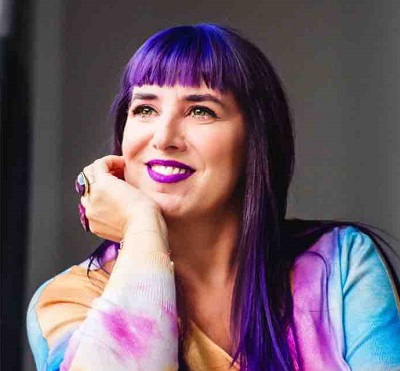
Cris Bolívar, APD IEA, MCC ICF
The Essential Enneagram as an application of the theoretical framework of Essentiality to the Enneagram, a philosophical-psycho-spiritual approach of the alchemical journey towards the harmonization of being, in connection with vulnerability, transcending the ego to grow in consciousness and wisdom.
It is focused on non-duality, harmony and reconnection with the essential being on a trip to wisdom and metacompencies of Being.
In this context, the evolutionary transpersonal process will be revealed throughout the presentation.
Some of the keys to the healing and harmonization trip will be addressed, so that we can access our internal wisdom and metacompencies from which to shine fully.
Each of the three wounds and its relationship with the process of creating the ego and the shadow will be explained, the bidirectional intervention model or essential coaching will be seen as tools to accompany the trip to the being and its metacompetencies through the Essential Enneagram.
The presentation will be interwoven with examples, applications and useful tools for both personal development and for the accompaniment of others (coaching, psychotherapy ...).
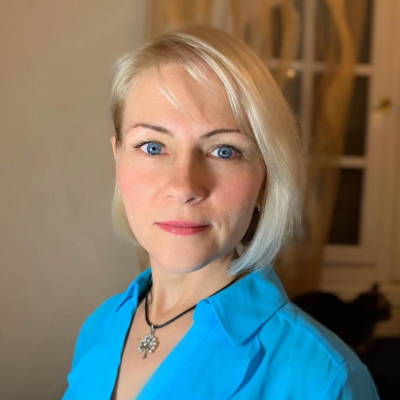
Nataliia Bolshakova, MA
"Educational Approach to Delivering the Enneagram to Teenagers and Preteens" is a practice-based (over two hundred students went through the "Enneagram for Teenagers" program) presentation that guides an Enneagram educator in their transformational process from just a teacher of the Enneagram into becoming a true facilitator of students' growth into adulthood, while maintaining their self-esteem intact and enhancing a healthy sense of responsibility.
The presentation will be talking about an experience of how to understand, respect, connect with, motivate, and work most productively, Unite & Ignite while delivering the Enneagram knowledge to young adults and making the Enneagram educational process the one about people touching the essence of other people.
Ben Campbell
"Rewilding the Enneagram" is an innovative approach to Inner Work that brings us face-to-face with the experience of our Essence and every other aspect of Type, as they exist in nature itself. Human psychology is just as much a part of nature as mountains, butterflies, plankton and oak trees. What might we learn about ourselves, our souls, and our callings, if we were to bring in wild nature as an active participant in our self-development? And what if that were just the beginning?
Learning to "rewild" our practice is not only a powerful new way to engage with the Enneagram for self-discovery, it also invites us to move beyond ourselves into a deeply meaningful relationship with the natural world. It is through this ongoing relationship that we will discover how each of us is called to respond and adapt to the climate crisis.
This presentation will explain how the philosophy of "rewilding" can inform a nature-based Enneagram practice, with Type-specific examples and suggestions for how to engage with the natural world outside your own front door. There will also be an interactive exercise followed by Q&A.
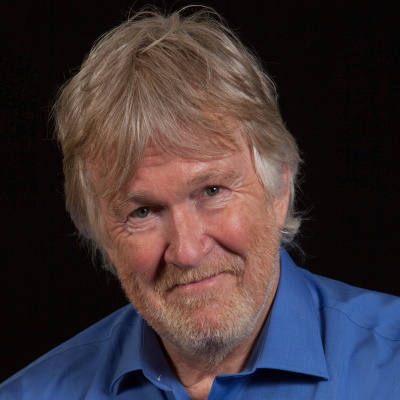
Tom Condon
If you are using the Enneagram to personally grow or professionally as a coach, counselor or therapist come learn about a different method for personal development and making meaningful changes in yourself and others.
I will present ways to create exercises, homework assignments, therapeutic rituals and behavioral tasks that will help you or your clients further resolve personality dilemmas and lessen the influence of your Enneagram style.
The general goal of such work is to wear an Enneagram style more lightly, to drain your personality defenses of their defensive intensity and help your ego become more of a guide, a scout, an advisor rather than a dictator. Whatever way you work with the Enneagram, these practices will support and extend positive changes and lead you towards greater presence and freedom of choice.
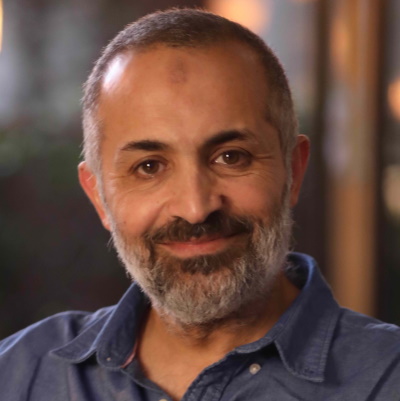
Khaled ElSherbini, PhD
This presentation is based on an academic MSc dissertation conducted in, and published by, Liverpool John Moores University in the UK under the same name. The dissertation uses a grounded theory approach to explore how five transpersonal concepts: God, love, heart, bliss, and heaven, are given nine different meanings through the perspectives of the nine Enneagram types.
The findings also show that, while each type defined each concept differently, yet an overarching core meaning to each of these five transpersonal concepts could be identified. These clearly different interpretations to each of the concepts for each of the nine types shows how the types have different worldviews and different interpretations of the transpersonal concepts. In addition, an interesting common link between the five concepts was also identified from the results, showing how these concepts relate to each other.
The results of the study show a consistent thematic pattern for each type when it comes to transpersonal concepts. And it is these consistent themes that we reveal herein. This research not only provides a deeper insight into the transpersonal dimension of the nine Enneagram types, but also opens the door for much needed research in the field.

Montse Fernandez
The most basic instinct of human beings is to negotiate; we could practically say that we spend our whole lives negotiating, both professionally and personally. Sometimes for small and insignificant transactions and other transactions that are economically or emotionally very transcendent or important.
In each of these negotiations, without realizing it, our dominant instinctual biases will be with us and will be responsible for our fixations and possible weaknesses during the process of preparing the negotiation as well as during the negotiation with the other side.
During my presentation I will explain how the knowledge of Instinctual Biases will help us to make better negotiations, to anticipate which things to emphasize and which not to focus depending on the type of negotiation and the Instinctual biases of the person or the company with whom we are negotiating.
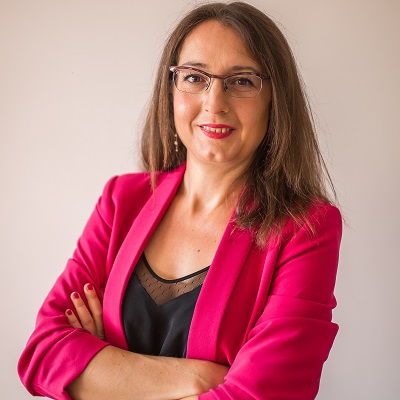
Alessandra Furvis
Discovering the common roots of Enneagram and Astrology led me to a research on more than 150 birth charts, in order to find indicators of different personality types and structures, often becoming obstacles to the creative flow and authenticity. The position and distribution of the planets at the place and time of our birth gives a symbolic blueprint of how inclined we are to approach life in a unique way. In the Evolutive Astrology, though, this approach is not deterministic, it's rather a starting point which suggests ways to get out of the autopilot, or reactive ego-mode.
In this presentation we will see some of these indicators and examples of the Eneagrama Creativo methodology, that allows us to formulate more accurate hypotheses about ennea-type structures and to define personalized, step-by-step creative unlocking processes. Creative unlocking is open to everyone, not only for "artists", because it's the consciousness process allowing us out of the repetitive patterns of the ego and its limitations. "I'm not creative"is no longer an issue.
My methodology is intended to unite, without merging, these two millenary models, using them in different steps of the creativity coaching process, thus keeping their powerful integrity.
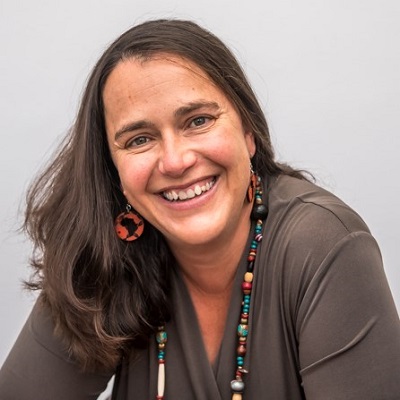
Lucille Greeff
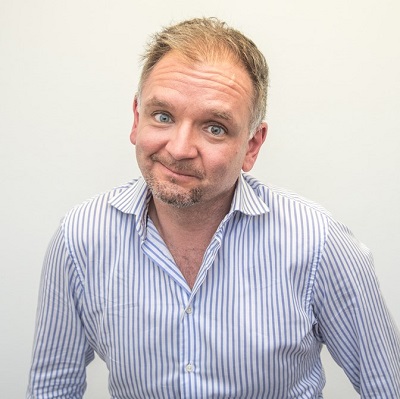
Dr Simon Kettleborough, DProf, MSc, MBA, DipMan, BA (Hons)
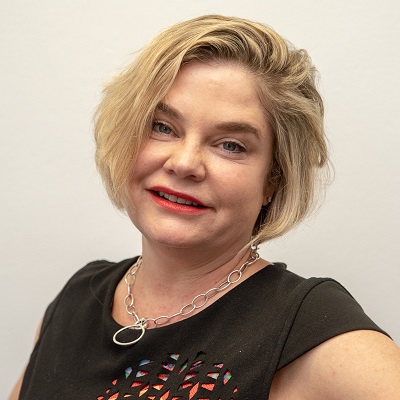
Dr Julia Kukard, DProf, MBA, MA
Epigenetics is the study of how gene expression varies based on context, even while the gene itself remains unchanged. We would like to borrow this idea as a metaphor for working with the Enneagram, as we explore the range of behavioural responses available for each type.
We will investigate three contributing factors in this session; firstly, people's inner worlds, secondly, people's outer worlds, and thirdly how these two worlds engage. We will notice how changes in any of these three factors have an impact on behavioural responses. For example, we will share how maturity plays a role in broadening epigenetic responses and how this can support people to live more fully in their outer worlds, rather than just their inner worlds. We will also observe how contexts can bring forth atypical behaviours and how these behavioural extensions may in fact be highly adaptive, especially in chaotic and uncertain environments.
This interactive session will showcase the expertise and experience of the participants. This will allow us to explore our theory about how the dialogue between inner and outer worlds manifests in behaviour in a grounded manner. The session brings adult development theory into conversation with the Enneagram.
R. Karl Hebenstreit, Ph.D., PCC, PHR
Organizations worldwide are struggling with the challenges of shortages of qualified employees, remote work demands, and motivating/engaging/retaining their existing workforce. This workshop will show leaders, HR practitioners, coaches, and consultants how to pitch or use Enneagram-grounded solutions to corporate clients to help them address these challenges successfully.
Workshop attendees will participate in a highly-interactive exercise that they can immediately apply in their practices to introduce and "land" the Enneagram model with their clients, identify challenges they want to work on using the model (including values alignment, Diversity/Equity/Inclusion integration, change management and communications considerations, etc.). Participants will walk away with practical tools and methods to apply the Enneagram model to successfully resolve a multitude of their clients' business challenges.

Roxanne Howe-Murphy, EdD
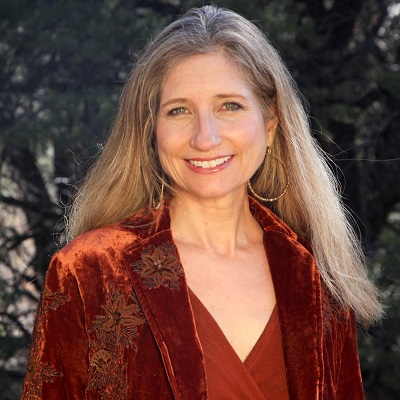
Diana Redmond, PCC
What is the world calling forth from us right now? The orientation of this session recognizes that inherent in every living system is a capacity, often invisible, for the expression of one's well-being or essence. The process for uniting and igniting is sourced not from an orientation of fixing, but on how we can create the conditions to develop our own capacity for wholeness and interconnectedness and support others in creating theirs.
This emergent body of work called EnneaCrossings™ integrates two powerful symbols that reflect the transformational journey: the Enneagram and the cross-cultural cross.
The EnneaCrossings™ framework provides the basis for a theory of change that catalyzes the still unrealized potential for wholeness and interconnectedness that live deep within ourselves and those we serve to come forth.
In this interactive and engaging session, there will be a brief introduction to EnneaCrossings™ and its associated theory of change. We will practice applying the theory of change to the Finite dimension in the Portal of Engaged Presence, linking Enneagram Points 1 and 8 with its intersection with the Infinite dimension Enneagram Point 9-Void. We will explore selected dynamics that ignite or interfere with the capacity for inspired engagement in the world.
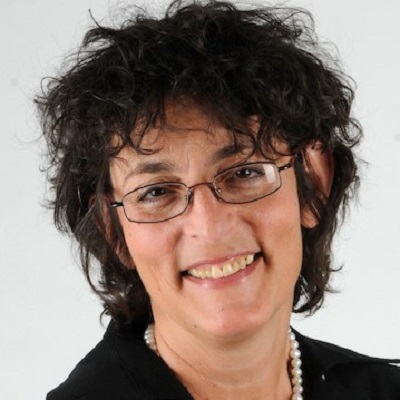
Andrea Isaacs
When first learning the Enneagram, you wanted to know what your type was, right?
Why does success in relationships, business or life come easily to some, yet others seem to struggle?
It's not just about their type. It's their Zone of Genius and The Domino Effect. Your gifts and challenges in ALL 9 areas impact each other and impact you to either empower or disempower you.
This embodied approach is an efficient tool to expand your possibilities to managing life's challenges.
This is for you if you're navigating change, growth, needing to pivot, at a turning point in life or ready for more ease, peace and joy.
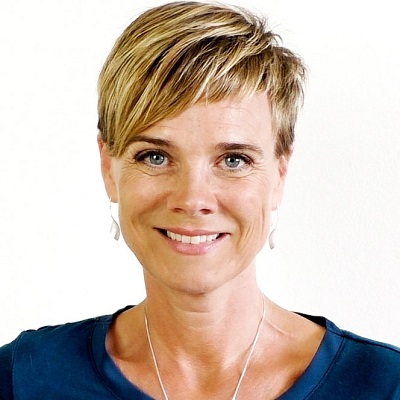
Cicci Lyckow Bäckman
In inner work, the big "unite" that needs to happen is balancing our three Centres of Intelligence. And while balance often requires toning down certain bits or taking an honest look at how the ego has claimed some faculties for its own, another important part of the work is reclaiming faculties that have been sacrificed in order to keep us safe (from the ego's point of view).
When we gently bring attention to areas that have been neglected or obscured from awareness, our wholeness can click into place, and we can begin including the pieces of ourselves that we — innocently and sometimes unconsciously — left out. This is where we access our true ignition, and the unity we can then create is at a whole different level.
In this workshop, we bring light to neglected, forgotten, and vulnerable aspects of the centres. Specifically, we will explore how, as ego-identification increases in the average levels of balance, the types scramble, compartmentalise, distort, and/or tune out the centres.
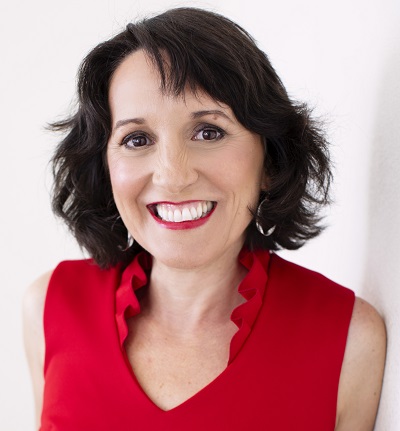
Isabelle Peyrichoux, MS
Have you ever wondered how to integrate or combine the Enneagram and the Myers-Briggs Typologies? What distinct purpose does each serve when it comes to career development and purposeful work discovery? Or maybe you have experienced some skepticism about the Myers-Briggs Personality System? Certified and trained in both systems, Isabelle Peyrichoux has ten years of first-hand experience using the two systems to effectively coach hundreds of leaders and professionals to discover and actualize their purposeful work.
In this session, Isabelle will address how to harness the combined power of the two personality systems to ignite purposeful work in individuals and in the world. She will share the framework she developed to help her clients discover and activate their purposeful work. Then, she will discuss where and when in this framework the Myers-Briggs and Enneagram best fit in. She will address how they complement each other, and how to best use each for maximized impact. Through lecture, large and small groups discussions, and exercises, participants will learn how to apply this framework to their own career development to ignite their own purposeful work as well as to apply these methods for the facilitation of professional transformation in others.
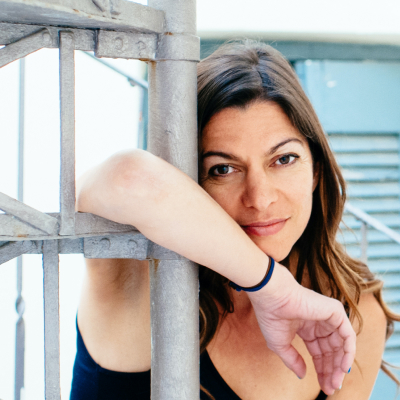
Lynn Roulo
When you combine the psychological and personal growth tools of the Enneagram with the somatic tools of Kundalini Yoga, you have a powerhouse to accelerate personal change. Unite and Ignite speaks directly to this combination as this workshop unites two completely separate systems, both used to cultivate personal development and compassion, bringing them together to ignite and accelerate awareness and growth.
This interactive presentation provides an overview of each of the 27 Enneagram subtypes, highlighting the unique growth path for each personality profile. The workshop offers practical tools to accelerate personal growth, including Kundalini Yoga meditations for each of the 27 subtypes. Participants are invited to try 27 unique meditations, each matched to the individual growth path of the subtype.
The 27 Enneagram subtype growth paths are based on Beatrice Chestnut's book "The Complete Enneagram,"and the Kundalini Yoga meditations are based on Kundalini Research Institute (KRI) meditations. The combination of the systems leverages Lynn's existing work (books Headstart for Happiness and The Nine Keys). This is an all-inclusive session, and everyone of all physical abilities and experience levels can participate in this workshop.
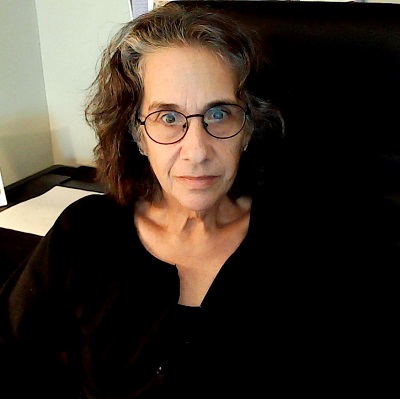
Joan R Ryan, J.D.
Working with the Enneagram together with Internal Family Systems (IFS), I find that the models complement each other nicely. IFS is increasingly recognized as an evidence based therapeutic system and enjoys wide usage worldwide. IFS is a model of multiplicity where each individual has many Parts within them. IFS protocols are used to help identify, communicate and repurpose or unburden some of these Parts.
My working hypothesis is that Enneagram type is a constellation of IFS Parts which support the Type structure both positively and negatively. Working with many groups over the past 3 years, I have found that Parts seem to be similar across individuals of the same Enneagram type but will have variations according to the history and life experiences of each person. For example, we find Parts consistent with the key elements of the Type, strengths and challenges. Using IFS protocols, I assist my students in communicating with their Parts to positive result.
The IFS concept of "Self" aligns well with the higher or essence qualities of the Types. Both are avenues to strengthen our capacity for receptive awareness.
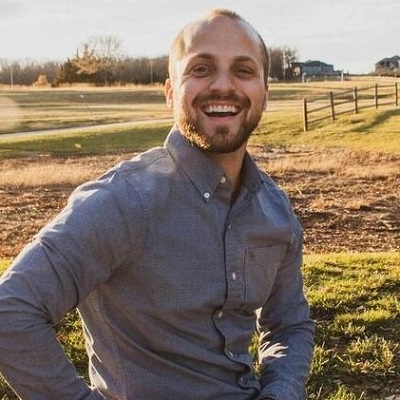
Michael Shahan, L-MFT
Polyvagal Theory explains that we react to threats with certain levels of fight or flight intensity. Our nervous system perceives a threat and then tells our body how to react. As the threats grow in intensity, so do our responses.
Polyvagal Theory is commonly used in mental health circles to help clients befriend and understand their Nervous Systems responses to threats. Through the Enneagram lens, we can pinpoint these responses much more accurately and often predict behavior patterns that are missed when Polyvagal Theory is used without the Enneagram.
In this presentation, we take the illustration of the “Polyvagal Ladder” to demonstrate levels of fight or flight response and overlay that with the Enneagram to demonstrate how these fight or flight responses can vary drastically from one person to the next. This presentation is especially relevant for therapists and healing professionals who interact with clients who experience high stress and anxiety.
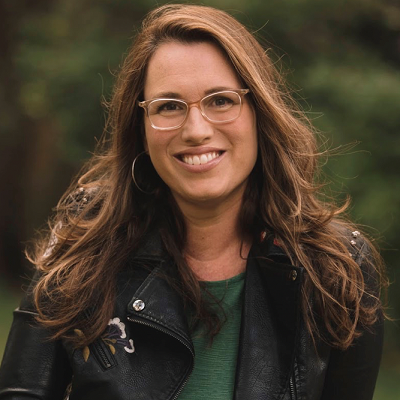
Valerie Tih ATDip, BEd
Do you feel discouraged by the gap between who you want to be as a parent and the day-to-day realities of parenting? I know it's frustrating to make a ton of parenting gains and yet still feel like something isn't quite right, especially when you want to parent in a conscious way, perhaps differently than how you were raised.
This presentation will show you how to create a culture of connection in the home, a culture built on a foundation of Presence. Learn how the Enneagram reveals what's blocking your capacity to be present and your parenting "blind spots"that prohibit the very connection you seek. Also learn how to come into contact with your own inner adult or "Essence Parent", the part of you that has the capacity to hold not only your own big reactions with compassion, but your children's big feelings as well. Ignite your Inner Essence Parent to become the role model you long to be and begin to leave a healthy family legacy for generations to come. Learn more about parenting with the Enneagram and get your free guide to discover your Enneagram type here: www.joyfullcoaching.ca
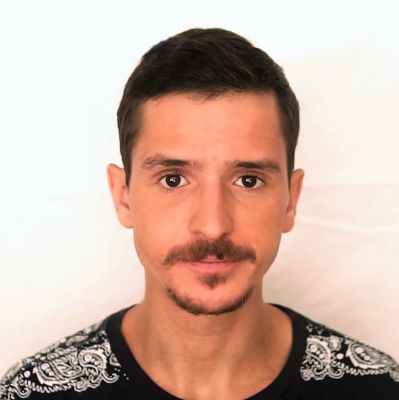
Saleh Vallander, MD
How does the Enneagram of Personality relate to the brain? This workshop delves into the fascinating world of neuroscience to explore the inner workings of the Enneagram Types and Instincts. The Enneagram will be paralleled to affective neuroscience discoveries made by Jaak Panksepp, who charted seven primary emotional networks in the brain: FEAR, RAGE, GRIEF, SEEKING, LUST, CARE, and PLAY. These seven emotional systems correspond to the Enneagram Triads and Instincts. Moreover, the Enneagram Passions can be viewed as learned emotional responses that form through secondary-process conditioning or tertiary brain processes of higher cognition.
This has wide implications in terms of our understanding of the Enneagram Types. It also brings new perspectives to the ongoing debate on the three Instincts, presenting a new model of how the Instincts relate to the Passions.
The Enneagram and neuroscience are two mutually enriching fields of knowledge, and their alliance can potentially pave the way for a revolutionary understanding of the mind.
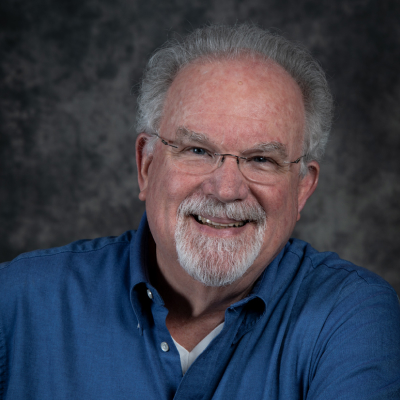
Jerome Wagner, Ph.D.
What’s good stress, eustress, for each style? And how does each style create their own bad stress, distress? What’s the natural resilience of each style? And how does overdoing a good thing (eustress) bring about a bad thing (distress)? How can we employ in our own style the surviving and thriving mechanisms of the other styles?
Some suffering is inevitable and some is unnecessary. How does each style create their own unnecessary suffering with their maladaptive thinking, feeling, and behaving?
To function at our best, we need an optimal level of arousal. A little stimulation, excitement, and anxiety get us focused and up for the game (eustress). Too much stimulation leads to shutting down, tuning out, and falling asleep or ramping up, spinning out, and shooting energy in all directions (distress). What helps each style function optimally?
Defense mechanisms in the service of the ego can be distorting and limiting. Defense mechanisms in the service of the self may actually help us get somewhere. What’s good about each style’s defensive maneuvers.
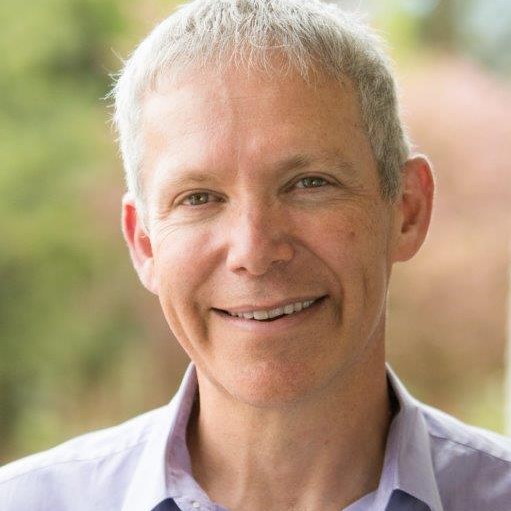
Paul Wyman, PCC
Each Enneagram type can flourish by balancing one key pair of opposite drives within. Discover what these internal polarities are, how they work, and how they illuminate the greatest strengths and most persistent challenges for each Enneagram type. You’ll learn how to recognize when these polarities are out of balance, and how to re-balance them by applying techniques adapted from parts-based psychology.
It’s a gentle, insightful, experiential method, with the potential to produce surprisingly deep insights, and accelerate personal development. Featuring demonstrations, case studies and experiential exercises, you’ll walk away from this session with a new way of thinking about the Enneagram, and new practices you can use right away.
Ben Campbell

Lynda Roberts
This session will introduce the history of the Enneagram and the purpose of the Enneagram. Where did the teachings come from and how did they emerge or arrive in their present form? What does it mean to be a “three-centered being”? What are the functions of the Head, Heart, and Body/Gut? How do the 9 personality styles emerge from and relate to the Three Centers?

Dayo Ajanaku

Danielle Fanfair
This session will go deeper into the Body Center and the three body-based personality styles at points 8, 9, 1. What are the characteristics and functions of our Moving Center? What are some of the distinguishing features of the 8, 9, 1 personality types

Caroline King

Milton Stewart
This session will go deeper into the Heart Center and the three heart-based personality styles at points 234. What are the characteristics and functions of our Feeling Center? What are some of the distinguishing features of the 2, 3, 4 personality types?

Dina ElBadry

Beatrice Chestnut
This session will go deeper into the Head Center and the three head-based personality styles at points 5, 6, 7. What are the characteristics and functions of our Thinking Center? What are some of the distinguishing features of the 5, 6, 7 personality types?
Ben Campbell

Dayo Ajanaku

Caroline King

Dina ElBadry
In this panel the Discovery Track presenters will share their experience and advice on how the Enneagram can be more accessible to diverse audiences. How do we spread and reach communities that are commonly overlooked with the Enneagram?

Deborah Threadgill Egerton, Ph.D.
In our opening Keynote, Deborah Egerton introduces the concept of employing the Enneagram as the ultimate map to guide and unite us in a world divided. We will look at the gifts of each of the 9 points of the Enneagram represented as defenders, healers and bridge builders, as we discover the unique unifier at each point. When discovered and embraced each gift unites us and enhances our capacity to love, support and move together toward higher ground, as intended, as one.

Robert Holden, Ph.D.

Deborah Threadgill Egerton, Ph.D

Susan Olesek

Elita Moiseja
“Activism is my rent for living on the planet,” said Alice Walker, novelist, poet, and social activist. What does activism mean to you? And how can the Enneagram help you to practice your activism in an engaged, mindful, and loving way in the world today? Join Robert Holden [host] and a panel of Ennea-activists that include Deborah Egerton, author of Know Justice, Know Peace and Susan Olesek, founder of the Enneagram Prison Project and Elita Moiseja.

Catherine Bell, MBA

Russ Hudson
What is creativity? Creativity is something that keeps us united, and it influences everything from education and societal change. The actual process is mysterious but there are things we can say about the result. It is our ability to generate and recognize ideas, alternatives, and possibilities in solving problems, communicating our inner landscapes to others and entertaining ourselves and others. Innovation, the novelty in creativity, can be seen as an idea that has transformed into practical, tangible reality - something new and beyond cutting edge.
The Enneagram provides us a specific lens into creativity and how we can embody every point when we are in flow. While we may have our natural default patterns, creativity invites us into embodying all types.
In this session, Catherine Bell will ask Russ Hudson investigative questions to unearth
the elements of creativity and will review the different Enneagram points from a practice perspective.
Our Agenda:
A process to activate your creativity.

Chloé Keric-Eli
Based on the results of a master's thesis research, this presentation explores communicative practices involved in exchange of authority and power in the personal development industry. Relationships of authority and power become problematic when professionals and clients are not aware enough of the dynamics at play. Although most practitioners don't intentionally want to become a guru or gain power and authority over their clients, some ethical questions remain.
How does my own ego structure can create blind spots towards one's own 'authoritative talents'? How can I foster safe and ethical spaces? As a client, how does my own ego structure make me at risk of surrendering my personal power to the supposed 'wise guide' or 'expert' and how do I become more aware so I can maintain my own authority? Tools and best practices will be shared for personal development professionals and for clients. Acts of violence and abuse are everywhere: from micro-aggressions in the street to global wars, passing by power abuses from personal development professionals or leaders in organizations. They all participate in maintaining inequality and power dynamics through communication and in relationships. Gaining awareness supports societal systemic change.

Chichi Agorom
Chichi Agorom invites us to compassionately investigate how we hold the Enneagram as a tool for liberation, what our collective responsibility is to each other, and what a vision of a world united in liberation will require of us. Traveling the circle of the Enneagram, we will explore what it looks like to get intentional about building together a future that is free for all of us.
Ben Campbell
"Rewilding the Enneagram" is an innovative approach to Inner Work that brings us face-to-face with the experience of our Essence and every other aspect of Type, as they exist in nature itself. Human psychology is just as much a part of nature as mountains, butterflies, plankton and oak trees. What might we learn about ourselves, our souls, and our callings, if we were to bring in wild nature as an active participant in our self-development? And what if that were just the beginning?
Learning to "rewild" our practice is not only a powerful new way to engage with the Enneagram for self-discovery, it also invites us to move beyond ourselves into a deeply meaningful relationship with the natural world. It is through this ongoing relationship that we will discover how each of us is called to respond and adapt to the climate crisis.
This presentation will explain how the philosophy of "rewilding" can inform a nature-based Enneagram practice, with Type-specific examples and suggestions for how to engage with the natural world outside your own front door. There will also be an interactive exercise followed by Q&A.

Valerie Tih ATDip, BEd
Do you feel discouraged by the gap between who you want to be as a parent and the day-to-day realities of parenting? I know it's frustrating to make a ton of parenting gains and yet still feel like something isn't quite right, especially when you want to parent in a conscious way, perhaps differently than how you were raised.
This presentation will show you how to create a culture of connection in the home, a culture built on a foundation of Presence. Learn how the Enneagram reveals what's blocking your capacity to be present and your parenting "blind spots"that prohibit the very connection you seek. Also learn how to come into contact with your own inner adult or "Essence Parent", the part of you that has the capacity to hold not only your own big reactions with compassion, but your children's big feelings as well. Ignite your Inner Essence Parent to become the role model you long to be and begin to leave a healthy family legacy for generations to come. Learn more about parenting with the Enneagram and get your free guide to discover your Enneagram type here: www.joyfullcoaching.ca
Ben Campbell

Lynda Roberts
This session will introduce the history of the Enneagram and the purpose of the Enneagram. Where did the teachings come from and how did they emerge or arrive in their present form? What does it mean to be a “three-centered being”? What are the functions of the Head, Heart, and Body/Gut? How do the 9 personality styles emerge from and relate to the Three Centers?

Dayo Ajanaku

Danielle Fanfair
This session will go deeper into the Body Center and the three body-based personality styles at points 8, 9, 1. What are the characteristics and functions of our Moving Center? What are some of the distinguishing features of the 8, 9, 1 personality types

Caroline King

Milton Stewart
This session will go deeper into the Heart Center and the three heart-based personality styles at points 234. What are the characteristics and functions of our Feeling Center? What are some of the distinguishing features of the 2, 3, 4 personality types?

Dina ElBadry

Beatrice Chestnut
This session will go deeper into the Head Center and the three head-based personality styles at points 5, 6, 7. What are the characteristics and functions of our Thinking Center? What are some of the distinguishing features of the 5, 6, 7 personality types?
Ben Campbell

Dayo Ajanaku

Caroline King

Dina ElBadry
In this panel the Discovery Track presenters will share their experience and advice on how the Enneagram can be more accessible to diverse audiences. How do we spread and reach communities that are commonly overlooked with the Enneagram?

Deborah Threadgill Egerton, Ph.D.
In our opening Keynote, Deborah Egerton introduces the concept of employing the Enneagram as the ultimate map to guide and unite us in a world divided. We will look at the gifts of each of the 9 points of the Enneagram represented as defenders, healers and bridge builders, as we discover the unique unifier at each point. When discovered and embraced each gift unites us and enhances our capacity to love, support and move together toward higher ground, as intended, as one.

Robert Holden, Ph.D.

Deborah Threadgill Egerton, Ph.D

Susan Olesek

Elita Moiseja
“Activism is my rent for living on the planet,” said Alice Walker, novelist, poet, and social activist. What does activism mean to you? And how can the Enneagram help you to practice your activism in an engaged, mindful, and loving way in the world today? Join Robert Holden [host] and a panel of Ennea-activists that include Deborah Egerton, author of Know Justice, Know Peace and Susan Olesek, founder of the Enneagram Prison Project and Elita Moiseja.

Catherine Bell, MBA

Russ Hudson
What is creativity? Creativity is something that keeps us united, and it influences everything from education and societal change. The actual process is mysterious but there are things we can say about the result. It is our ability to generate and recognize ideas, alternatives, and possibilities in solving problems, communicating our inner landscapes to others and entertaining ourselves and others. Innovation, the novelty in creativity, can be seen as an idea that has transformed into practical, tangible reality - something new and beyond cutting edge.
The Enneagram provides us a specific lens into creativity and how we can embody every point when we are in flow. While we may have our natural default patterns, creativity invites us into embodying all types.
In this session, Catherine Bell will ask Russ Hudson investigative questions to unearth
the elements of creativity and will review the different Enneagram points from a practice perspective.
Our Agenda:
A process to activate your creativity.

Beatrice Chestnut, PhD
This presentation will trace key aspects of a specific body of ancient wisdom teachings—or " Perennial Philosophy" as it has evolved over time. This " wisdom tradition" also defines the core principles at the heart of many of the world's religions. We will explore the hypothesis that the Enneagram functions as a symbol of this age-old tradition in a way that can clarify the meaning of the Enneagram as a map of transformation—and show us how we can use this powerful map as it was meant to be used—as a means of igniting truly transformative psycho-spiritual inner work.
This presentation will investigate the possibility that the Enneagram was connected to—and representative of—this ancient teaching. By tracing evidence of certain commonalities that define this " wisdom tradition" in key texts related to Christian Hermeticism, Jewish Mysticism, Sufism, and the works of some of the key historical figures it influenced over time, I will highlight the main holistic teachings that the Enneagram can be seen to symbolize. Clarifying the key defining tenets of this ancient tradition allows us to see how these ideas encoded in the Enneagram symbol allow us to access important teachings that can guide our Enneagram studies.

Terry Saracino

Christopher Copeland
Is a transformative experience with the Enneagram accessible for people with marginalized identities? As much as we'd like to say a resounding "Yes!”...We know this is not the case. Not yet.
The Enneagram movement has largely centered a limited demographic — white, middle to upper class, cisgender, heterosexual, able-bodied, and neurotypical people — which results in a limited knowledge of type. This is not only a justice issue for people who hold marginalized identities, but also a hindrance to fully understanding and accurately teaching the nine types.
Real transformation necessitates that we see our personality as part of our holistic human experience in relation to the systems within which we exist. You’ll hear from a panel of diverse individuals sharing their lived experience of embodying identities that are not often centered in Enneagram writing and teaching. Join us as we explore ways to integrate our intersecting identities (such as race, gender and ability) with the Enneagram.
The Narrative Enneagram, the first and only IEA Accredited Enneagram School with Distinction, is building on its long-standing commitment to transforming lives and creating a more compassionate world by intentionally centering diversity, equity, inclusion, and belonging.

Chloé Keric-Eli
Based on the results of a master's thesis research, this presentation explores communicative practices involved in exchange of authority and power in the personal development industry. Relationships of authority and power become problematic when professionals and clients are not aware enough of the dynamics at play. Although most practitioners don't intentionally want to become a guru or gain power and authority over their clients, some ethical questions remain.
How does my own ego structure can create blind spots towards one's own 'authoritative talents'? How can I foster safe and ethical spaces? As a client, how does my own ego structure make me at risk of surrendering my personal power to the supposed 'wise guide' or 'expert' and how do I become more aware so I can maintain my own authority? Tools and best practices will be shared for personal development professionals and for clients. Acts of violence and abuse are everywhere: from micro-aggressions in the street to global wars, passing by power abuses from personal development professionals or leaders in organizations. They all participate in maintaining inequality and power dynamics through communication and in relationships. Gaining awareness supports societal systemic change.
Frederik Coene, PhD
Meditation, spiritual retreats, self-development workshops, deep self-reflection and processing trauma may all play an extremely useful and important role but none is a guarantee for personal growth. Our capacity for compassion and acceptance is not cultivated in a vacuum, but always in relationship with other people. So, love is the vector for personal growth, but what is love? Sanskrit, Latin, Greek and so many other languages of ancient civilisations distinguished between many types of love, but most contemporary languages is far less sophisticated in the nuances of love. In this presentation,
Dr. Coene will explain how different ego-states (or levels of development) correspond to six different types of love towards a partner or spouse: eros, mania, ludus, pragma, storge and agape. Of course, type and instinct will give a specific nuance to these love styles, so understanding these dynamics helps us to understand how we sabotage our relationships. It also teaches us how many people may marry for the wrong reasons, or even worse, divorce for the wrong reasons. On the other hand, it also explains us why we may get stuck on our self-development path, and more importantly how to grow by changing the way we love and foster our relationships

Chichi Agorom
Chichi Agorom invites us to compassionately investigate how we hold the Enneagram as a tool for liberation, what our collective responsibility is to each other, and what a vision of a world united in liberation will require of us. Traveling the circle of the Enneagram, we will explore what it looks like to get intentional about building together a future that is free for all of us.

Cris Bolívar, APD IEA, MCC ICF
The Essential Enneagram as an application of the theoretical framework of Essentiality to the Enneagram, a philosophical-psycho-spiritual approach of the alchemical journey towards the harmonization of being, in connection with vulnerability, transcending the ego to grow in consciousness and wisdom.
It is focused on non-duality, harmony and reconnection with the essential being on a trip to wisdom and metacompencies of Being.
In this context, the evolutionary transpersonal process will be revealed throughout the presentation.
Some of the keys to the healing and harmonization trip will be addressed, so that we can access our internal wisdom and metacompencies from which to shine fully.
Each of the three wounds and its relationship with the process of creating the ego and the shadow will be explained, the bidirectional intervention model or essential coaching will be seen as tools to accompany the trip to the being and its metacompetencies through the Essential Enneagram.
The presentation will be interwoven with examples, applications and useful tools for both personal development and for the accompaniment of others (coaching, psychotherapy ...).

Tom Condon
If you are using the Enneagram to personally grow or professionally as a coach, counselor or therapist come learn about a different method for personal development and making meaningful changes in yourself and others.
I will present ways to create exercises, homework assignments, therapeutic rituals and behavioral tasks that will help you or your clients further resolve personality dilemmas and lessen the influence of your Enneagram style.
The general goal of such work is to wear an Enneagram style more lightly, to drain your personality defenses of their defensive intensity and help your ego become more of a guide, a scout, an advisor rather than a dictator. Whatever way you work with the Enneagram, these practices will support and extend positive changes and lead you towards greater presence and freedom of choice.

Khaled ElSherbini, PhD
This presentation is based on an academic MSc dissertation conducted in, and published by, Liverpool John Moores University in the UK under the same name. The dissertation uses a grounded theory approach to explore how five transpersonal concepts: God, love, heart, bliss, and heaven, are given nine different meanings through the perspectives of the nine Enneagram types.
The findings also show that, while each type defined each concept differently, yet an overarching core meaning to each of these five transpersonal concepts could be identified. These clearly different interpretations to each of the concepts for each of the nine types shows how the types have different worldviews and different interpretations of the transpersonal concepts. In addition, an interesting common link between the five concepts was also identified from the results, showing how these concepts relate to each other.
The results of the study show a consistent thematic pattern for each type when it comes to transpersonal concepts. And it is these consistent themes that we reveal herein. This research not only provides a deeper insight into the transpersonal dimension of the nine Enneagram types, but also opens the door for much needed research in the field.

Lucille Greeff

Dr Simon Kettleborough, DProf, MSc, MBA, DipMan, BA (Hons)

Dr Julia Kukard, DProf, MBA, MA
Epigenetics is the study of how gene expression varies based on context, even while the gene itself remains unchanged. We would like to borrow this idea as a metaphor for working with the Enneagram, as we explore the range of behavioural responses available for each type.
We will investigate three contributing factors in this session; firstly, people's inner worlds, secondly, people's outer worlds, and thirdly how these two worlds engage. We will notice how changes in any of these three factors have an impact on behavioural responses. For example, we will share how maturity plays a role in broadening epigenetic responses and how this can support people to live more fully in their outer worlds, rather than just their inner worlds. We will also observe how contexts can bring forth atypical behaviours and how these behavioural extensions may in fact be highly adaptive, especially in chaotic and uncertain environments.
This interactive session will showcase the expertise and experience of the participants. This will allow us to explore our theory about how the dialogue between inner and outer worlds manifests in behaviour in a grounded manner. The session brings adult development theory into conversation with the Enneagram.

Roxanne Howe-Murphy, EdD

Diana Redmond, PCC
What is the world calling forth from us right now? The orientation of this session recognizes that inherent in every living system is a capacity, often invisible, for the expression of one's well-being or essence. The process for uniting and igniting is sourced not from an orientation of fixing, but on how we can create the conditions to develop our own capacity for wholeness and interconnectedness and support others in creating theirs.
This emergent body of work called EnneaCrossings™ integrates two powerful symbols that reflect the transformational journey: the Enneagram and the cross-cultural cross.
The EnneaCrossings™ framework provides the basis for a theory of change that catalyzes the still unrealized potential for wholeness and interconnectedness that live deep within ourselves and those we serve to come forth.
In this interactive and engaging session, there will be a brief introduction to EnneaCrossings™ and its associated theory of change. We will practice applying the theory of change to the Finite dimension in the Portal of Engaged Presence, linking Enneagram Points 1 and 8 with its intersection with the Infinite dimension Enneagram Point 9-Void. We will explore selected dynamics that ignite or interfere with the capacity for inspired engagement in the world.

Andrea Isaacs
When first learning the Enneagram, you wanted to know what your type was, right?
Why does success in relationships, business or life come easily to some, yet others seem to struggle?
It's not just about their type. It's their Zone of Genius and The Domino Effect. Your gifts and challenges in ALL 9 areas impact each other and impact you to either empower or disempower you.
This embodied approach is an efficient tool to expand your possibilities to managing life's challenges.
This is for you if you're navigating change, growth, needing to pivot, at a turning point in life or ready for more ease, peace and joy.

Cicci Lyckow Bäckman
In inner work, the big "unite" that needs to happen is balancing our three Centres of Intelligence. And while balance often requires toning down certain bits or taking an honest look at how the ego has claimed some faculties for its own, another important part of the work is reclaiming faculties that have been sacrificed in order to keep us safe (from the ego's point of view).
When we gently bring attention to areas that have been neglected or obscured from awareness, our wholeness can click into place, and we can begin including the pieces of ourselves that we — innocently and sometimes unconsciously — left out. This is where we access our true ignition, and the unity we can then create is at a whole different level.
In this workshop, we bring light to neglected, forgotten, and vulnerable aspects of the centres. Specifically, we will explore how, as ego-identification increases in the average levels of balance, the types scramble, compartmentalise, distort, and/or tune out the centres.

Isabelle Peyrichoux, MS
Have you ever wondered how to integrate or combine the Enneagram and the Myers-Briggs Typologies? What distinct purpose does each serve when it comes to career development and purposeful work discovery? Or maybe you have experienced some skepticism about the Myers-Briggs Personality System? Certified and trained in both systems, Isabelle Peyrichoux has ten years of first-hand experience using the two systems to effectively coach hundreds of leaders and professionals to discover and actualize their purposeful work.
In this session, Isabelle will address how to harness the combined power of the two personality systems to ignite purposeful work in individuals and in the world. She will share the framework she developed to help her clients discover and activate their purposeful work. Then, she will discuss where and when in this framework the Myers-Briggs and Enneagram best fit in. She will address how they complement each other, and how to best use each for maximized impact. Through lecture, large and small groups discussions, and exercises, participants will learn how to apply this framework to their own career development to ignite their own purposeful work as well as to apply these methods for the facilitation of professional transformation in others.

Lynn Roulo
When you combine the psychological and personal growth tools of the Enneagram with the somatic tools of Kundalini Yoga, you have a powerhouse to accelerate personal change. Unite and Ignite speaks directly to this combination as this workshop unites two completely separate systems, both used to cultivate personal development and compassion, bringing them together to ignite and accelerate awareness and growth.
This interactive presentation provides an overview of each of the 27 Enneagram subtypes, highlighting the unique growth path for each personality profile. The workshop offers practical tools to accelerate personal growth, including Kundalini Yoga meditations for each of the 27 subtypes. Participants are invited to try 27 unique meditations, each matched to the individual growth path of the subtype.
The 27 Enneagram subtype growth paths are based on Beatrice Chestnut's book "The Complete Enneagram,"and the Kundalini Yoga meditations are based on Kundalini Research Institute (KRI) meditations. The combination of the systems leverages Lynn's existing work (books Headstart for Happiness and The Nine Keys). This is an all-inclusive session, and everyone of all physical abilities and experience levels can participate in this workshop.

Joan R Ryan, J.D.
Working with the Enneagram together with Internal Family Systems (IFS), I find that the models complement each other nicely. IFS is increasingly recognized as an evidence based therapeutic system and enjoys wide usage worldwide. IFS is a model of multiplicity where each individual has many Parts within them. IFS protocols are used to help identify, communicate and repurpose or unburden some of these Parts.
My working hypothesis is that Enneagram type is a constellation of IFS Parts which support the Type structure both positively and negatively. Working with many groups over the past 3 years, I have found that Parts seem to be similar across individuals of the same Enneagram type but will have variations according to the history and life experiences of each person. For example, we find Parts consistent with the key elements of the Type, strengths and challenges. Using IFS protocols, I assist my students in communicating with their Parts to positive result.
The IFS concept of "Self" aligns well with the higher or essence qualities of the Types. Both are avenues to strengthen our capacity for receptive awareness.
Polyvagal Theory explains that we react to threats with certain levels of fight or flight intensity. Our nervous system perceives a threat and then tells our body how to react. As the threats grow in intensity, so do our responses.
Polyvagal Theory is commonly used in mental health circles to help clients befriend and understand their Nervous Systems responses to threats. Through the Enneagram lens, we can pinpoint these responses much more accurately and often predict behavior patterns that are missed when Polyvagal Theory is used without the Enneagram.
In this presentation, we take the illustration of the “Polyvagal Ladder” to demonstrate levels of fight or flight response and overlay that with the Enneagram to demonstrate how these fight or flight responses can vary drastically from one person to the next. This presentation is especially relevant for therapists and healing professionals who interact with clients who experience high stress and anxiety.

Valerie Tih ATDip, BEd
Do you feel discouraged by the gap between who you want to be as a parent and the day-to-day realities of parenting? I know it's frustrating to make a ton of parenting gains and yet still feel like something isn't quite right, especially when you want to parent in a conscious way, perhaps differently than how you were raised.
This presentation will show you how to create a culture of connection in the home, a culture built on a foundation of Presence. Learn how the Enneagram reveals what's blocking your capacity to be present and your parenting "blind spots"that prohibit the very connection you seek. Also learn how to come into contact with your own inner adult or "Essence Parent", the part of you that has the capacity to hold not only your own big reactions with compassion, but your children's big feelings as well. Ignite your Inner Essence Parent to become the role model you long to be and begin to leave a healthy family legacy for generations to come. Learn more about parenting with the Enneagram and get your free guide to discover your Enneagram type here: www.joyfullcoaching.ca

Jerome Wagner, Ph.D.
What’s good stress, eustress, for each style? And how does each style create their own bad stress, distress? What’s the natural resilience of each style? And how does overdoing a good thing (eustress) bring about a bad thing (distress)? How can we employ in our own style the surviving and thriving mechanisms of the other styles?
Some suffering is inevitable and some is unnecessary. How does each style create their own unnecessary suffering with their maladaptive thinking, feeling, and behaving?
To function at our best, we need an optimal level of arousal. A little stimulation, excitement, and anxiety get us focused and up for the game (eustress). Too much stimulation leads to shutting down, tuning out, and falling asleep or ramping up, spinning out, and shooting energy in all directions (distress). What helps each style function optimally?
Defense mechanisms in the service of the ego can be distorting and limiting. Defense mechanisms in the service of the self may actually help us get somewhere. What’s good about each style’s defensive maneuvers.

Paul Wyman, PCC
Each Enneagram type can flourish by balancing one key pair of opposite drives within. Discover what these internal polarities are, how they work, and how they illuminate the greatest strengths and most persistent challenges for each Enneagram type. You’ll learn how to recognize when these polarities are out of balance, and how to re-balance them by applying techniques adapted from parts-based psychology.
It’s a gentle, insightful, experiential method, with the potential to produce surprisingly deep insights, and accelerate personal development. Featuring demonstrations, case studies and experiential exercises, you’ll walk away from this session with a new way of thinking about the Enneagram, and new practices you can use right away.

Beatrice Chestnut, PhD
This presentation will trace key aspects of a specific body of ancient wisdom teachings—or " Perennial Philosophy" as it has evolved over time. This " wisdom tradition" also defines the core principles at the heart of many of the world's religions. We will explore the hypothesis that the Enneagram functions as a symbol of this age-old tradition in a way that can clarify the meaning of the Enneagram as a map of transformation—and show us how we can use this powerful map as it was meant to be used—as a means of igniting truly transformative psycho-spiritual inner work.
This presentation will investigate the possibility that the Enneagram was connected to—and representative of—this ancient teaching. By tracing evidence of certain commonalities that define this " wisdom tradition" in key texts related to Christian Hermeticism, Jewish Mysticism, Sufism, and the works of some of the key historical figures it influenced over time, I will highlight the main holistic teachings that the Enneagram can be seen to symbolize. Clarifying the key defining tenets of this ancient tradition allows us to see how these ideas encoded in the Enneagram symbol allow us to access important teachings that can guide our Enneagram studies.

Terry Saracino

Christopher Copeland
Is a transformative experience with the Enneagram accessible for people with marginalized identities? As much as we'd like to say a resounding "Yes!”...We know this is not the case. Not yet.
The Enneagram movement has largely centered a limited demographic — white, middle to upper class, cisgender, heterosexual, able-bodied, and neurotypical people — which results in a limited knowledge of type. This is not only a justice issue for people who hold marginalized identities, but also a hindrance to fully understanding and accurately teaching the nine types.
Real transformation necessitates that we see our personality as part of our holistic human experience in relation to the systems within which we exist. You’ll hear from a panel of diverse individuals sharing their lived experience of embodying identities that are not often centered in Enneagram writing and teaching. Join us as we explore ways to integrate our intersecting identities (such as race, gender and ability) with the Enneagram.
The Narrative Enneagram, the first and only IEA Accredited Enneagram School with Distinction, is building on its long-standing commitment to transforming lives and creating a more compassionate world by intentionally centering diversity, equity, inclusion, and belonging.
Frederik Coene, PhD
Meditation, spiritual retreats, self-development workshops, deep self-reflection and processing trauma may all play an extremely useful and important role but none is a guarantee for personal growth. Our capacity for compassion and acceptance is not cultivated in a vacuum, but always in relationship with other people. So, love is the vector for personal growth, but what is love? Sanskrit, Latin, Greek and so many other languages of ancient civilisations distinguished between many types of love, but most contemporary languages is far less sophisticated in the nuances of love. In this presentation,
Dr. Coene will explain how different ego-states (or levels of development) correspond to six different types of love towards a partner or spouse: eros, mania, ludus, pragma, storge and agape. Of course, type and instinct will give a specific nuance to these love styles, so understanding these dynamics helps us to understand how we sabotage our relationships. It also teaches us how many people may marry for the wrong reasons, or even worse, divorce for the wrong reasons. On the other hand, it also explains us why we may get stuck on our self-development path, and more importantly how to grow by changing the way we love and foster our relationships

Cris Bolívar, APD IEA, MCC ICF
The Essential Enneagram as an application of the theoretical framework of Essentiality to the Enneagram, a philosophical-psycho-spiritual approach of the alchemical journey towards the harmonization of being, in connection with vulnerability, transcending the ego to grow in consciousness and wisdom.
It is focused on non-duality, harmony and reconnection with the essential being on a trip to wisdom and metacompencies of Being.
In this context, the evolutionary transpersonal process will be revealed throughout the presentation.
Some of the keys to the healing and harmonization trip will be addressed, so that we can access our internal wisdom and metacompencies from which to shine fully.
Each of the three wounds and its relationship with the process of creating the ego and the shadow will be explained, the bidirectional intervention model or essential coaching will be seen as tools to accompany the trip to the being and its metacompetencies through the Essential Enneagram.
The presentation will be interwoven with examples, applications and useful tools for both personal development and for the accompaniment of others (coaching, psychotherapy ...).
Ben Campbell
"Rewilding the Enneagram" is an innovative approach to Inner Work that brings us face-to-face with the experience of our Essence and every other aspect of Type, as they exist in nature itself. Human psychology is just as much a part of nature as mountains, butterflies, plankton and oak trees. What might we learn about ourselves, our souls, and our callings, if we were to bring in wild nature as an active participant in our self-development? And what if that were just the beginning?
Learning to "rewild" our practice is not only a powerful new way to engage with the Enneagram for self-discovery, it also invites us to move beyond ourselves into a deeply meaningful relationship with the natural world. It is through this ongoing relationship that we will discover how each of us is called to respond and adapt to the climate crisis.
This presentation will explain how the philosophy of "rewilding" can inform a nature-based Enneagram practice, with Type-specific examples and suggestions for how to engage with the natural world outside your own front door. There will also be an interactive exercise followed by Q&A.

Khaled ElSherbini, PhD
This presentation is based on an academic MSc dissertation conducted in, and published by, Liverpool John Moores University in the UK under the same name. The dissertation uses a grounded theory approach to explore how five transpersonal concepts: God, love, heart, bliss, and heaven, are given nine different meanings through the perspectives of the nine Enneagram types.
The findings also show that, while each type defined each concept differently, yet an overarching core meaning to each of these five transpersonal concepts could be identified. These clearly different interpretations to each of the concepts for each of the nine types shows how the types have different worldviews and different interpretations of the transpersonal concepts. In addition, an interesting common link between the five concepts was also identified from the results, showing how these concepts relate to each other.
The results of the study show a consistent thematic pattern for each type when it comes to transpersonal concepts. And it is these consistent themes that we reveal herein. This research not only provides a deeper insight into the transpersonal dimension of the nine Enneagram types, but also opens the door for much needed research in the field.

Roxanne Howe-Murphy, EdD

Diana Redmond, PCC
What is the world calling forth from us right now? The orientation of this session recognizes that inherent in every living system is a capacity, often invisible, for the expression of one's well-being or essence. The process for uniting and igniting is sourced not from an orientation of fixing, but on how we can create the conditions to develop our own capacity for wholeness and interconnectedness and support others in creating theirs.
This emergent body of work called EnneaCrossings™ integrates two powerful symbols that reflect the transformational journey: the Enneagram and the cross-cultural cross.
The EnneaCrossings™ framework provides the basis for a theory of change that catalyzes the still unrealized potential for wholeness and interconnectedness that live deep within ourselves and those we serve to come forth.
In this interactive and engaging session, there will be a brief introduction to EnneaCrossings™ and its associated theory of change. We will practice applying the theory of change to the Finite dimension in the Portal of Engaged Presence, linking Enneagram Points 1 and 8 with its intersection with the Infinite dimension Enneagram Point 9-Void. We will explore selected dynamics that ignite or interfere with the capacity for inspired engagement in the world.

Cicci Lyckow Bäckman
In inner work, the big "unite" that needs to happen is balancing our three Centres of Intelligence. And while balance often requires toning down certain bits or taking an honest look at how the ego has claimed some faculties for its own, another important part of the work is reclaiming faculties that have been sacrificed in order to keep us safe (from the ego's point of view).
When we gently bring attention to areas that have been neglected or obscured from awareness, our wholeness can click into place, and we can begin including the pieces of ourselves that we — innocently and sometimes unconsciously — left out. This is where we access our true ignition, and the unity we can then create is at a whole different level.
In this workshop, we bring light to neglected, forgotten, and vulnerable aspects of the centres. Specifically, we will explore how, as ego-identification increases in the average levels of balance, the types scramble, compartmentalise, distort, and/or tune out the centres.

Lynn Roulo
When you combine the psychological and personal growth tools of the Enneagram with the somatic tools of Kundalini Yoga, you have a powerhouse to accelerate personal change. Unite and Ignite speaks directly to this combination as this workshop unites two completely separate systems, both used to cultivate personal development and compassion, bringing them together to ignite and accelerate awareness and growth.
This interactive presentation provides an overview of each of the 27 Enneagram subtypes, highlighting the unique growth path for each personality profile. The workshop offers practical tools to accelerate personal growth, including Kundalini Yoga meditations for each of the 27 subtypes. Participants are invited to try 27 unique meditations, each matched to the individual growth path of the subtype.
The 27 Enneagram subtype growth paths are based on Beatrice Chestnut's book "The Complete Enneagram,"and the Kundalini Yoga meditations are based on Kundalini Research Institute (KRI) meditations. The combination of the systems leverages Lynn's existing work (books Headstart for Happiness and The Nine Keys). This is an all-inclusive session, and everyone of all physical abilities and experience levels can participate in this workshop.

Nataliia Bolshakova, MA
"Educational Approach to Delivering the Enneagram to Teenagers and Preteens" is a practice-based (over two hundred students went through the "Enneagram for Teenagers" program) presentation that guides an Enneagram educator in their transformational process from just a teacher of the Enneagram into becoming a true facilitator of students' growth into adulthood, while maintaining their self-esteem intact and enhancing a healthy sense of responsibility.
The presentation will be talking about an experience of how to understand, respect, connect with, motivate, and work most productively, Unite & Ignite while delivering the Enneagram knowledge to young adults and making the Enneagram educational process the one about people touching the essence of other people.

Alessandra Furvis
Discovering the common roots of Enneagram and Astrology led me to a research on more than 150 birth charts, in order to find indicators of different personality types and structures, often becoming obstacles to the creative flow and authenticity. The position and distribution of the planets at the place and time of our birth gives a symbolic blueprint of how inclined we are to approach life in a unique way. In the Evolutive Astrology, though, this approach is not deterministic, it's rather a starting point which suggests ways to get out of the autopilot, or reactive ego-mode.
In this presentation we will see some of these indicators and examples of the Eneagrama Creativo methodology, that allows us to formulate more accurate hypotheses about ennea-type structures and to define personalized, step-by-step creative unlocking processes. Creative unlocking is open to everyone, not only for "artists", because it's the consciousness process allowing us out of the repetitive patterns of the ego and its limitations. "I'm not creative"is no longer an issue.
My methodology is intended to unite, without merging, these two millenary models, using them in different steps of the creativity coaching process, thus keeping their powerful integrity.

Valerie Tih ATDip, BEd
Do you feel discouraged by the gap between who you want to be as a parent and the day-to-day realities of parenting? I know it's frustrating to make a ton of parenting gains and yet still feel like something isn't quite right, especially when you want to parent in a conscious way, perhaps differently than how you were raised.
This presentation will show you how to create a culture of connection in the home, a culture built on a foundation of Presence. Learn how the Enneagram reveals what's blocking your capacity to be present and your parenting "blind spots"that prohibit the very connection you seek. Also learn how to come into contact with your own inner adult or "Essence Parent", the part of you that has the capacity to hold not only your own big reactions with compassion, but your children's big feelings as well. Ignite your Inner Essence Parent to become the role model you long to be and begin to leave a healthy family legacy for generations to come. Learn more about parenting with the Enneagram and get your free guide to discover your Enneagram type here: www.joyfullcoaching.ca
Frederik Coene, PhD
Meditation, spiritual retreats, self-development workshops, deep self-reflection and processing trauma may all play an extremely useful and important role but none is a guarantee for personal growth. Our capacity for compassion and acceptance is not cultivated in a vacuum, but always in relationship with other people. So, love is the vector for personal growth, but what is love? Sanskrit, Latin, Greek and so many other languages of ancient civilisations distinguished between many types of love, but most contemporary languages is far less sophisticated in the nuances of love. In this presentation,
Dr. Coene will explain how different ego-states (or levels of development) correspond to six different types of love towards a partner or spouse: eros, mania, ludus, pragma, storge and agape. Of course, type and instinct will give a specific nuance to these love styles, so understanding these dynamics helps us to understand how we sabotage our relationships. It also teaches us how many people may marry for the wrong reasons, or even worse, divorce for the wrong reasons. On the other hand, it also explains us why we may get stuck on our self-development path, and more importantly how to grow by changing the way we love and foster our relationships

Mario Sikora

María José Munita
Every wisdom tradition tells us we don't see the world clearly and that our own minds can fool us. Seekers after truth need every tool they can get in their pursuit; teachers of the Enneagram have a responsibility to their students to be rigorous thinkers. Much of the teaching related to the Enneagram focuses on the heart and body centers, this session will focus on developing greater discernment related to the head center. This session will focus on lessons from cognitive psychology and philosophy that help us understand the nature of the mind and obstacles to clear thinking and discernment. Participants will learn practical clear-thinking principles and tools for overcoming these obstacles, with a focus on how to apply them to their work with the Enneagram.
These tools will allow users of the Enneagram to see themselves more clearly and they will learn to use them in their work with others. These applications can be applied to assessment of type, analyzing and adapting theory, and evaluating the many claims made about the Enneagram. This session will help participants be better equipped to seek the truth and share it with others.

Alessandra Furvis
Discovering the common roots of Enneagram and Astrology led me to a research on more than 150 birth charts, in order to find indicators of different personality types and structures, often becoming obstacles to the creative flow and authenticity. The position and distribution of the planets at the place and time of our birth gives a symbolic blueprint of how inclined we are to approach life in a unique way. In the Evolutive Astrology, though, this approach is not deterministic, it's rather a starting point which suggests ways to get out of the autopilot, or reactive ego-mode.
In this presentation we will see some of these indicators and examples of the Eneagrama Creativo methodology, that allows us to formulate more accurate hypotheses about ennea-type structures and to define personalized, step-by-step creative unlocking processes. Creative unlocking is open to everyone, not only for "artists", because it's the consciousness process allowing us out of the repetitive patterns of the ego and its limitations. "I'm not creative"is no longer an issue.
My methodology is intended to unite, without merging, these two millenary models, using them in different steps of the creativity coaching process, thus keeping their powerful integrity.
Ben Campbell
"Rewilding the Enneagram" is an innovative approach to Inner Work that brings us face-to-face with the experience of our Essence and every other aspect of Type, as they exist in nature itself. Human psychology is just as much a part of nature as mountains, butterflies, plankton and oak trees. What might we learn about ourselves, our souls, and our callings, if we were to bring in wild nature as an active participant in our self-development? And what if that were just the beginning?
Learning to "rewild" our practice is not only a powerful new way to engage with the Enneagram for self-discovery, it also invites us to move beyond ourselves into a deeply meaningful relationship with the natural world. It is through this ongoing relationship that we will discover how each of us is called to respond and adapt to the climate crisis.
This presentation will explain how the philosophy of "rewilding" can inform a nature-based Enneagram practice, with Type-specific examples and suggestions for how to engage with the natural world outside your own front door. There will also be an interactive exercise followed by Q&A.

Khaled ElSherbini, PhD
This presentation is based on an academic MSc dissertation conducted in, and published by, Liverpool John Moores University in the UK under the same name. The dissertation uses a grounded theory approach to explore how five transpersonal concepts: God, love, heart, bliss, and heaven, are given nine different meanings through the perspectives of the nine Enneagram types.
The findings also show that, while each type defined each concept differently, yet an overarching core meaning to each of these five transpersonal concepts could be identified. These clearly different interpretations to each of the concepts for each of the nine types shows how the types have different worldviews and different interpretations of the transpersonal concepts. In addition, an interesting common link between the five concepts was also identified from the results, showing how these concepts relate to each other.
The results of the study show a consistent thematic pattern for each type when it comes to transpersonal concepts. And it is these consistent themes that we reveal herein. This research not only provides a deeper insight into the transpersonal dimension of the nine Enneagram types, but also opens the door for much needed research in the field.

Andrea Isaacs
When first learning the Enneagram, you wanted to know what your type was, right?
Why does success in relationships, business or life come easily to some, yet others seem to struggle?
It's not just about their type. It's their Zone of Genius and The Domino Effect. Your gifts and challenges in ALL 9 areas impact each other and impact you to either empower or disempower you.
This embodied approach is an efficient tool to expand your possibilities to managing life's challenges.
This is for you if you're navigating change, growth, needing to pivot, at a turning point in life or ready for more ease, peace and joy.

Isabelle Peyrichoux, MS
Have you ever wondered how to integrate or combine the Enneagram and the Myers Briggs Typologies? What distinct purpose does each serve when it comes to career development and purposeful work discovery?
Or maybe you have experienced some skepticism about the Myers Briggs Personality System?
Certified and trained in both systems, Isabelle Peyrichoux has ten years of first-hand experience using the two systems to effectively coach hundreds of leaders and professionals to discover and actualize their purposeful work.
In this session, Isabelle will address how to harness the combined power of the two personality systems to ignite purposeful work in individuals and in the world.
She will share the framework she developed to help her clients discover and activate their purposeful work. Then, she will discuss where and when in this framework the Myers Briggs and Enneagram best fit in. She will address how they complement each other, and how to best use each for maximized impact.
Through lecture, large and small groups discussions, and exercises, participants will learn how to apply this framework to their own career development to ignite their own purposeful work as well as to apply these methods for the facilitation of professional transformation in others.

Joan R Ryan, J.D.
Working with the Enneagram together with Internal Family Systems (IFS), I find that the models complement each other nicely. IFS is increasingly recognized as an evidence based therapeutic system and enjoys wide usage worldwide. IFS is a model of multiplicity where each individual has many Parts within them. IFS protocols are used to help identify, communicate and repurpose or unburden some of these Parts.
My working hypothesis is that Enneagram type is a constellation of IFS Parts which support the Type structure both positively and negatively. Working with many groups over the past 3 years, I have found that Parts seem to be similar across individuals of the same Enneagram type but will have variations according to the history and life experiences of each person. For example, we find Parts consistent with the key elements of the Type, strengths and challenges. Using IFS protocols, I assist my students in communicating with their Parts to positive result.
The IFS concept of "Self" aligns well with the higher or essence qualities of the Types. Both are avenues to strengthen our capacity for receptive awareness.

Paul Wyman, PCC
Each Enneagram type can flourish by balancing one key pair of opposite drives within. Discover what these internal polarities are, how they work, and how they illuminate the greatest strengths and most persistent challenges for each Enneagram type. You’ll learn how to recognize when these polarities are out of balance, and how to re-balance them by applying techniques adapted from parts-based psychology.
It’s a gentle, insightful, experiential method, with the potential to produce surprisingly deep insights, and accelerate personal development. Featuring demonstrations, case studies and experiential exercises, you’ll walk away from this session with a new way of thinking about the Enneagram, and new practices you can use right away.

Chloé Keric-Eli
Based on the results of a master's thesis research, this presentation explores communicative practices involved in exchange of authority and power in the personal development industry. Relationships of authority and power become problematic when professionals and clients are not aware enough of the dynamics at play. Although most practitioners don't intentionally want to become a guru or gain power and authority over their clients, some ethical questions remain.
How does my own ego structure can create blind spots towards one's own 'authoritative talents'? How can I foster safe and ethical spaces? As a client, how does my own ego structure make me at risk of surrendering my personal power to the supposed 'wise guide' or 'expert' and how do I become more aware so I can maintain my own authority? Tools and best practices will be shared for personal development professionals and for clients. Acts of violence and abuse are everywhere: from micro-aggressions in the street to global wars, passing by power abuses from personal development professionals or leaders in organizations. They all participate in maintaining inequality and power dynamics through communication and in relationships. Gaining awareness supports societal systemic change.

Saleh Vallander, MD
How does the Enneagram of Personality relate to the brain? This workshop delves into the fascinating world of neuroscience to explore the inner workings of the Enneagram Types and Instincts. The Enneagram will be paralleled to affective neuroscience discoveries made by Jaak Panksepp, who charted seven primary emotional networks in the brain: FEAR, RAGE, GRIEF, SEEKING, LUST, CARE, and PLAY. These seven emotional systems correspond to the Enneagram Triads and Instincts. Moreover, the Enneagram Passions can be viewed as learned emotional responses that form through secondary-process conditioning or tertiary brain processes of higher cognition.
This has wide implications in terms of our understanding of the Enneagram Types. It also brings new perspectives to the ongoing debate on the three Instincts, presenting a new model of how the Instincts relate to the Passions.
The Enneagram and neuroscience are two mutually enriching fields of knowledge, and their alliance can potentially pave the way for a revolutionary understanding of the mind.

Beatrice Chestnut, PhD
This presentation will trace key aspects of a specific body of ancient wisdom teachings—or " Perennial Philosophy" as it has evolved over time. This " wisdom tradition" also defines the core principles at the heart of many of the world's religions. We will explore the hypothesis that the Enneagram functions as a symbol of this age-old tradition in a way that can clarify the meaning of the Enneagram as a map of transformation—and show us how we can use this powerful map as it was meant to be used—as a means of igniting truly transformative psycho-spiritual inner work.
This presentation will investigate the possibility that the Enneagram was connected to—and representative of—this ancient teaching. By tracing evidence of certain commonalities that define this " wisdom tradition" in key texts related to Christian Hermeticism, Jewish Mysticism, Sufism, and the works of some of the key historical figures it influenced over time, I will highlight the main holistic teachings that the Enneagram can be seen to symbolize. Clarifying the key defining tenets of this ancient tradition allows us to see how these ideas encoded in the Enneagram symbol allow us to access important teachings that can guide our Enneagram studies.

Ginger Lapid-Bogda, PhD
Today, teams are everywhere. There is almost nothing as stressful as working on a dysfunctional team, nor as exhilarating as being part of a high-performing one. But do great teams just happen magically? We can actually create great teams using the Enneagram integrated with principles and practices from team dynamics. The core principle is that all teams need to go through four predictable and sequential stages of team development, addressing the issues that present themselves at each stage. When we combine the wisdom from team dynamics with the powerful insights from the Enneagram, almost any team can transform into high-performing one.
In this session, participants learn the difference between a group and a team. And if the group has the potential to become a team, this experiential session illuminates exactly what to do and how to do this. In addition, what is the optimal role of a team leader in creating high-performing teams? What are the gifts and developmental areas of leaders of each Enneagram type at each team stage? How can leaders develop the flexibility to adjust their styles to the needs of their team? Through team-based simulation and an engaging "game", both with prizes, this session will be fun, energetic and full of learning.

Alessandra Furvis
Discovering the common roots of Enneagram and Astrology led me to a research on more than 150 birth charts, in order to find indicators of different personality types and structures, often becoming obstacles to the creative flow and authenticity. The position and distribution of the planets at the place and time of our birth gives a symbolic blueprint of how inclined we are to approach life in a unique way. In the Evolutive Astrology, though, this approach is not deterministic, it's rather a starting point which suggests ways to get out of the autopilot, or reactive ego-mode.
In this presentation we will see some of these indicators and examples of the Eneagrama Creativo methodology, that allows us to formulate more accurate hypotheses about ennea-type structures and to define personalized, step-by-step creative unlocking processes. Creative unlocking is open to everyone, not only for "artists", because it's the consciousness process allowing us out of the repetitive patterns of the ego and its limitations. "I'm not creative"is no longer an issue.
My methodology is intended to unite, without merging, these two millenary models, using them in different steps of the creativity coaching process, thus keeping their powerful integrity.

Montse Fernandez
The most basic instinct of human beings is to negotiate; we could practically say that we spend our whole lives negotiating, both professionally and personally. Sometimes for small and insignificant transactions and other transactions that are economically or emotionally very transcendent or important.
In each of these negotiations, without realizing it, our dominant instinctual biases will be with us and will be responsible for our fixations and possible weaknesses during the process of preparing the negotiation as well as during the negotiation with the other side.
During my presentation I will explain how the knowledge of Instinctual Biases will help us to make better negotiations, to anticipate which things to emphasize and which not to focus depending on the type of negotiation and the Instinctual biases of the person or the company with whom we are negotiating.

Lucille Greeff

Dr Simon Kettleborough, DProf, MSc, MBA, DipMan, BA (Hons)

Dr Julia Kukard, DProf, MBA, MA
Epigenetics is the study of how gene expression varies based on context, even while the gene itself remains unchanged. We would like to borrow this idea as a metaphor for working with the Enneagram, as we explore the range of behavioural responses available for each type.
We will investigate three contributing factors in this session; firstly, people's inner worlds, secondly, people's outer worlds, and thirdly how these two worlds engage. We will notice how changes in any of these three factors have an impact on behavioural responses. For example, we will share how maturity plays a role in broadening epigenetic responses and how this can support people to live more fully in their outer worlds, rather than just their inner worlds. We will also observe how contexts can bring forth atypical behaviours and how these behavioural extensions may in fact be highly adaptive, especially in chaotic and uncertain environments.
This interactive session will showcase the expertise and experience of the participants. This will allow us to explore our theory about how the dialogue between inner and outer worlds manifests in behaviour in a grounded manner. The session brings adult development theory into conversation with the Enneagram.
R. Karl Hebenstreit, Ph.D., PCC, PHR
Organizations worldwide are struggling with the challenges of shortages of qualified employees, remote work demands, and motivating/engaging/retaining their existing workforce. This workshop will show leaders, HR practitioners, coaches, and consultants how to pitch or use Enneagram-grounded solutions to corporate clients to help them address these challenges successfully.
Workshop attendees will participate in a highly-interactive exercise that they can immediately apply in their practices to introduce and "land" the Enneagram model with their clients, identify challenges they want to work on using the model (including values alignment, Diversity/Equity/Inclusion integration, change management and communications considerations, etc.). Participants will walk away with practical tools and methods to apply the Enneagram model to successfully resolve a multitude of their clients' business challenges.

Andrea Isaacs
When first learning the Enneagram, you wanted to know what your type was, right?
Why does success in relationships, business or life come easily to some, yet others seem to struggle?
It's not just about their type. It's their Zone of Genius and The Domino Effect. Your gifts and challenges in ALL 9 areas impact each other and impact you to either empower or disempower you.
This embodied approach is an efficient tool to expand your possibilities to managing life's challenges.
This is for you if you're navigating change, growth, needing to pivot, at a turning point in life or ready for more ease, peace and joy.

Isabelle Peyrichoux, MS
Have you ever wondered how to integrate or combine the Enneagram and the Myers Briggs Typologies? What distinct purpose does each serve when it comes to career development and purposeful work discovery?
Or maybe you have experienced some skepticism about the Myers Briggs Personality System?
Certified and trained in both systems, Isabelle Peyrichoux has ten years of first-hand experience using the two systems to effectively coach hundreds of leaders and professionals to discover and actualize their purposeful work.
In this session, Isabelle will address how to harness the combined power of the two personality systems to ignite purposeful work in individuals and in the world.
She will share the framework she developed to help her clients discover and activate their purposeful work. Then, she will discuss where and when in this framework the Myers Briggs and Enneagram best fit in. She will address how they complement each other, and how to best use each for maximized impact.
Through lecture, large and small groups discussions, and exercises, participants will learn how to apply this framework to their own career development to ignite their own purposeful work as well as to apply these methods for the facilitation of professional transformation in others.

Joan R Ryan, J.D.
Working with the Enneagram together with Internal Family Systems (IFS), I find that the models complement each other nicely. IFS is increasingly recognized as an evidence based therapeutic system and enjoys wide usage worldwide. IFS is a model of multiplicity where each individual has many Parts within them. IFS protocols are used to help identify, communicate and repurpose or unburden some of these Parts.
My working hypothesis is that Enneagram type is a constellation of IFS Parts which support the Type structure both positively and negatively. Working with many groups over the past 3 years, I have found that Parts seem to be similar across individuals of the same Enneagram type but will have variations according to the history and life experiences of each person. For example, we find Parts consistent with the key elements of the Type, strengths and challenges. Using IFS protocols, I assist my students in communicating with their Parts to positive result.
The IFS concept of "Self" aligns well with the higher or essence qualities of the Types. Both are avenues to strengthen our capacity for receptive awareness.